DRAWING CODES: Experimental Protocols of Architectural Representation
Curated by Andrew Kudless & Adam Marcus
VOLUME I
January 17 – February 4, 2017 at the Hubbell Street Galleries, California College of the Arts, San Francisco
July 8 – August 20, 2017 at the WUHO Gallery, Los Angeles
January 10 – February 9, 2018 at the Banvard Gallery, Knowlton School of Architecture, Ohio State University, Columbus
March 6 – March 28, 2018 at the University of Michigan Taubman College of Architecture and Urban Planning
VOLUME II
January 22 – February 23, 2019 at the Arthur A. Houghton, Jr. Gallery, The Cooper Union / Irwin S. Chanin School of Architecture, New York
March 18 – April 22, 2019 at the Elmaleh Gallery, University of Virginia School of Architecture, Charlottesville
August 9 – October 19, 2019 at the Korach Gallery, University of Miami School of Architecture, Miami
February 3 – March 13, 2020 at the Gould Gallery, University of Washington College of Built Environments, Seattle
September 1 – October 8, 2021 at the Hubbell Street Galleries, California College of the Arts, San Francisco
Drawing Codes, Vol. I at CCA Hubbell Street Galleries, San Francisco
January 17 – February 4, 2017
Drawing Codes, Vol. I at WUHO Gallery, Los Angeles
July 8 – August 20, 2017
Photographs of LA opening by Mikey Tnasuttimonkol
Drawing Codes, Vol. I at Banvard Gallery, Knowlton School of Architecture, Ohio State University, Columbus
January 10 – February 9, 2018
Drawing Codes, Vol. I at University of Michigan Taubman College of Architecture and Urban Planning, Ann Arbor
March 6 – March 28, 2018
Drawing Codes, Vol. II at the University of Virginia School of Architecture, Charlottesville
March 18 – April 18, 2019
Photographs by Tom Daly and UVA School of Architecture
Drawing Codes, Vol. II at the Arthur A. Houghton, Jr. Gallery at The Cooper Union, New York
January 22 – February 23, 2019
Photographs by Lia Bertucci / The Cooper Union, Irwin S. Chanin School of Architecture
Drawing Codes, Vol. II at the Korach Gallery, University of Miami School of Architecture
August 9 – October 19, 2019
Drawing Codes, Vol. II at the Gould Gallery, University of Washington College of Built Environments, Seattle
February 3 – March 13, 2020
Photographs by Vlanka Catalan
Drawing Codes, Vol. II at CCA Hubbell Street Galleries, San Francisco
September 1 – October 8, 2021
Photographs by Nicholas Bruno
Emerging technologies of design and production have opened up new ways to engage with traditional practices of architectural drawing. The 48 drawings commissioned for the two volumes of this exhibition explore the impact of such technologies on the relationship between code and drawing: how rules and constraints inform the ways architects document, analyze, represent, and design the built environment.
Each drawing engages with at least one of the below prompts that begin to expand the notion of code as it relates to architectural design and representation:
Code as generative constraint. Restrictive codes often govern what is permitted and what is prohibited. Examples of this include building codes, urban codes, zoning codes, accessibility codes, and energy codes. How can such constraints become generative, opening up opportunities for design and representation?
Code as language. A code can be understood as a set of rules, conventions, and traditions of syntax and grammar that structure the communication of information. The discipline of architecture similarly has its own language of typologies, taxonomies, and classifications. How can drawing engage with such architectural languages?
Code as cipher. Encoded or encrypted messages are intended to hide or conceal information. Likewise, architectural geometries, forms, spaces, and assemblies are embedded with invisible organizational, social, political, or economic logics that may not be immediately evident. How can drawing engage with these latent meanings and messages?
Code as script. A code can be understood as a script or a recipe: a set of instructions to be executed or performed by a computer, a robot, or (in the case of theater or film), an actor. Scripts often produce unexpected discrepancies between the intent of the code and how it is executed. How can drawing explore these open-ended processes that may not have a defined outcome?
The invited architects were asked to conform to a set of strict rules: consistent dimension, black & white medium, and limiting the drawing to orthographic projection. The intent is for this consistency to emphasize the wide range of approaches to questions of technology, design, and representation. Yet within this considerable diversity of medium, aesthetic sensibility, and content, several common qualities emerge. First is the unsure link between code and outcome: glitches, bugs, accidents, anomalies, but also loopholes, deviations, variances, and departures that open up new potentials for architectural design and representation. Second is a mature embrace of technology not as a fetishized end game, but as an instrument employed synthetically in concert with other architectural “tools of the trade.” And finally, these drawings demonstrate how conventions of architectural representation remain fertile territory for invention and speculation.
At the show's initial run at CCA in San Francisco, an adjacent gallery featured work by CCA Architecture students in Kinematic Code, a course taught by Clayton Muhleman that has been exploring procedural and robotic drawing techniques.
Project Credits:
Curators: Adam Marcus & Andrew Kudless
Exhibition Assistants: Gina Bugiada, Lina Kudinar, Marc Northstar
Acknowledgements: Jaime Austin, Stephen Beal, Jason Kelly Johnson, Jonathan Massey, Karina O’Neill, Amanda Schwerin, Dustin Smith, Justin Smith, Lisa Findley, Keith Krumwiede, Laura Ng, Ingalill Wahlroos-Ritter, Sandhya Kochar, Mary Ann Wilkinson, Sharon Haar, Nader Tehrani, Steven Hillyer, Ila Berman, Sneha Patel, Melissa Goldman, Rodolphe el-Khoury, Shawna Meyer, The Miller Hull Partnership, Renee Cheng, Joshua Polansky, Robert Hutchinson, Vlanka Catalan, Sarah Chan, Bryndis Hafthorsdottir, Manuel Angeja
VOLUME I
by Viola Ago
Project Statement
This drawing is process based. It is neither an abstraction nor a representation, but rather situated in an approach that places its desire on the slowness of the emergence of figure from field. The boundary of the figure is intentionally ambiguous so that the emergence of the figure from the field flickers as you get closer or further away from the picture plane. To be specific, the picture plane is the design agent in the compositional logics of the figure.
The lines, conceptually of annotative nature, register every possible state during the process of the drawing. Typically, an architectural geometry drawing will display the information of the final product. Here, the discrete line network further reinforces the notion of time in generating the drawing and delay in the reading of the drawing.
The input/output operation, very familiar to digital design, in this case functions as an apparatus that distances the authorship between user and drawing; that is between instruction and execution. It is in this space, between instruction and execution that there exists an area of indeterminate figure.
Of Process, Mark and Figure does not privilege any meaning beyond what it is; it rather questions the possibilities of what else it could become in terms of process based drawing and authorship.
Bio
Viola Ago is an architectural designer and practitioner. She is currently the William Muschenheim Fellow at the Taubman College of Architecture and Urban Planning, University of Michigan. She earned her M.Arch degree from the Southern California Institute of Architecture in Los Angeles, and a B.Arch.Sci from Ryerson University in Toronto. Most recently, she worked as a designer at Morphosis Architects in the Advanced Technology Team. She has previously worked at LA Patterns Inc. in Los Angeles, Perkins Eastman in Toronto, and was a Graduate Studio Teaching Assistant at SCI-Arc. She has lectured and has been an invited guest critic at SCI-Arc, UCLA, USC, Syracuse University School of Architecture, Taubman College of Architecture, Ryerson University, and American University of Sharjah.
by Kristy Balliet / Balliet Studio
Project Statement
Possible Volumes is a drawing excerpt from an ongoing series focused on possible volumetric typologies — volume for volume’s sake. The relationship to code and drawing is the systematic approach to expand our level of design attention toward the development of volume.
As an attempt to rewire our approach to design problems, this series focuses only on the representation and design of volume. The aim is to balance spatial complexity while maintaining an understanding of primary and secondary volumes. The research underscores the potential of volume to develop the architectural threshold — a contemporary pursuit to expand the role of side aisles, niches, coffers, apses and enfilades. The drawings favor the comprehension of multiple views in lieu of a singular view. There is an intentional oscillation between drawing as object and drawing as interior.
The drawing excerpt is an evaluation of internal qualities of geometric primitive volumes, such as cubes, cuboids, spheres and tetrahedrons. The geometry is modified by progressively shearing and adding volume, adjoining niches that expand along a three-dimensional coordinate system. A form of manual coding, each volume follows a system of increasing complexity, multiplying the addition of volumes with each iteration. The work uses a digital-manual method that only in concept engages the parametric promise of endless iterations. Possible volumes want to misbehave in order to be larger than they are; they aim to be full in qualities rather than cubic feet. In the architectural debate between autonomy and engagement, volumetric performance is positioned to address both as it lurches from one to the other.
Bio
Kristy Balliet is principal of Balliet Studio. She is also the co-founder of the BairBalliet, a design collaborative and co-chair of the Possible Mediums Project. She is a visiting lecturer at SCI-Arc and an assistant professor at The Ohio State University’s Knowlton School of Architecture. The work of BairBalliet is part of the Architectural Imagination exhibition, recently at the US Pavilion of the 2016 Venice Architecture Biennale and is currently working on a forthcoming book The Possible Mediums Project to be published in 2017.
Project Statement
Ink on Canvas, Drawn by: OX, Staubli TX60L
1. Contain following instructions within a 635*635*1mm bounding box
2. Take 3 digital surfaces and fold each of them 1 time, - intersect them
3. Generate 1 horizontal grid with 1.3 mm spacing between lines, project them onto the surface
4. Generate 1 vertical grid with 1.3 mm spacing between lines, project them onto the surface
5. Generate 1 horizontal grid rotated 45 degrees with 1.8 mm spacing between lines, project them onto the surface
6. Following operations cannot take longer than 90 minutes and not shorter than 45 minutes
7. Draw the horizontal grid, - pause at every third of the grid for minimum 30 seconds
8. Draw the vertical grid, - pause at every third of the grid for minimum 30 seconds
9. Draw the rotated grid, - do not pause
A set of instructions executed by an industrial robot.
The work takes inspiration from both Sol Lewitt’s instructional wall drawings and their reinterpretation by Casey Reas in software structures, particularly his comparison between wall and screen, and his thoughts on process. Maintaining the separation between concept and execution, Folds treats data, motion, and ink equally as material. Three grids are layered upon each other, projected onto virtually folded surfaces. The grids pushed into the third dimension are impossible to be indexed by a human hand. Each resulting piece carries qualities of the materials at play, the sequencing and structure of the data, the precision and timing of the machine, as well the nuances of the pen.
Bio
Curime Batliner works at the convergence of architecture, 3D animation, interface design, and robotics. His work stands out at the top level of the emerging discipline of creative robotics and embodies the shifting relationships between the human and the artificial in the process of making. He currently teaches and researches at the Robotics Lab of the Southern California Institute of Architecture.
by Erin Besler
Project Statement
This is a drawing of a drawing of a drawing. It’s actually one in a series of ten drawings produced successively. The other nine are not on display. I think that’s OK. This one is the fastest in the series and seems the most out of control. The others are drawings of the same thing but were done at progressively slower speeds and so you can imagine are less erratic.
The materials are black ink and coated craft paper. All of the drawings in the series were produced on 26”x32” paper, but this one was trimmed down recently to 25”x25”. At first I thought folding the excess paper back would be appropriate, but in the end trimming it off worked best.
Bio
Erin Besler was born in Chicago, Illinois. She is faculty at UCLA A.UD, where she was the 2013-2014 Teaching Fellow. Her work is situated within the gap between disciplinary problems and practical problems and seeks to refit things that have been relegated to practice, such as everyday aspects of construction, building information modeling, and architectural mockups, into a conceptual framework. Her work has been presented and exhibited in Beijing, Los Angeles, Paris, Chicago, New York, Sydney and San Francisco with publications in Log, Pidgin, FutureAnterior, Project, San Rocco and Perspecta. Recently she was awarded the Architectural League of New York Young Architects Prize. She is a co-founder, with Ian Besler, of the Los Angeles based practice Besler & Sons, an interdisciplinary architecture and design studio that works on buildings, mockups, interfaces and software. In 2015 they were finalists for MoMA PS1’s Young Architects Program, participants in the Chicago Architecture Biennial, and the Shenzhen & Hong Kong Bi-City Biennial of Architecture/Urbanism as part of the exhibition “Now, There,” which was awarded the UABB Bronze Dragon.
by Central Standard Office of Design / Kelly Bair
Project Statement
In 1969 Herbert Bayer completed design of the Bauhaus typeface, a development from the earlier version, Universal, commissioned by Walter Gropius in 1925. Poised as a turn away from the elitist gothic font family of Fraktur, Bauhaus’ lack of serifs paired with geometric simplicity made for an easy read and injected a sense of casualness that seemed to influence the graphic design trends of the time. Sentences angled across the page, words wrapped around objects, and glyphs shifted nearer to one another to the point of complete overlap.
Glyph & Ligature is a drawing that exaggerates these graphic design techniques using the Bauhaus font as base taxonomy of geometric primitives. Moving from communicative typeface to architectural geometry, the drawing catalogs various means of ligature between closed 2-dimensional profiles in an effort to produce more open ended and difficult to decipher glyph assemblies. Simple rotational transformations are applied to the primitive glyphs such as revolve, reflect, and rotate. Each glyph then meets it twin through excessive letter kerning and a slight rotational deviation from the Cartesian grid with which the letter is typically read, suggesting a new syntax for architectural form.
Bio
Kelly Bair is principal of Central Standard Office of Design, a research practice based in Chicago. Her work has been exhibited nationally and internationally and most recently in the 1st Chicago Architecture Biennial (2015) and the 16th International Architecture Exhibition in the U.S. Pavilion at the Venice Biennale. Bair is an Assistant Professor of Architecture at University of Illinois at Chicago. She is also co-founder of Possible Mediums, a collaborative of four Midwestern architects and educators interested in shaking up the context and format in which architecture is taught, produced, and engaged.
by Amy Campos
Project Statement
This drawing assemblage reveals a lapse between material performance and architectural intention. Architectural drawing traditionally indicates an ideal, and often impossible, material situation. Inspired by the working processes of Sol LeWitt, Agnes Martin, and Tara Donovan, this drawing undermines intention. An ink drop is absorbed in an atypical way (asymmetrically, the viscosity of the ink changes drop by drop, it drops too soon on the wrong location, it splashes, etc) and produces imperfections. Cutting and stacking the paper reveals the material interaction between paper and ink and relates an ideal plan-based intention with a sectional material outcome. The nature of the material being somewhat out of control means that errors compound and the outcome of the assemblage is unexpected. The assembled drawing swells and deforms. By treating the paper as having sectional thickness, the assemblage falls somewhere between a drawing and a construction. Materials: black and pearlescent black liquid acrylic ink, 2.5cm thick cotton blotting and wicking paper.
Bio
Amy Campos is Associate Professor of Interior Design at California College of the Arts. Her work focuses on durability and design with special interest in the impermanent, migratory potentials of the interior. The work spans a variety of scales and platforms from inhabited urban and architectural spaces to object and furniture design. Her forthcoming book, Interiors Beyond Architecture, co-edited with Deborah Schneiderman will be published by Routledge in summer 2017. Her essays include “Territory and Inhabitation” (Interior Architecture Theory Reader, 2017) “Interior Migrations” (iijournal, 2013) and “Optimistic Projections On The Cultures Of Mass Consumption And Waste” (Forward, 2011).
by Endemic / Clark Thenhaus
Project Statement
Then House No. 2 adopts an expanded notion of ‘drawing codes’ to include political, aesthetic, and representational codes beyond the digital environment of architectural becoming. Yet, it directly utilizes digital technologies to develop alternative expressions for how codes might inform our imagination and speculation on otherwise familiar architecture. Thus, if ‘Drawing Codes’ were afforded some terminological freedom, we might re-consider how the literal planning and preservation codes of a given municipality are implemented through architectural drawings, or how drawing historically salient features or building elements intentionally ‘wrong’ might still maintain specific aesthetic codes, or how manipulating conventional drawing techniques can frustrate the legibility of an architectural form. Then House No. 2 begins as a re-drawing the SF Heritage Haas-Lilienthal House. However, it is not a copy, but rather incorporates these alternative meanings of ‘drawing codes’ by imposing and manipulating current San Francisco planning or preservation codes onto architectural form and material. Formal, spatial, and compositional manipulations to bay windows, porticos, dormers, gables, fenestration, stairs, and turrets partner with abstractions to such common building materials as shingles, and uncommon effects like fat rolls, rubble stairs, and shaggy facades. Thus aesthetic, building, planning, and preservation codes are simultaneously upheld and manipulated affording alternative expressions for traditional Victorian codes. Finally, Then House No. 2 is composed with 59,975 lines in perspective, axonometric, and elevation oblique. Yet, these representational juxtapositions are not likely immediately discerned, but rather become apparent when reading the roof lines in relation to the walls, ground plane and/or shadows, frustrating a 3-dimensional imagination.
Bio
Clark Thenhaus is founding director of Oakland, California based Endemic. Thenhaus is a recipient of the 2015 Architectural League Prize for Young Architects & Designers, a 2014 MacDowell Art Colony Fellow, and the 2013-2014 Oberdick Fellow at the University of Michigan Taubman College of Architecture + Urban Planning. Thenhaus is currently an Assistant Professor of Architecture at the California College of the Arts and has previously held teaching appointments at the University of Michigan, the Royal Melbourne Institute of Technology, and the University of Colorado. Thenhaus earned his Master of Architecture degree from the University of Pennsylvania where he studied as the recipient of the three-year Fideli Fellowship.
Project Statement
A total of 165 uniquely shaped polygons, named blankspots, are interlocked to form a continuous building skin with an area of 46,166 square feet.
The envelope clads a new 450,000 square foot 8-story mixed-used building and parking garage in Miami’s Wynwood Arts District.
The neighborhood of Wynwood has one of the highest concentrations of street art in the world.
Blankspots range in size from a few square feet to over 6 stories in height, and are fabricated with 1/8” thick aluminum panels that are uniformly painted white.
Randomly arrayed throughout the façade, 53 of the polygons (alias perfspots) are perforated with 3 ¼” diameter holes to allow for light and ventilation into interior spaces.
The remaining 112 blankspots remain solid and smooth, and together establish a collection of neutral yet irregularly shaped figurations open to mural-based intervention by others.
Curated by the building owners, the blankspot family becomes a sheet-thin infrastructure that embraces unpredictable superimpositions.
Blankspots: A Selection of Possible Adjacencies presents a random sample of these options arrayed into a collection of new shapes.
Construction begins 2017; overall building completion is 2018.
Credits
Thom Faulders, Principal; Project Team - Flori Kryethi, Andrei Hakhovich, Holly Hodkiewicz, Gregory Hurcomb, Clara Tresgallo, Stephanie Thompson, Marianna Diaz, Taylor Metcalf
Bio
Thom Faulders is founder of FAULDERS STUDIO and Professor of Architecture at CCA in San Francisco. His work is exhibited internationally, including at FRAC Centre Orleans in France, Oslo Triennale, San Francisco Museum of Modern Art, Museum of Modern Art New York, UC Berkeley Art Museum, Art Institute of Chicago, CCA Wattis Institute, and Lisbon International Biennale. The work of Thom Faulders is in the permanent architecture and design collections at the FRAC Centre and SFMOMA.
by Heather Flood / F-lab
Project Statement
The Tectonic Image translates a two-dimensional image into a three-dimensional matrix of lines and surfaces. A sampling of information is extracted from the image Substrat by the artist Thomas Ruff. The extracted information is then mapped onto the surface of a hemisphere. In the translation from image to architecture, multiple discrete systems begin to emerge. The hemisphere is subdivided into thousands of triangulated pixels. The size of the pixels increases and decreases around nodes of structural intensity. The triangulated system shifts the conventional monocentric organization of hemispherical forms away from concentric, radial, or spiraling patterns and towards a polycentric pattern. The grey value of the pixel increases or decreases in a swirling pattern with multiple eddies. The overlap of a polycentric structural organization and a swirling image pattern generates an indeterminate presence in a form that’s highly determined.
Bio
Heather Flood is a designer and educator. Her professional work integrates the disciplines and techniques of cultural research, graphic art, and architectural design to create experientially dense environments. In 2008 she formed F-lab, a research based design practice committed to the production of architectural form in relationship to contemporary culture, both pop and sub. Located at the intersection of the graphic and the tectonic, Flood’s current research slips between two and three dimensions into the space of 2.5D where color, pattern, and texture synchronize with structure in an effort to push familiar architectural forms into new spatial realms that delight in affect and organization.
In addition to her professional practice, Heather Flood teaches design studios and design communication courses at Woodbury University, where she is the First Year Coordinator and the Assistant Chair.
Project Statement
There is a long and fascinating history of using tiling and tessellation patterns for surface decoration in architecture. Over the years we have studied and visited many extraordinary examples, including the Alhambra palace in Granada, Spain and various mosques and urban spaces in Cairo, Egypt. The more recent work of M.C. Escher and Sir Roger Penrose has also provided insight into various tessellation and congruence transformation possibilities using parametric translations, rotations, reflections, and subdivisions.
For a recent commission titled the Albany Anemone Shade Canopy we were interested in exploring tessellation patterns beyond their decorative effects. We sought to develop a site-specific tessellation code as a means to both organize the master geometries of our site plan and to create rich and unexpected spatial transformations using three-dimensional surfaces. The constraints of the existing pedestrian circulation governed the scale of the base triangular site mesh and canopy column location. As the structure moves vertically more transformation and subdivisions are introduced into the mesh. Centers are inserted into the triangular mesh faces to create irregular tri and quad mesh planes. The result is a folded three-dimensional spatial tiling network held in suspension overhead. While each canopy umbrella tile is repeatable, the spatial, material and shadow effects of the panels are highly variable and differentiated.
Credit
Future Cities Lab - Jason Kelly Johnson and Nataly Gattegno with Jeffrey Maeshiro. Other team members: Ji Ahn, Emily Saunders, Alan Chiang, Ripon DeLeon. Special thanks to Ben Corotis, City of Albany Public Art Program. In Spring 2017 the Anemone Canopy will be installed as a permanent public artwork in Albany (neighboring Berkeley, California).
Bio
Future Cities Lab is an experimental design studio, workshop and architectural think tank operating globally out of San Francisco, California. Since 2005, founding principals Jason Kelly Johnson and Nataly Gattegno have collaborated on a range of award-winning projects exploring the intersections of art and design with advanced fabrication technologies, robotics, responsive building systems and public space. Future Cities Lab is an interdisciplinary studio employing an adventurous team of interaction designers, architects, technologists, digital craftspeople, urban ecologists and more. Johnson and Gattegno are also both Associate Professors at the CCA
by David Gissen
Project Statement
In the early 1970s, the architects Robert Venturi and Denise Scott Brown transcribed the language on the signs of the Las Vegas strip into a series of elevations and plans that blurred the lines between writing and drawing. They were interested in the varying scales of signage when viewed from a distance in an automobile. The Appearance of the Letters of the Hollywood Sign in the Smog reconsiders this type of representation within a more disturbing milieux of automobility and by utilizing a computational algorithm to generate a text-drawing.
While Venturi and Scott Brown were concerned solely with how the letters of the same large-scale sign appear smaller when viewed at a distance, this work uses digital text-production tools to simulate the same text when viewed through an increasingly intense and changeable layer of smog. When Los Angeles’ iconic Hollywood Sign is viewed through varying amounts of smog, its letters (H,O,L,L,Y,W,O,O, and D) take on the appearance of other letters. The “H” might look like a “K,” “R” or “U”, and the “Y” often looks like a “V” among other variations. This is due to a process called contrast reduction, and that can also be experienced when reading text in a very dark room.
There are over one-million possibilities of how the nine letters of Los Angeles’ most famous built icon appear when viewed through smog; and full documentation of this would take years to complete through typing by hand. The algorithm written for this project is crucial to its realization. The work shown here shows a small sample of the hundreds of thousands of ways pollution, language and experience intermingle.
Bio
David Gissen is the author of books, essays, exhibitions and experimental writings and projects about environments, landscapes, cities, and buildings from our time and the historical past.
David is Professor of Architecture and Visual and Critical Studies at the California College of the Arts, a visiting professor at the Massachusetts Institute of Technology and Columbia University, and a visiting critic at numerous schools in the United States and Europe where he lectures and teaches in the areas of architecture, urban, and landscape history-theory, writing and design. At CCA, he co-directs the Experimental History Project and the MAAD HTX degree.
Project Statement
Despite widespread hand-wringing about the massive coming loss of jobs to automation, architects, reports say, can relax, since our complex, creative industry has only a 1.8% chance of being automated in the next 20 years*. However, architecture firms and technology companies are scrambling to build platforms that facilitate automating much of architecture, all in the name of productivity and profit.
This drawing takes automation as a given, but takes two opposing viewpoints of its purpose. The 11 pairs of drawings on the left are selected from a potentially infinite series of randomly-generated versions of the “Revit Basic Sample Project” - a model that ships with Autodesk’s ubiquitous BIM software. Here, automation is practical, precise, predictable, information-rich, and labor-saving (or labor-eliminating).
On the right, a different sort of automation has post-processed the generated drawing sets into a kind of digital “Micromega” hybrid - a composite uniting the linework from all 11 houses. Here computational automation serves to create, challenge, estrange, and make ambiguous, resulting in a drawing that demands (at least) the human affective labor of interpretation and reflection.
These two attitudes about automation mirror two ways of understanding architectural drawing itself. First, a drawing as an artifact, a strictly pragmatic representation of “the model,” bound by convention to convey information about an intended built work. Second, drawing as a process, itself generative and projective, a conceptual apparatus and scaffolding for ideas.
* Frey, C.B., Osborne, M.A.: The Future of Employment: How Susceptible Are Jobs to Computerisation? Accessed Dec 22 2016, Oxford Martin School, Oxford (2013)
Bio
Andrew Heumann is an artist, technologist, and architectural designer based in New York City. Professionally, he develops workflows and bespoke tools for design teams and practices, aiding in the management of project metrics, environmental and urban analysis, and building design. As a generative artist he works with data, algorithms, geometry, and pixels to create rich visual abstractions that engage and challenge the limits and affordances of digital media and systems of representation.
by Janette Kim
Project Statement
Energy codes are written for collective benefit, but are executed individually, building by building.
Codes like the International Energy Conservation Code enforce energy efficiency to conserve resources and cut energy bills. (The IECC makes no mention of climate change). They dictate, for example, the thickness of insulation in the walls, calibrate tradeoffs between glass and masonry, and seal off threats to a building’s thermal envelope—all to create maximum interior comfort for a minimum of means. And because such standards are applied only when buildings are renovated or constructed, they effectively produce a patchwork of varying states of compliance—a cosmopolitan mix of thermal regiments.
Across the city, buildings inhale and exhale. Air-conditioners cycle on and off. A minimum amount of heat passes through the reinforced bubbles of architectural enclosures. Meanwhile, plumes of hot air spill from the back end of air-conditioners, and are carried out into our shared atmosphere. This cloud is a by-product of energy codes. Depending on the season, it’s too hot, too cold, or just right. It’s an instigator of collective, mongrel spaces just waiting for revision, inversion, and enjoyment.
Bio
Janette Kim is an architectural designer and researcher whose work focuses on the politics of ecology. Janette is assistant professor of architecture and co-director of the Urban Works Agency at California College of the Arts, principal of the design practice All of the Above, and editor of ARPA Journal. Her projects include The Underdome Guide to Energy Reform (with Erik Carver), the Fall Kill Creek Master Plan, the Safari tours on urban ecology, the Pinterest headquarters, and the National AIDS Memorial. Janette was also adjunct assistant professor from 2005-2015 at Columbia University, where she directed the Urban Landscape Lab and the ARPA initiative.
by Joris Komen
Project Statement
Hartlaub’s Spurfowl | Pternistis hartlaubi
Alarm Call: “Wa-ak-ak-ak-ak”
Sample XC184534 is a component of an ongoing research project looking at Non-Violent Alternatives for taxidermy and their parallel relationships with architectural representation.
Architecture can be an operative process for taxidermy in that they share the same desires to capture and permanently fabricate some kind of perverse monument to volume, form and texture. This project is a collection of two dimensional taxidermy, where drawing replaces object.
This particular operation uses an antiphonal duet call of the Hartlaub’s Spurfowl to produce a three dimensional sonograph. The sound is captured using a shotgun microphone and translated using bullet-time processing for particle simulation. The resultant pathways are subject to the pitch and volume of the bird call and represent the extended spatial and volumetric occupancy of a small fowl (280 cubic inches).
The Hartlaub’s Spurfowl (formerly Francolin) is an endemic species of avifauna to North Western Namibia.
Bio
Joris Komen is the founder of DNKMN, a bioliteracy research group focussed on taxidermy and object kinematics for architecture. Born in Namibia, but currently practicing in Oakland, CA, Joris is a Lecturer at San Jose State University, Department of Interior Design, and a Project Designer and Manager for Rael San Fratello Architects.
Project Statement
1. Open a floor plan in Photoshop.
a. For ease of selection, the floor plan should have mostly straight walls.
2. Select the ‘Rectangular Marquee Tool’ (M).
3. Drag your mouse over the selection of the wall you would like to cut out.
a. Be sure to choose architecturally attractive walls.
4. Select the ‘Move Tool’ (V).
5. Right click and remove the wall from the overall floor plan.
6. Drag the wall section into a separate Photoshop file. This will become your stock file of new walls made from old walls.
7. Using the ‘Rectangular Marquee Tool’ (M), clean up the old wall. Edges must be straight.
a. Delete all white space from the old wall.
b. Walls should be open and not fully enclosing space.
1. No closed off squares, circles, triangles, etc.
8. Contemplate all the new walls that have been made from old walls and gathered in the separate Photoshop file, the stock file of new walls.
a. Be sure that new walls do not overlap.
b. New walls should be organized be size and line weight.
9. Create a new file in Photoshop, this will be your shape file.
a. The dimensions of the shape file are arbitrary, and can be adjusted for any particular use.
b. The followers of these steps may choose a size for their document.
10. Select the ‘Shape Tool’ (U).
11. Choose a shape.
a. Users may select any of the shapes offered by Photoshop, sample shapes from elsewhere, or create their own shape.
b. Shapes may be layered, stacked, or overlapped.
12. Drag shape to desired size and position in document.
a. A small margin of white space should be left on all sides of the shape.
13. Fill the shape with color #ff0000.
14. Using the shape as a guide, begin to drag walls, using the ‘Move Tool’ (V) from the stock file that contains new walls made from old walls into the shape file.
a. All walls should be different.
b. All walls should be closely related to other walls in their thickness.
c. All walls should be rotated on a unique axis and not parallel with one another.
d. All walls should have distance between them and not touch.
e. Some walls should spatially interlock with the walls adjacent to them.
f. All walls must densely populate the shape.
g. All wall thicknesses should remain consistent for each individual wall.
h. All wall edges must be straight wherever the wall ends.
1. This should be taken care of in steps 7 & 7a.
i. All walls must be unique and beautiful.
15. Do not use the same wall twice from the stock file, in any shape file.
16. Be sure to line the edges of the shape with walls to show the contour of whatever shape you have selected.
a. From time to time turn the shape layer off to see how your project has developed.
1. The selected shape should be legible to the viewer.
17. The overall organization of walls should be labyrinthine without fully enclosing space. You should imagine people meandering within the shape of new walls.
a. If the shape of new wall does not appear labyrinthine repeat steps 14a – 14i.
18. If you run out of walls you can go to archiveofaffinities.tumblr.com.
19. Make new walls from plans with old walls that have been collected there.
20. Return to step 1.
Bio
Andrew Kovacs is a Visiting Assistant Professor at UCLA Architecture & Urban Design. Kovacs studied architecture at Syracuse University, The Architecture Association in London, and Princeton University. From 2012‑2013 Kovacs was the inaugural UCLA Teaching Fellow for which he produced GOODS USED: AN ARCHITECTURAL YARD SALE at Jai and Jai Gallery in Los Angeles. Kovacs’ work on architecture and urbanism has been published widely including Pidgin, Project, Perspecta, Manifest, Metropolis, Clog, Domus, and Fulcrum. Kovacs is the creator and curator of Archive of Affinities, a website devoted to the collection and display of architectural b‑sides. His recent design work includes a proposal for a haute dog park in downtown Los Angeles and the renovation of an airstream trailer into a mobile retail store that travels the Pacific Coast Highway.
by Andrew Kudless / Matsys
Project Statement
1. On a site of any size, create a closed wall at the site edge.
2. Gradually increase the perimeter of the wall while making sure the wall never intersects itself or the site edge.
3. Continue increasing the wall perimeter until all available land within the site is full.
4. Increase the wall thickness by some amount so that it can contain program.
5. Divide the wall into smaller sections.
6. Go to www.google.com and in the search box enter the word “rooftop” followed by a space and, sequentially, each letter of the alphabet. From the list of auto-completed suggestions for each phrase, choose one phrase that suggests a possible program for the Walled City and record it. If typing only one letter after “rooftop” does not produce any interesting suggestions, type an additional letter starting from letter “a” and iterate through the alphabet again until a better suggestion appears. For this iteration of The Walled City, the following program suggestions were used:
a. Rooftop Antenna
b. Rooftop Bar
c. Rooftop Cafe
d. Rooftop Deck
e. Rooftop Exhaust
f. Rooftop Film
g. Rooftop Garden
h. Rooftop Hotel Pool
i. Rooftop Ice Skating Rink
j. Rooftop Jacuzzi
k. Rooftop Kitchen
l. Rooftop Lounge
m. Rooftop Market
n. Rooftop Nightclub
o. Rooftop Observatory
p. Rooftop Park
q. Rooftop Quad
r. Rooftop Restaurant
s. Rooftop Solar Panels
t. Rooftop Terrace
u. Rooftop Unit HVAC
v. Rooftop View
w. Rooftop Wind Turbine
x. Rooftop Xmas Tree
y. Rooftop Yoga
z. Rooftop Zen Garden
7. Randomly sort the wall subdivisions into 26 groups.
8. Populate each group of wall subdivisions with one of the rooftop programs.
9. Populate the area outside of the wall with various landscape features and the area inside the wall with various urban street furniture.
10. Connect the rooftop with the land inside the wall with stairs.
Bio
Andrew Kudless is the founder of Matsys, a design studio exploring the emergent relationships between architecture, engineering, biology, and computation. The work of Matsys has been exhibited internationally and is in the permanent collections of the San Francisco Museum of Modern Art, the Centre Pompidou in Paris, and the FRAC Centre in Orleans, France.
Matsys explores the agency of material systems to produce emergent and integral relationships between form, fabrication, and performance. The studio’s interest in craft, combined with a fascination with the emergence of structure, form, and intelligence in the natural and synthetic worlds, drive us to create objects, spaces, and landscapes that are complex, playful, and a bit uncanny.
by Jimenez Lai / Bureau Spectacular
Project Statement
When Theo Van Doesburg rotated the square, an important disagreement occurred with Piet Mondrian: should the grid travel with the frame, or should the power of the grid be resistant to rotation? More importantly, should the frame be rotated at all?
Using this frame of reference, we are using this drawing to re-look at the Diamond House by John Hejduk. By describing a circulatory choreography between two halves of the same square, two rules are established and violated at the same time, like halves of the same evil twin. One that rotates, and one that does not.
Bio
Jimenez Lai works in the world of art, architecture and education. Previously, Jimenez Lai lived and worked in a desert shelter at Taliesin and resided in a shipping container at Atelier Van Lieshout on the piers of Rotterdam. Lai decided to proceed with life by drawing cartoons and build architecture. He currently teaches at UCLA and works as the founding partner of Bureau Spectacular.
Project Statement
This drawing is part of a suite of elevation studies called “Building Portraits” developed by Atelier Manferdini in the past two years. These drawings explore the potential of intricate scripted line work depicting building facades. The collection exists simultaneously as architectural research and as autonomous artwork. These drawings can be understood as scaled down reproduction of imaginary buildings, and at the same time as full scale printed artifact. The collection plays with the graphic potentials of woven grids and scripted vector lines, while exploring the canonical relationships of shape vs. form, ground vs. figure, pattern vs. coloration, orientation vs. posture. The title of the suite, “Building Portraits,” alludes to two distinct disciplines, the field of architectural drawings—building—and the one of fine artistic pictures—portraits. This body of work tries to claim a territory where these two attitudes find a common ground, where pixels and vectors get closer in scale of perception. This research updates the project of the grid in the age of computation and globalization. The belief behind this work is that the grid applied to the city façades (with a revised contemporary materiality and computational geometry) is able—once again—to estrange the buildings from the ordinary and render them unique architectural experiences.
Bio
Elena Manferdini, principal and owner of Atelier Manferdini, has over fifteen years of professional experience in art, architecture and education. She graduated from the University of Civil Engineering (Bologna, Italy) and later received her Master of Architecture and Urban Design from the University of California Los Angeles (Los Angeles, CA). In 2004 she founded Atelier Manferdini in Venice, CA. The office has completed projects in the US, Europe and Asia. Since 2003 Elena has been part of the design faculty at the Southern California Institute of Architecture (SCI-Arc), where she is now the Graduate Programs Chair.
by Adam Marcus / Variable Projects
Project Statement
This drawing explores the overlap between procedural design processes, conventions of architectural representation, and perceptual multiplicity. One hundred arced walls are arrayed according to an algorithm that allows for both continuity and discontinuity, producing a labyrinthine space within and between the curved walls. This space is conveyed via plan oblique projection and rendered only with line work—14,404 arcs and lines, to be exact. The projection and line work yields an ambiguity between architecture and picture plane, allowing for new, ghostly figures to emerge within the field.
The project rejects the all-too-common use of parametric and computational tools as a superficial, fetishistic accessory to architectural design. Instead, it insists that such workflows be synthesized with intuitive processes and disciplinary conventions in a way that opens up new spatial and perceptual possibilities. The code generates the drawing, but the drawing is more than the code.
Bio
Adam Marcus is an architect and educator based in Oakland. He directs Variable Projects, a design and research studio that operates at the intersection of architecture, computation, and fabrication, and he is also a partner in Futures North, a public art collaborative dedicated to exploring the aesthetics of data. Adam is currently an Associate Professor of Architecture at California College of the Arts, where he teaches design studios and electives in collaboration with the CCA Digital Craft Lab.
Project Statement
For architects, the 2016 election highlighted the role that space, particularly the spatial organization of built form, may have on one’s politics. This is surprising as the two things that this election will be remembered for are the inaccurate identity politics that were foregrounded by pollsters as well as the ability of social media to consolidate as well as isolate those with similar politics. Neither one of these are directly spatial, yet when examining a detailed map of the election results—at the scale of the County—one is struck by the similarity between population density and political affiliation, wherein those in populated centers tended to vote Democrat and those in rural areas leaned towards the Republicans. If it is true that population density has a critical as well as consistent impact on one’s politics, it would mean that the environments we inhabit shape our politics more than the effects of non-spatial forms of communication and information that the internet provides, or even the identity profiles of the subject. The closest seismographer to our politics might be the spaces we inhabit, making politics a question of architecture and urbanism.
To unpack this hypothesis, we extracted a series of ‘core samples’ from around the country that corresponded to different political alignments — ranging from ninety percent Trump voting counties to ninety percent Clinton voting counties. In each case, we isolated an emblematic one-acre plot that was consistent with the county’s overall population density. Leaving identity politics of the subject behind, we asked if our spatial organization is the code — a consistent determinant of political affiliation.
Already in 1909 Patrick Geddes’ famous valley section posited that the geographic environment acts on people and their dwellings, and in turn, people shape their environment through labor. Geddes’ section illustrates the hierarchical relationship of the city to the larger region that supports it. Team X’s Doorn Manifesto built upon Geddes section by linking social scales of association to their geographic context. Overlaid on Geddes section, they illustrated a region of associated dwellings from the city to town, village and farm. Both Geddes and Team X’s sections reveal the expansion of the city into a region that, while not depicted, would rely heavily on infrastructure as a connective tissue. Their geographic scenarios foreshadow the expansive nature of globalization, and it is in this vast territory where the hinterland is connected and separated from multiple urban centers that we surpass the scales of association. Today our code is density.
Our findings do in fact show a correlation between political affiliation and density. Echoing studies from the 2012 election analysis, the tipping point between Democrat and Republican affiliation occurs at approximately 1.25 to 1.56 people per acre. In largely democratic states such as California, the lower density counties in the Central Valley still swayed Republican, while in Red States such as Texas urban areas of the Texas triangle voted Democrat. Building upon our findings, we propose a Valley of Density—where the space between you and your neighbor plays a critical role in determining your politics. If the spatial environment is the subject of the architect, this reminds us that architecture is always political.
Credits
Neeraj Bhatia & Cesar Lopez with Elizabeth Lessig
Bio
The Open Workshop is a licensed architecture practice situated at the intersection of Architecture and Territory. The practice is committed to the project of plurality through re-examining Umberto Eco’s concept of the Open Work. Originally founded in Toronto by Neeraj Bhatia in 2012, the office is now located in San Francisco. In 2016, it was awarded the Young Architects Prize from the Architectural League of New York as was named an Emerging Leader by Design Intelligence.
Project Statement
In addition to the somewhat obvious code-based techniques used to regulate the representational strategies, geometric subdivisions, and fabrication methods, this project for 3DS Culinary in Los Angeles has an interesting CODE related back-story.
Built in an existing bank building from 1928, the current number of parking spaces falls well short of the number required by today’s zoning CODE (one space for every 500 square feet for our proposed use). Consequently, it appeared in the early stages of the design process that no additional square footage may be added, effectively preventing the proposed mezzanine space from being built.
Further study of the Los Angeles Zoning CODE uncovered [Sec. 12.21 A 4(k)]: Fractional Space. When the application of these regulations results in the requirement of a fractional automobile parking space, any fraction up to and including one-half may be disregarded and any fraction over one-half shall be construed as requiring one automobile parking space.
Based on this section of the Los Angeles Zoning CODE, the mezzanine was reduced very slightly to a floor area of 249 square feet and constructed in 2015.
Bio
Oyler Wu Collaborative, established in 2004 by Dwayne Oyler and Jenny Wu, is an experimental architecture and design firm located in Los Angeles, California. The office approaches architecture and design with a critical and rigorous intent that challenges the typical vision of the built environment. The office has been published globally and is recognized for its excellence in architectural design, research, and fabrication. Recent projects encompass a variety of scale including a pavilion for Exhibit Columbus in Indiana; a 16 story tower in Taipei, Taiwan; and infrastructural elements for the Los Angeles River Bikeway/Greenway redevelopment.
Project Statement
The use of hair, fur, and fibers have long been expressed in architecture as a textural phenomena. Flocking can be traced back to circa 1000 BC, when the Chinese used resin glue to bond natural fibers to fabrics. Fiber dust was strewn onto adhesive coated surfaces to produce flocked wall coverings in Germany during the Middle Ages, and in France, flocked wall coverings became popular during the reign of Louis XIV of France. Camel and Yak hair continues to be collected today, either by shearing or combing, and felted or woven by nomadic cultures to create a durable textile for tents.
If architecture can be hairy, how might we draw hairy drawings? In 1925, the architect Le Corbusier, asked the then 21-year-old artist Salvador Dalí if he had any thoughts on the future of architecture. Dali retorted, with some disdain for Le Corbusier’s work, as he viewed Le Corbusier as the inventor of the architecture of self-punishment, that the architecture of the future would be “soft and hairy.” Hairline Drawing explores the use of custom gcode scripting for 3D printing to create a surface, not unlike a technological flocking or a bioplastic weaving, that depicts Notre Dame du Haut, a work where, perhaps influenced by Dalí, Le Corbusier expressly sought to deny the “machine age aesthetic” of his previous work—a return to the soft, and drawn here, as hairy.
Credits
Rael San Fratello: Ronald Rael, Virginia San Fratello, Barrak Darweesh
Bio
Ronald Rael is an Associate Professor of Architecture and Art Practice at the University of California Berkeley. Virginia San Fratello is an Associate Professor in the Department of Art & Design at San Jose State University. Rael San Fratello designs things in their studio in Oakland, California sometimes under the name of Emerging Objects.
by Young & Ayata / Michael Young & Kutun Ayata
Project Statement
Symmetry as a compositional device is one of the most codified of all formal systems in architectural design. The interpretations that have been attached to symmetry are multiple and varied; transcendental perfection, mystical symbolism, humanistic harmony, cultural order, mathematical abstraction, academic formalism, complete banality, erotic sensuality, social domination, etc.—the list could go on. As a convention, symmetry is usually rejected or embraced based on one or more of these interpretations, but what is often ignored is how symmetry operates aesthetically as opposed to metaphorically, symbolically, epistemologically. Symmetry is aesthetically complex, but to pull out one aspect, there is a distinctly different aesthetic affect between global and local symmetries. A dominant global symmetry pulls a composition out of its ground as a figural object; it becomes a thing, an object. On the other hand, the even repetition of local symmetries produces patterns that push a composition into the background, into atmosphere.
The drawing included here titled LIMA/MALI/AMIL/ILAM is a shuffling of local and global symmetries. It is created out of the repetition of multiple locally symmetrical figures. Slight differences in each figure produce clusters of independence while also eliminating the possibility of a tight fit of an overall repetitive pattern. The result lies somewhere between Piranesi’s Campo Marzio, Baroque Poche figuration, and flower arrangement.
Bio
Young & Ayata is a New York City based architectural design practice formed in 2008. They are recipients of the 2016 Design Vanguard Prize from Architectural Record and the 2014 Architecture League Prize. Michael Young is an Assistant Professor at The Cooper Union, Visiting Lecturer at Princeton University, and Visiting Instructor at SCI-Arc. Kutan Ayata is a Lecturer at the University of Pennsylvania and Adjunct Assistant Professor at Pratt Institute GAUD.
VOLUME II
By Aranda\Lasch
Project Statement
This drawing is a representation of the instructions used to build Another Circle, an experimental landscape in Columbus, Indiana, using GPS and recycled material. 1,400 pieces of salvaged Indiana limestone are organized to create a large, 2-acre field of activity. The limestone pieces are salvaged from a local mill in Bloomington Indiana called Bybee Stone, and are then placed to create areas for theater, classroom, games, and picnic. Using standard GPS equipment, stones could be organized by size, stacked to a specific height, rotated to an angle and located within an inch tolerance. The entire installation was made without traditional construction tools or materials, only phones and stones.
Bio
Aranda\Lasch is a New York and Tucson-based design studio led by Benjamin Aranda, Chris Lasch, and Joaquin Bonifaz. The studio designs buildings, installations, and furniture. Recognition includes the United States Artists Award, Young Architects Award, Design Vanguard Award, AD Innovators, and the Architectural League Emerging Voices Award. Their early projects are the subject of the books Tooling and more recently Trace Elements. Aranda\Lasch has exhibited internationally in galleries, museums, design fairs and biennials. Their work is part of the permanent collection of the MoMA in New York.
Project Statement
The drawing shows the paths of two parallel agent systems traversing across an aggregate of spheres. Drawn in three-dimensional space and frozen in this two-dimensional view, these agents, or encapsulated sets of code, are deployed to make instrumental curves, which help to define a system of parts (which are decomposed into another series of drawings prepared as cut profiles in flat sheets). Like ants walking across a picnic blanket, the agents follow the trajectory of scripted behaviors to scout out opportunities across mesh faces. With explicit protocols but unruly ideas, they chart curves that express both decision and indecision.
The first deployment of agents is instructed to maintain a more or less linear path, which terminates before a part exceeds the size of its packaging to the installation site. The second pass of agents explore the mesh in more nervous, less linear movements, which are encouraged to cross the direction of the existing trails, where possible. From these densities of broken lines, we derive the location of apertures in the shell, which sit within the parts, but visually extend into patterns that cross connections between them. More nervous behavior is defined through a cone of vision that is wide enough to allow for seeking paths, where the short-sighted agents have a narrower angle of possible moves to yield more consistent directional stripes, more easily nested.
Neither pure representation nor instructional document, this drawing captures a moment in a semi-autonomous drawing process enacted in three dimensions.
Bio
MARC FORNES / THEVERYMANY is a Brooklyn-based art and architecture studio specializingin work that unifies surface, structure, and experience into a single system. Founded by MarcFornes, a practicing Architect DPLG, THEVERYMANY represents a body of research thatadvances new computational outcomes and implements complex techniques in architecture andbeyond. Over the last ten years, the studio has designed and built a number of thin-shellpavilions and installations that push the limits of form, structure, and space. This permanent andtemporary work is situated between the fields of art and architecture, with particular focus in therealm of public art.
Project Statement
We are spatial creatures. Although our minds work as individuals, invisible forces push and pull us throughout our environments as a collective. Nowhere is this better exemplified than in Craig Reynolds’s 1980s flocking algorithms, visualized here. Thousands of agents race towards each other only to be pushed apart by their internal desire for equilibrium. The lines you see here illustrate these primal, spatial motives at play.
Simple, rule-based agent simulations, like these, hold a special place in my heart: they are the foundation of every interface I have ever created between a person and a robot. We often assume that complex models of the human mind are needed before we can give robots lifelike animacy. However, there is a hint of arrogance in this assumption: we are no different than any other animal and are susceptible to the same stimuli and deterrents that transmit through space. Although this abstract model of consciousness has been computationally understood for over 30 years, we are only just beginning to embody intelligent, autonomous machines with these spatial behaviors. This nascent area of exploration holds the potential for humans and robots to share the common language of the body in space.
Bio
Dr. Madeline Gannon is a multidisciplinary designer inventing better ways to communicate with machines. In her research, Gannon seeks to blend knowledge from design, robotics, and human-computer interaction to innovate at the intersection of art and technology. Her research strives to engage diverse audiences, and has been internationally exhibited at leading cultural institutions, published at academic conferences, and widely covered by media outlets across design, art, and technology communities. She holds a PhD in Computational Design from Carnegie Mellon University—where she explored human-centered interfaces for autonomous fabrication machines—and a Masters in Architecture from Florida International University.
Project Statement
“Please Swing Responsibly” reads the sign next to our Swingtime installation in Boston, Massachusetts. The sign highlights the challenges that come with designing for open-ended play. It serves as a gentle reminder of the conflict between opportunities for creative inhabitation and the social codes which manage liability for institutions. Fun is not necessarily safe or acceptable, unfortunately.
Just as the swing has become an aperture for countless planned and unplanned experiences—both on and off social media—we have elaborated on the graphic code of our Do’s and Don’ts sign as a framework for documenting the latent social code of the Swingtime installation. Do swing gently. Don’t swing roughly. Do swing with friends, but don’t do it all at once. Do sit and read, but don’t smoke. And please, don’t break the swing.
This drawing is not a design document. It is a drawing of the intersection between the potential of design intentions, and the social codes of risk management.
Bio
Höweler + Yoon is a design-driven architecture practice and creative studio that believes design is an instrument for imagining and implementing change—social, cultural, technological, and environmental. Over the last 18 years, they have built a reputation for work that is formally and technologically innovative, socially engaged, and conceptually rigorous.
J. Meejin Yoon AIA, is an architect, designer, educator, and is currently Dean of Cornell’s College of Architecture, Art, and Planning.
Eric Höweler AIA, is an architect, designer, educator, and is currently Associate Professor in Architecture at the Harvard Graduate School of Design.
by Ibañez Kim
Project Statement
Kashin is the name of this domestic character to be built in Seoul. The degree to which the house rocks on its base is dependent on the behavior of the occupants. Close proximity to other people, familiar in some cultures, would yield different outcomes to the territorial spacing found more in the west. Kashin is also the name of the supernatural that guard Korean homes (家神). Situating this house that moves within the physical and the projected requires representation that is fixed and that is moving.
The axonometric projection—invented in Asia as seen in Moghul miniature paintings and Chinese landscape scrolls—is a useful medium in which to dissect the strange formal outcome when polygons emerge from a bowl. This character is a closed figure with a half-pipe base, a cubic body, from which a spiky crown brings down light.
The other notation system is the world of the Kashin deities. Mythological realms require other modes of illustration. For this endeavor, a dynamic three-dimensional holographic display reveals a deep world inhabited by the 기린 (Kirin), with a horn, carp-like scales, and a tail of flame. The three-dimensional parallax effect is revealed only by direct human interaction. A single lens photograph reduces the space of the supernatural to a flat graphic.
Bio
IBAÑEZ KIM is a genre-defiant design practice that works with sensate materials, atmospheres, sound, and new media to generate architecture, objects, and cities. The principals Mariana Ibañez and Simon Kim, AIA, produce designs of high and low systems, culture, and duration. Their teaching positions at MIT and University of Pennsylvania allow them to test and experiment with concepts and materials that produce clarity and meaning in their professional work. They have produced designs for institutions such as the MoMA, the Smithsonian, the Institute of Contemporary Art, Opera Philadelphia, among other exceptional clients.
Design Team: Mariana Ibañez, Simon Kim, Adam Schroth, Mostafa Akbari
Interactive Image: Lumii Display
Supported by Autodesk BUILD Space
Project Statement
Architectural drawings rely on line weight and line type, encoded with information, to communicate. This drawing explores the graphic and figural potential of drawing conventions liberated from the constraints of description. Lines (from thick to thin and dash to dot) approximate the object through accumulation—the resulting outcome decidedly more ambiguous than indexical. The misuse of architectural drawing code questions the relationship between representation, fidelity, and legibility. Ultimately, Double Vision investigates how architectural drawing may constructively obfuscate rather than clearly reveal its subject matter, as a means of engaging the viewer through questioning or challenging perception, rather than aiming to simply reaffirm it.
Bio
IwamotoScott Architecture, based in San Francisco, was founded by Lisa Iwamoto andCraig Scott. Committed to pursuing architecture as a form of applied design research,the firm has gained widespread recognition for innovation in design, with over 80awards and honors including: induction in the Interior Design Hall of Fame, ACADIA’sDigital Practice Award of Excellence, Architectural Record’s Design Vanguard, TheArchitectural League of New York’s League Prize and Emerging Voices awards, aProgressive Architecture Award, and over twenty AIA Awards. Iwamoto and Scott areProfessors in the architecture departments at UC Berkeley and California College of theArts, respectively.
Project Statement
Accumulated Error No. 41 is one of a series of generative drawings (originally produced in color) exploring the interdependence of volume, shape, pattern, and tone. The repetition of a linear pattern over a collection of slightly “imperfect” volumes appears to go gradually out of sync; but after a certain threshold, determined by the relationship of the pattern’s interval to the properties and dimensions of the surfaces it is projected onto, shapes of solid and gradient tones come into unexpected convergence from the apparent predictability of their context. At moments, the volumes appear to fade into their background, while at others, they read as distinct objects in space. Using neither outlines nor fills, this project codes the traditional printmaking technique of the linear hatch to become a digital etching that both reveals and dissolves spatial legibility.
Bio
Stephanie Lin is the founder and lead designer of Stephanie Lin Studio based in Brooklyn, New York. Stephanie creates experimental spaces and objects oriented toward collective experiences, working with material logics and techniques in alternative ways to organize form, structure, and their perceptual properties. In many of her projects, patterning plays a key role in organizing vision. Stephanie has worked on projects ranging from architecture and design to film and performance, and is a founding member of design collective Office III. She has taught architecture studios at Columbia University GSAPP, UC Berkeley, The Cooper Union, and Pratt Institute.
Project Statement:
This drawing of ink on paper imprints a figure ground made by avoidance. “Obstacle avoidance” is one of the behaviors programmed into the Arduino bot (Penguin Bot Arduino Biped) that performed this drawing. When the two flat bases of the biped bot are coated in ink, the bot avoids the areas marked by its prior steps. The pattern of avoidance then veers toward the turning radius of the machine, making a group of closed circles, until the ink runs out or the machine halts entirely. The title pretentiously evokes Robert Rauschenberg's "Automobile Tire Print" of 1953. As cars were redefining American cities at the time of that work, bots and robots redefine work and everyday life in this era.
Bio:
V. Mitch McEwen is principal of McEwen Studio and co-founder of A(n) Office, a collaborative of design studios in Detroit, Texas, and New Jersey. A(n) Office and McEwen Studio projects have been exhibited by the Venice Architecture Biennale, the Museum of Contemporary Art Detroit, and the Istanbul Design Biennial. McEwen’s work in urban design and architecture began at Bernard Tschumi Architects and the New York City Department of City Planning. McEwen earned her M.Arch. at Columbia University and B.A. at Harvard College. Since 2017 she has been Assistant Professor at Princeton School of Architecture.
by Emma Mendel & Bradley Cantrell
Project Statement
Failure is at the heart of landscape: inherently complex environments of multi-valent relationships in constant flux with indeterminate beginnings and endings. As designers, the dominant paradigm avoids failure, attempting to predict externalities through ever more complex modes of simulation. Complexity beguiles prediction, making it impossible to predict whether or not one unprecedented event is more likely to occur over another. However, it is through the embrace of failure that we develop systems that more readily recover from disturbance, systems that lack fragility and have the ability to respond to unknown outcomes. This requires a paradigm shift: how do we operate in a world that understands it cannot predict a chaotic future, an environment that embraces complexity but rejects predictability?
Failure is formed through continual testing, applying stress and digesting the outcome. The product of months of accumulation and eradication. Revisited through irregular schedules, feigned technical competence, and sparks of response. A drawing that has little explanation without post-rationalization, requiring new eyes to determine its history and purpose like an anthropologist sifting through cultural artifacts.
Failure is an attempt to represent the fragility of a single representation. No layer is a drawing; each cannot exist as an entity or contain meaning. Each was formed through the traces of the others but can be stacked in any order, misaligned, contorted, inverted, or erased. An anti-drawing, coded through the process of chemical transfers, traced edges, spills, and erasures. A complex landscape representing the obsession of attempting to find a non-existent order, a fool’s errand.
Bio
Emma Mendel is a practicing landscape architect and lecturer at the University of Virginia School of Architecture, researching and writing on topics pertaining to socio-cultural materiality, infrastructure and representation. Mendel's project Access to safe drinking water for First Nations Communities in Ontario was published in the Ontario Association of Landscape Architects Journal which featured her sculptural pieces that captured mutable boundaries between materials. Her design was recognized in the Canadian wide competition, Future Legacies, that offered perspectives on the role of legacy as a driving force in the creation of a nation. Mendel earned her MLA at the University of Toronto after completing her BFA at RISD. Her publications include the Princeton Architectural Journal, Kerb Landscape Architecture Journal, and the winning project (Coastal Paradox) published in LA+ journal.
Bradley Cantrell is chair and professor at the University of Virginia’s Department of Landscape Architecture and is fellow of the American Academy in Rome and a TED Global Fellow. His research focuses on computation to construct new types of landscape systems and novel ecologies. His work in Southern Louisiana looks closely at the relationship between large-scale delta infrastructure, real-time monitoring (sensing), and ecological fitness. He is the coauthor of Codify,Responsive Landscapes, Digital Drawing for Landscape Architecture, and Modeling the Environment, and has written numerous peer reviewed essays on the role of computation, machine learning, and robotics in landscape architecture.
by Michael Meredith, Hilary Sample, MOS
Project Statement
This just happened. We made six clicks to start. We watched things fall, form piles, and drop into holes. And we clicked once more to stop.
Bio
Michael Meredith and Hilary Sample are co-founders and partners of MOS.
by MILLIØNS (Zeina Koreitem + John May)
Project Statement
Electronic images are made of pixels. Pixels are spatially oriented and “addressed,” which means we can manipulate and move them using specific types of image projection: ray tracing, parsing, sorting, scanning, and other forms of algorithmic pixel manipulation. Pixels can be sorted and reorganized using specific parameters, such as RGB values, brightness values, black/white thresholds values, highlights, or shadows to reveal the three-dimensional data space of an image. These processes are intentionally recursive and repetitive, and strategies of disruption are viewed as essential elements, rather than “imprecisions” or errors needing to be technically eliminated.
Bio
MILLIØNS is a Los Angeles-based experimental architectural practice, founded by John May and Zeina Koreitem. MILLIØNS’ work has been featured in numerous solo and group exhibitions, including a commissioned furniture set by Friedman Benda Gallery and Chamber in NYC, shows at the Storefront for Art and Architecture in New York, The Architecture + Design Museum of Los Angeles, Jai & Jai Gallery, Yale Architecture Gallery, the MIT Keller Architecture Gallery, and the Harvard Graduate School of Design, among others. Their recent work includes a retail store on Madison Avenue, New York, and residential and cultural projects in California, New York and Beirut. Zeina Koreitem is Design Critic in Architecture at the Harvard GSD and Design Faculty at SCI-Arc. John May is Assistant Professor of Architecture and Director of the Master in Design Studies Program at the Harvard GSD.
by modem (Kathryn Moll, Nicholas de Monchaux)
Project Statement
Text—codes, standards, and specifications—shape the form of contemporary buildings in a measure far greater than lines. We depict the public realm of several historical examples—Stonehenge, the Pantheon, the Hirshhorn Museum and Apple Park—using the text of the written regulations governing their construction and use. In the buildings’ shadows, we reveal another kind of text, expressing the buildings’ physical affinity outside of time and circumstance: the mathematical constant pi. Made from mechanical impressions by a typewriter, the drawings are precise, but at a very poor resolution; they question our increasing assumptions about the detail and precision that we use to describe our environment, and the truthfulness and quality of the depiction that results.
Bio
Modem works with software, architecture, urban design, and digital fabrication. It uses radical and traditional architectural tools to transform objects, environments, and urban situations to strengthen connections between buildings, cities, and ecologies. Modem is Kathryn Moll and Nicholas de Monchaux. Kathryn Moll is a registered architect. Before co-founding modem, she practiced architecture in Oakland and San Francisco, leading the design of net-zero energy and adaptive-reuse projects. Nicholas de Monchaux is Professor of Architecture and Urban Design at the University of California, Berkeley, and Director of the Berkeley Center for New Media. He is a Fellow of the American Academy in Rome.
by NADAAA: Nader Tehrani & Matthew Waxman
Project Statement
The folded brick wall of Casa La Roca represents an extended research on the potentials of brick bonding to enable an expanded spatial and performative repertoire of architectural possibilities. Instead of working with received bonding systems—whether Stretcher, English, or Flemish, all of which focus on the brick as protagonist—we have explored the liminal space between bricks to extract new organizational possibilities: what we call the Variable Bond. The Variable Bond is the result of parameters required for aggregation, mediated by principles of corbeling, stacking, and overturning, and adopted to guide the layout of customized mortar lines that are respondent to scale and the introduction of light and air through the wall section.
This drawing offers both a numerical and pictorial layout of the folded brick field, descriptive of the codes enabled by the Variable Bond. The constraints projected onto the mortar-line matrix influence how the field can be assembled, but also how it can transform in accordance with other possible parameters. Thus, the grain produced by the brick-mortar field is but one in many possible variations, with the malleability of other figurative possibilities, as long as they respect the algorithmic code informed by the tectonic constraints of brick aggregation. In the orthographic drawing, the successive relationship of brick-to-brick aggregation is encoded within the representation and indexed through the overlay of numerical keys sampled from each brick. The code of each brick organizes the part-to-whole grain of its field, but also the representational projection that is its result.
Bio
Nader Tehrani is the Dean of the Irwin S. Chanin School of Architecture at the Cooper Union in New York. Nader Tehrani is also Principal of NADAAA, a practice dedicated to the advancement of design innovation, interdisciplinary collaboration, and an intensive dialogue with the construction industry. He was previously a professor of architecture at MIT, where he served as Head of the Department from 2010-2014.
Matthew Waxman is a NADAAA designer and job captain.
by Catie Newell, Alibi Studio
Project Statement
The code is in the signals between our eyes and our brains. We each see a different darkness. The contrasts our eyes distinguish, the extents of our peripheral vision, our sensitivities to light, and our blind spots—all make the work different for each one of us.
Black ink is absorbed across the entire field of the paper, requiring its contrast, white, to come from removal alone. Light, in the form of a laser, is used to subtract the darkness, burning it quickly and crisply, defining a sharp edge. Layered together, the razed darkness slips and overlaps, extending vertically and mingling the attenuations. Light and dark tumble over each other, with processes of addition and subtraction existing to different degrees of clarity. The overlay and patterning cause visual interferences that create additional black lines, even patches that are not in fact there.
The drawing is an elevational study for a hidden studio space, the Hideout. The facade allows light to penetrate to the interior, while darkness hovers on the exterior. Approach, time of day, and the code specific to the onlooker’s eyes will all determine what is actually seen. Its appearance is based on optical addition by physical subtraction.
Bio
Catie Newell is the founding principal of the architecture and art practice *Alibi Studio and the Director of the Master of Science in Digital and Material Technologies at the University of Michigan. Newell is also an Associate Professor of Architecture at Taubman College. Newell’s work and research captures spaces and material effects through the exploration of textures, volumes, and the effects of light or lack thereof. Newell's creative practice has been widely recognized for exploring design construction and materiality in relationship to location and geography, and cultural contingencies. She is a Lucas Fellow, a Kresge Artist Fellow, and a Fellow of the American Academy in Rome.
by Tsz Yan Ng with Mehrdad Hadighi
Project Statement
The codes indicated in this drawing are part of the construction documents for the south facade of Lafayette 148, an eleven-story clothing manufacturing facility in Shantou, China. The building’s facade is a double-layered skin of operable glazing that works in tandem with a textile-like concrete brise-soleil system to modulate light and air. Working with the local craftsmen and available labor, the project challenges conventional concrete forming by devising non-rectilinear steel formworks to ‘twist’ the concrete brise-soleil. A combinatorial system of parts was developed to create the continuous twist, utilizing five different reference angles (0°, 18°, 36°, 54°, and 72°) and resulting in eight types of adjustable formworks that account for corner and end conditions. Each reinforced panel (fin) measures 7’-0” x 3’-3” x 8” thick.
The drawing represents codes for the twist angle at the moment of connection to the vertical members. While elevational drawings are typically used to represent design intentions for building facades, these were inadequate to fully communicate the design logic and specifications for construction. We had to devise the simplest and most direct way to communicate with our Chinese partners given the language barrier and different design software platforms.
Beyond the drawing’s codes for design and construction, the project includes another coded overlay. Braille patterns as perforations spelling out “Lafayette 148” were punched through the brise-soleil to both lighten the weight of the panels and provide branding for the company. The perforations also promote Venturi Effect for ventilation and aided hoisting during installation.
For information about the project, please see: https://www.tszyanng.com/lafayette/
Bio
Tsz Yan Ng is an Assistant Professor in architecture at Taubman College, University of Michigan. She was the Walter B. Sanders Fellow at the University of Michigan (2007-08) and the Reyner Banham Fellow at the University of Buffalo (2001-02). Ng’s material-based research and design primarily focus on experimental work on concrete (hard) and textile (soft), incorporating contemporary technologies to develop novel designs and innovative ways for building and manufacturing. A common thread to her work investigates questions of labor in various facets and forms – underscoring broader issues of industrial manufacturing, human labor, crafting, and aesthetics.
Design Team: Mehrdad Hadighi, Tsz Yan Ng, Christopher Romano
Project Team: Adesh Michael Singh, Michael O’Hara, Jose Chang, Maciej Kaczynski, Dave Nardozzi
Client: Lafayette 148 New York
Architect of Record: Shantou City Construction Consortium
Project Statement
We’re exhausted—digitally, at least. The computer makes some things easier, but even with all our new toys, architecture still requires the same monotony. Still.
Copy, paste, scale, repeat. Copy, paste, scale, repeat. Once a protagonist, the computer now sits in the background, emitting a slight hum.
Code is a lens we use to view the world. When we’re bored, we revisit old things and enliven them with code. It gives us new perspectives. Dumb algorithms applied to old drawings offer something completely new.
We were curious to see at what point the Villa Rotunda could lose meaning, so we elaborated its embedded recursion. Form follows function(s). An empty architecture calling to itself. The architecture of the subroutine. At what point would it lose singularity? Could it lose scale?
We made this drawing with a custom script (1). We could have done it “by hand” in Illustrator. Does it matter? We made hundreds of other studies (1). If it was harder to do, would you like it more?
We are interested in making things dumber. After all, maybe architecture can be easy.
We know. It’s too easy, too clever, too reductive. But we still love it. And we made you look.
(1) - No, we didn’t
Bio
Outpost Office is Ashley Bigham and Erik Herrmann.
Ashley Bigham is an Assistant Professor of Architecture at the Knowlton School at The Ohio State University. Previously, she was the 2015-2016 Walter B. Sanders Fellow at the Taubman College of Architecture and Urban Planning and a Fulbright Fellow in Lviv, Ukraine.
Erik Herrmann is an Assistant Professor of Architecture at the Knowlton School at The Ohio State University. Previously, he was the 2016-2017 Walter B. Sanders Fellow at the Taubman College of Architecture and Urban Planning and a visiting researcher at the Institute for Computational Design (ICD) at the University of Stuttgart as a German Chancellor’s Fellow of the Alexander von Humboldt Foundation.
by Heather Roberge | murmur
Project Statement
Coding is not often considered a tool for positioning subjects in relation to objects. Rather, coding is deployed to distribute geometry, optimize material or shape, or negotiate parameter sets. These operations work on and with objects rather than on the spacing or interval between things. Our drawing considers how coding might produce new forms of visuality and perception seeking to draw without the objectivity of orthographic projection or the monocular vision of the station point camera. This is in response to our interest in exploring the impact of technology on field of view. The inventions of optical devices have long shaped concepts of visuality. This drawing considers how the algorithm constructs forms of visuality.
Our code is a simple script that numerically locates two cameras at distinct x, y, and z coordinates. The script allows six degrees of freedom in camera positioning. Our objective is to use coding as a GPS device for producing a series of gesture drawings. The gesture drawing is a short duration hand sketch meant to capture objects in motion. The object we view here is an askos, a classical Greek vessel for transporting wine. The form of the askos is bilaterally symmetrical with a distinct front and back, top and bottom. Its form is well suited to reveal the location of a moving subject. Our code composites two views of the askos, producing a numerically controlled stereoscopic image. Each camera views half of the object and two scenes are composited in each drawing. The algorithm operates as a device to construct new forms of vision. After all, without sight, distributions of matter might only be sensed as math.
Bio
Heather Roberge is a designer and educator based in Los Angeles. She is the founder and principal of design practice Murmur and currently serves as Chair of UCLA Architecture and Urban Design, where she is associate professor. Ms. Roberge’s research and professional work investigate the spatial, structural and atmospheric potential that digital technologies have on the theory and practice of building. Her teaching emphasizes innovative approaches to material, computation, and manufacturing to expand the formal vocabulary and spatial implications of building envelopes and assemblies. Recent recognition of her work includes the 2016 Emerging Voices Award from the Architectural League of New York, a 2015 AIA LA Merit award for En Pointe, and the 2017 ACADIA Teaching Award of Excellence.
by Jenny E. Sabin, Jenny Sabin Studio
Project Statement
Drawing upon 14 years of research on the relationships between weaving, computation, and concepts from materials science such as structural color, this new drawing revisits a body of work originally produced in 2008 by Sabin with new methods and tools. The technological and cultural history of weaving reveals a link between the punch card technologies used to automate the Jacquard looms of the mechanical age and the early binary systems used for computation in the very first computers. This link is rooted in the coded binary patterning system of warp and weft that structures a weave. Because weaving is binary—composed of zeros and ones—it is possible to weave computational designs from other sources that share a binary structure. Structural color is generated through interference patterns and effects as light interacts with material structure and engages human perception. Unlike pigment which absorbs light, structural color is wavelength dependent, meaning the structure and patterning of a given material exist at the same scale as the wavelength of the color. This drawing from the Fourier Carpet series is generated through a series of algorithms or instructional recipes that transform and weave color, sound, and harmonic rhythms through a mathematical function called the Fourier Series. Each iteration within the series transforms color and sound into code that is configured and woven into material on a digitized Jacquard loom.
Bio
Jenny E. Sabin is an architectural designer whose work is at the forefront of a new direction for 21st century architectural practice—one that investigates the intersections of architecture and science and applies insights and theories from biology and mathematics to the design of material structures and responsive environments. Sabin is the Arthur L. and Isabel B. Wiesenberger Professor in Architecture and Director of Graduate Studies in the Department of Architecture at Cornell University. She is principal of Jenny Sabin Studio, an experimental architectural design studio based in Ithaca and Director of the Sabin Lab, a trans-disciplinary research unit at Cornell AAP.
by SPORTS
Project Statement
Street Smarts is a drawing of an alley in Tennessee. The alley is the site of a recently completed project by SPORTS which consists of a continuous line that articulates spatial and programmatic possibilities within this unused urban space. Unfolded in its composition (elevation, plan, elevation), the drawing aims to describe the alley and project by solely coding the objects, obstacles, clearances, and easements our project is required to negotiate. By mapping only these constraints, the drawing distills and reveals the underlying systems and logics driving the seemingly whimsical nature of the design.
Bio
SPORTS is the award-winning multidisciplinary architecture and design collaborative of Molly Hunker and Greg Corso, based in Syracuse, New York. They approach architecture in a playful way by balancing rigor and research with amusement and curiosity. Deeply engaging, their work promotes fresh and unexpected experiences in the built environment. Since forming in 2010, SPORTS has designed and constructed a number of large-scale architectural installations and pavilions around the country and they have been exhibited, reviewed, and published widely. Recently, SPORTS was highlighted as a “Firm to Watch” by Architectural Record and as “Next Progressives” by Architect Magazine. SPORTS is the recipient of multiple “Best of Design” Awards from Architect’s Newspaper, a 2017 ACSA Faculty Design Award, and a 2017 League Prize from the Architectural League of NY. Greg and Molly are both also assistant professors at Syracuse University School of Architecture.
Project Statement
A peculiar architectural corner emerged in parallel to the classical canon: a set of codes that authored and strictly ordered architectural form. Occasionally the canon produced undesirable junctures at the meeting of two planes perpendicular to each other, such as Bramante's Santa Maria Della Pace. Another corner born out of the tradition of stonemasons emerged as an unusual solution to synthesize challenging contextual constraints through formal virtuosity: the Trompe. Its effects were both continuous and discrete, protruding and negating, perturbed and elegant, constrained and liberating. These paradoxical readings offered a new model of agency for the architect between paradigms and linguistic codes.
This hybrid code practiced and refined by Philibert De L'Orme and articulated by Robin Evans in The Projective Cast manifested in the architectural Trompe: a splayed conical surface which often supported a tower. This anomalous typology of addition enabled the architect to leverage difficult conditions of site and program to great effects through the hybridism of flat and curved geometries and the synthesis of incongruous spatial orders.
Anomalous Corner revisits the formal dialectics of curved to flat to generate a new Trompe. Shared affinities of volume, curvature, tangency, and flatness are identifiable features from the inherited code. Misbehaved and liberated from both canons, yet bounded by geometric constraints, the study disinters this formal and spatial technique as a means to investigate the relationship between room and container anew; at the intersection of two planes.
Operating as both fiction and as a descriptive trait, the drawing is suggestive of material organization, form, and spatial depth through the precise accumulation of line and pattern.
Bio
Studio Sean Canty is an experimental design practice based in Cambridge Massachusetts.
The studio imagines architecture as a cultural and artistic project and practice. Both programmatic organization and geometry are leveraged to innovate, through the transformation of familiar norms. These interests materialize in a variety of architectural situations, from objects to interiors, domestic environments to cultural spaces.
Sean Canty is a Design Critic in Architecture at the Harvard Graduate School of Design. His research focuses on architectural type and geometry. Referencing the conceptual approach of the picturesque, he explores the interrelationships between the interior, the building envelope, and public space.
Sean is a founding principal of Office III, a finalist for the Young Architect's competition at MoMA PS1 (2016) and has recently completed the Governors Island Welcome Kiosk for the Trust for Governors Island in New York City (2017). Before relocating to the east coast, he was a Project Designer at IwamotoScott Architecture in San Francisco (2012-2016). Prior to teaching at the GSD, he was a Visiting Professor at The Cooper Union Irwin S. Chanin School of Architecture (2016-2017), and a Lecturer at the California College of the Arts in San Francisco (2015) and University of California Berkeley College of Environmental Design (2014). He received an M.Arch from Harvard University’s Graduate School of Design and a B.Arch from California College of the Arts.
by John Szot
Project Statement
The enduring nature of buildings raises questions about the true locus of their meaning. Planning and premeditation are an architect’s bread and butter, but a building that has been exposed to the day-to-day use and abuse that comes with ‘buildingness’ ultimately diverges from its original prescription to some degree. A building that occupies this gap—between purpose and presence—shares an existential bond with the human imagination(s) that created it.
This is a drawing about that.
Bio
John Szot is an architect based in Brooklyn, New York. His work related to building design has been exhibited widely, including at the Shenzhen Architecture Biennial, SIGGRAPH, the WNDX Festival of the Moving Image, the Pinkcomma Gallery, and the Art Institute of Chicago. John Szot Studio is an architecture practice focused on understanding the relationship between technology and meaning in the built environment.
Mr. Szot holds degrees from the University of Texas at Austin (B. Arch ‘98) and ColumbiaUniversity (M.S. AAD ‘01). He is licensed to practice architecture in New York, Oregon, andVermont.
by T+E+A+M
Project Statement
This image is a composite UV map from T+E+A+M’s Living Picture design proposal. Around 120 individual shapes, once three-dimensional and now flattened, overlay the familiar transparency grid of Photoshop. Within each shape are distorted fragments of digitally rendered trees, columns, stone fruit baskets, bark textures, and decorative archways. These elements are part of a digital recreation of an historic stage, which is rendered and printed onto a series of large, fabric objects to form a new stage. The map is converted from RGB to grayscale, resulting in a loss of color (originally a mix of greens with moments of pinkish red and sky blue). There are no outlines or profiles, only changes in value and pattern that distinguish shape from background. Cones, cubes, cylinders, and rectangular prisms are unrolled and oriented to an orthographic view, which is neither a plan nor an elevation of the design. Rather, it is an inventory of image-mapped surfaces that serve as a template to generate high-resolution print files for fabricating the project. Its status as a drawing or image is less important than its role as a construction document that bridges digital processes with physical execution.
Bio
T+E+A+M is an award-winning architecture practice led by Thom Moran, Ellie Abrons, Adam Fure, and Meredith Miller. Their work centers on materiality, image, and environment. They have exhibited at the Chicago Architecture Biennial, the Venice Architecture Biennale, Storefront for Art and Architecture in New York, Museum of Contemporary Art Detroit, and A+D Museum in Los Angeles, among other venues. T+E+A+M is based in Ann Arbor, Michigan where they are assistant professors at the University of Michigan Taubman College of Architecture & Urban Planning.
by WOJR
Project Statement
This drawing is an act of coordination. It gives momentary equality to spatial ordering devices and prominent objects in The House of The Woodland. It does so with the objective of identifying potential resonances and dissonances across the project’s latent grid(s) and its physical contents. The drawing encapsulates a line of questioning regarding the relative importance of certain types of architectural information; spatial, figural, material, tectonic information resides concurrently in this drawing. The drawing elects to be impure in its adherence to architectural drawing conventions. Rather, articulating the appropriate balance of different types of information is, for us, an act of conceptual design exploration. The decision to communicate certain types of information and the methodology by which such information is communicated relies on the invention of a drawing code.
Credits
WOJR – Team: William O’Brien Jr., John David Todd, James Murray
Bio
WOJR is an organization of architectural designers based in Cambridge, Massachusetts.
Project Statement
This drawing is a machine. The artifact of this machine’s operation is an animated drawing. Or rather the simplest component of a drawing: a curve.
Following the traditions of BEAM robotics, this machine does not have a microprocessor or any software controlling its movements. Instead, it uses an analog circuit that allows it to perform a simple behavior. It collects solar energy, and once it has collected enough, releases it in a burst that slightly changes the geometry of the artefact curve every time. Thus the curve, “drawn” by the machine, is perpetually changing depending on the light conditions in the space. When the machine is happy and well-fed with light, it will manipulate the curve more often. When it is dark, it will barely move at all.
Bio
Maria Yablonina is an artist, researcher and designer working in the field of robotic fabrication with a focus on custom, task specific machines for making. Currently Maria is a research associate and doctoral candidate at the Institute for Computational Design and Construction at the University of Stuttgart. With a strong interest in robotics and digital fabrication techniques, she is currently focusing on exploring potential fabrication techniques enabled through introduction of architecture-specific custom robotic tools for construction and fabrication. Her work includes development of hardware and software tools as well as complementing material systems.



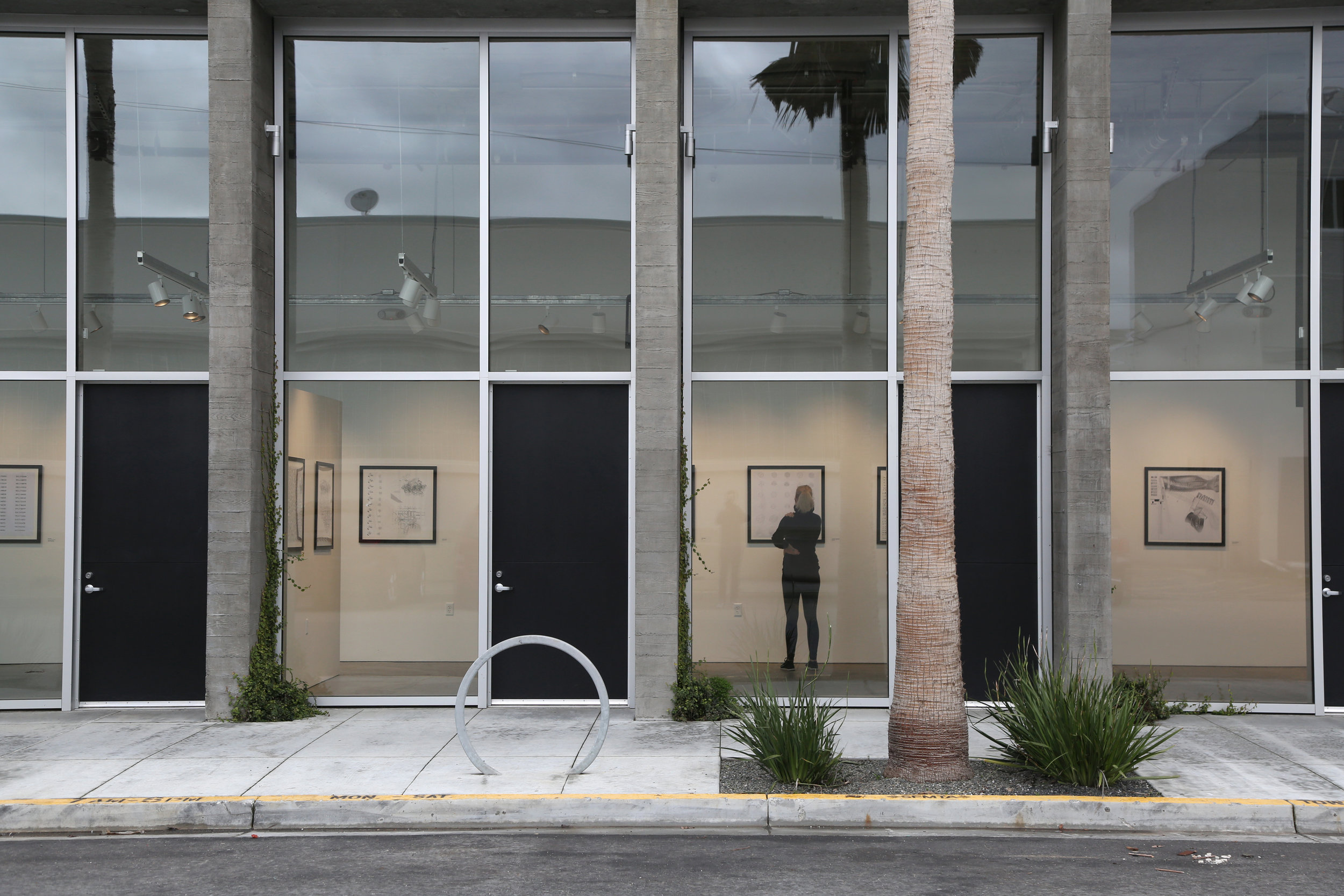
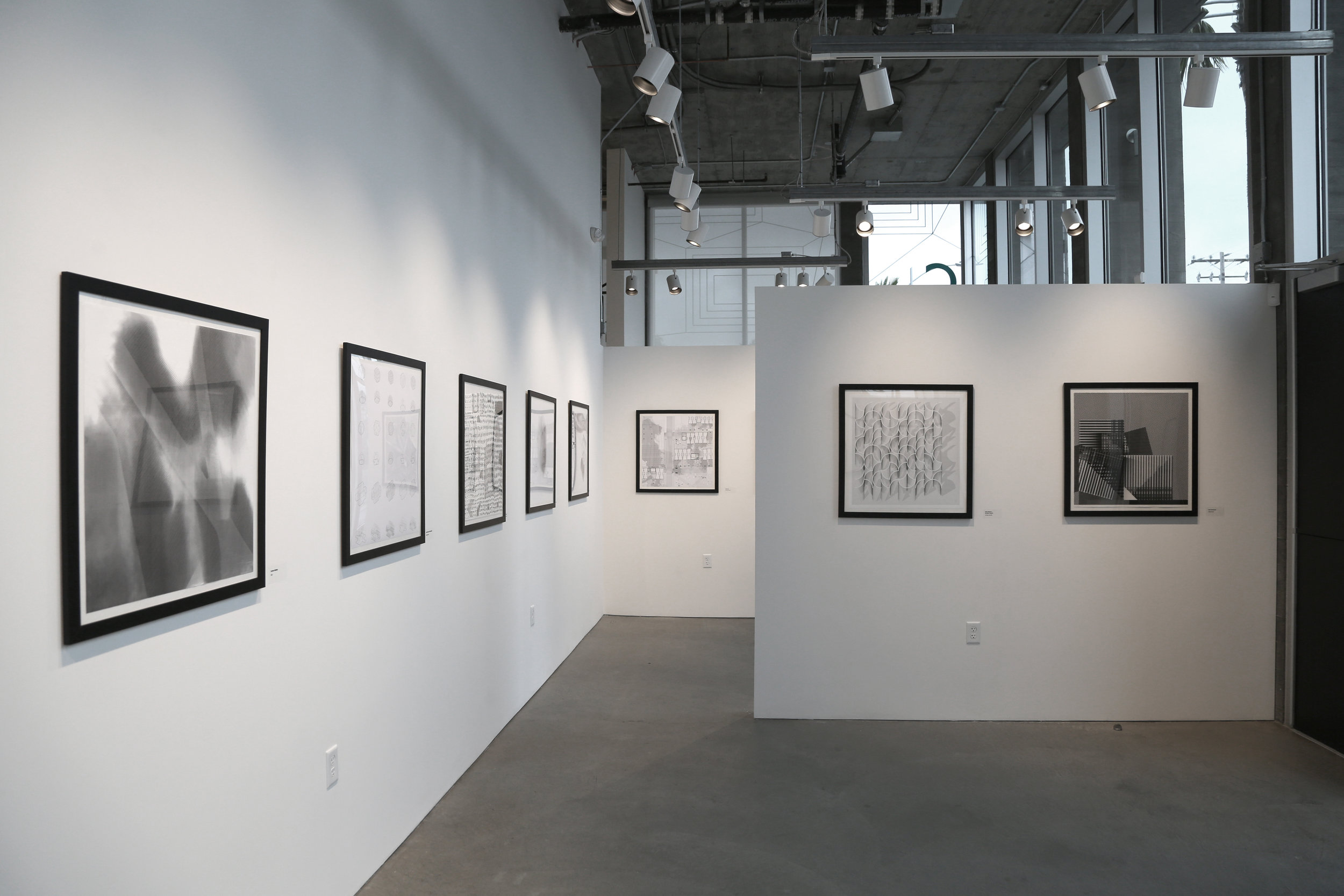
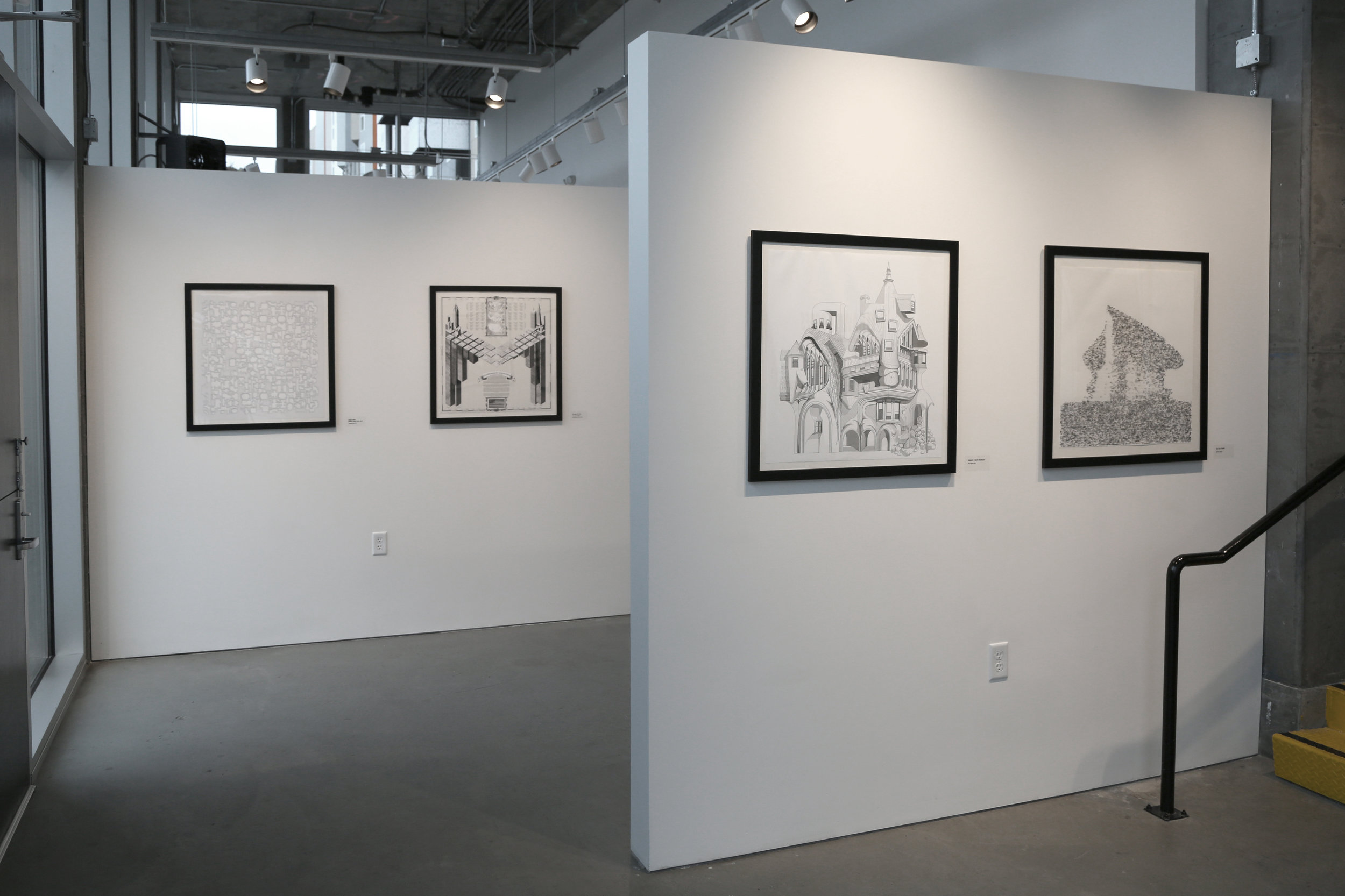
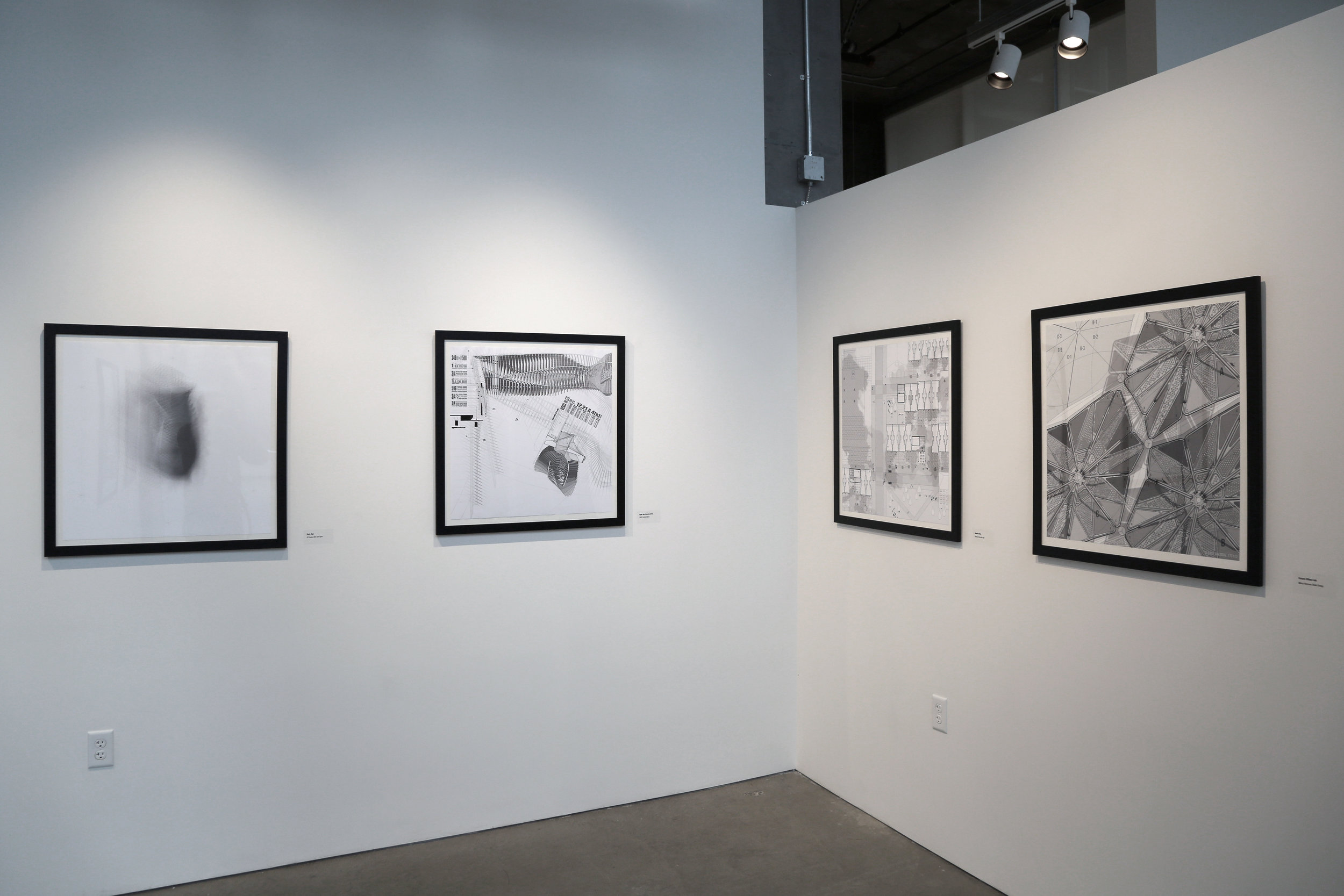
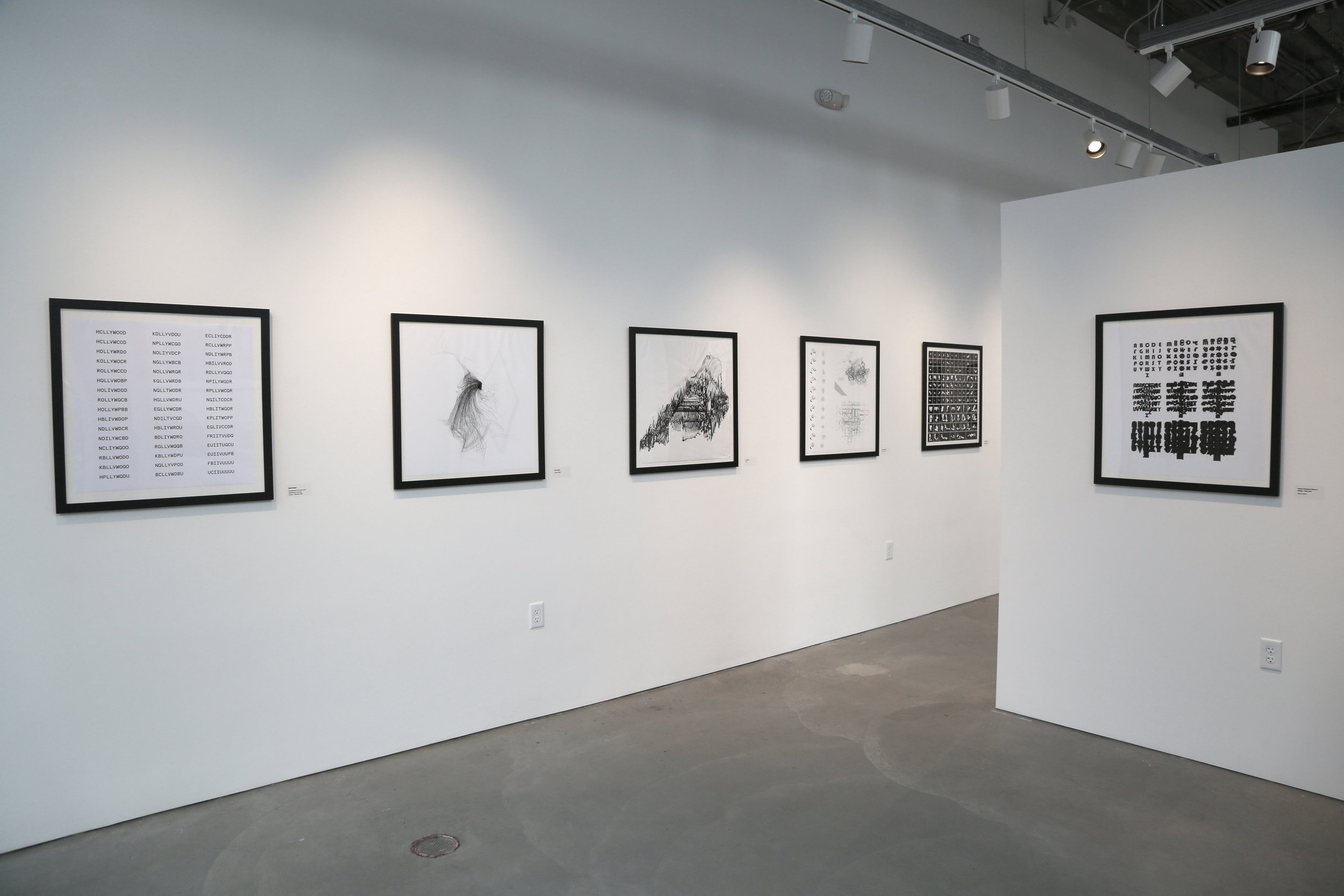

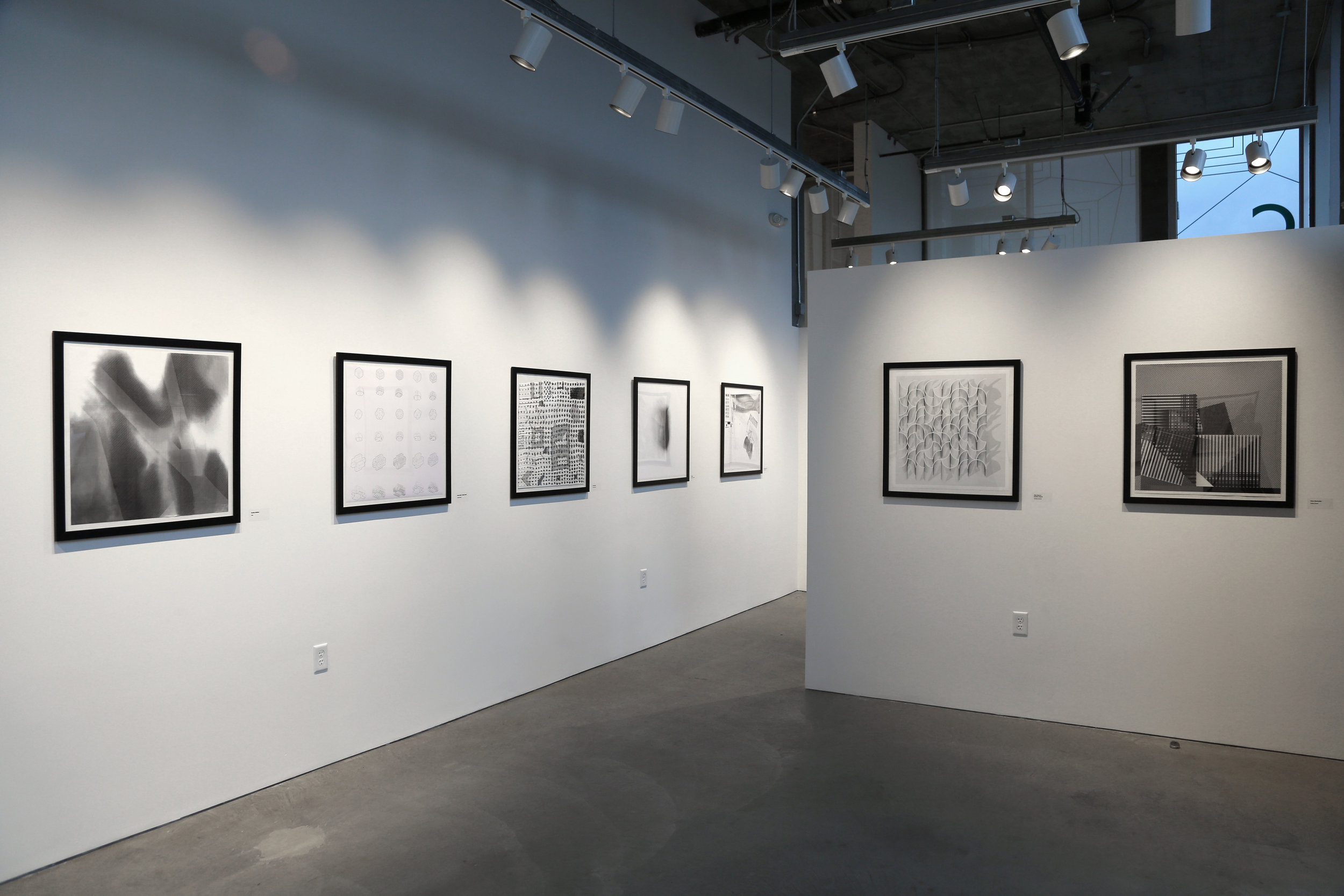



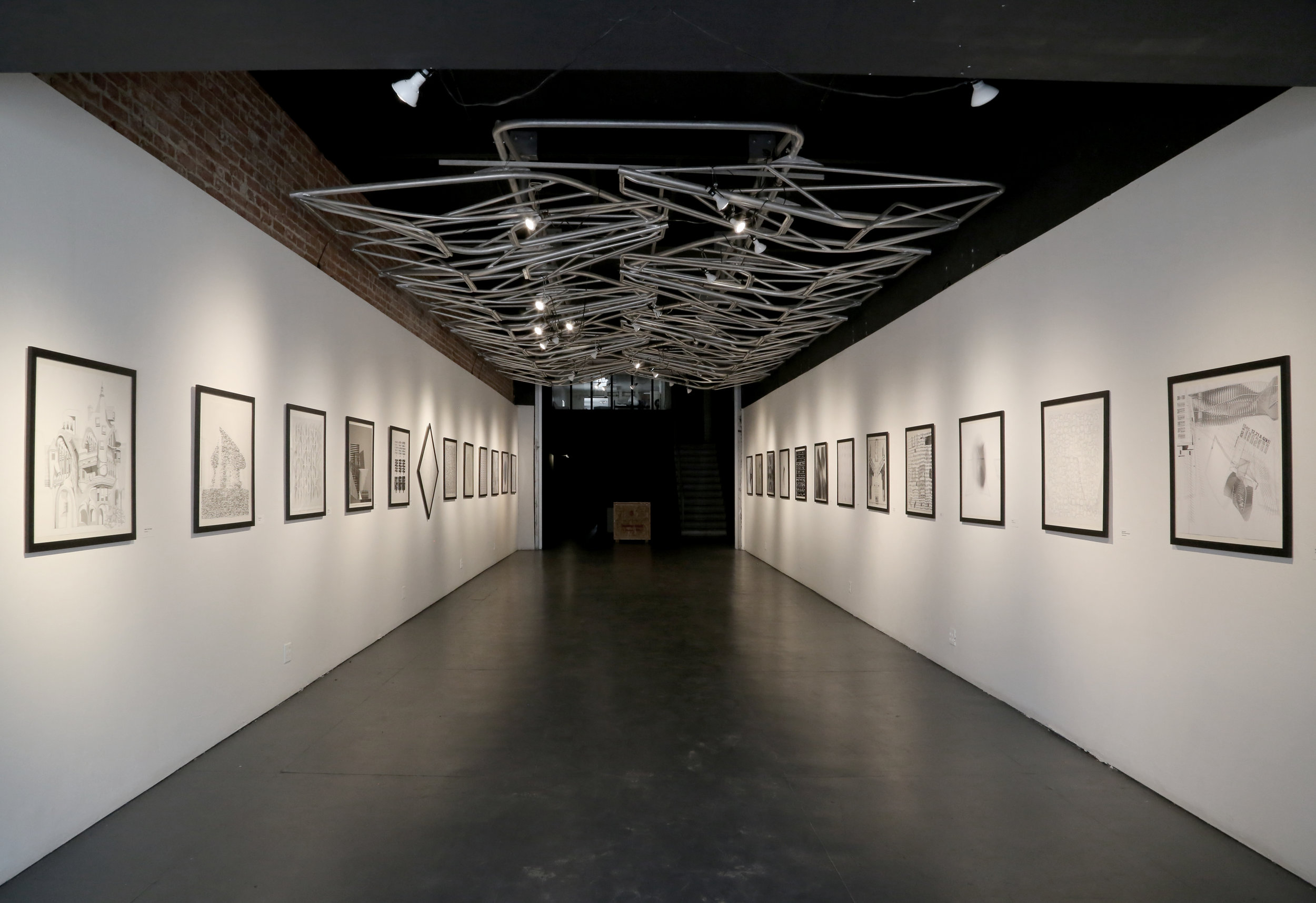

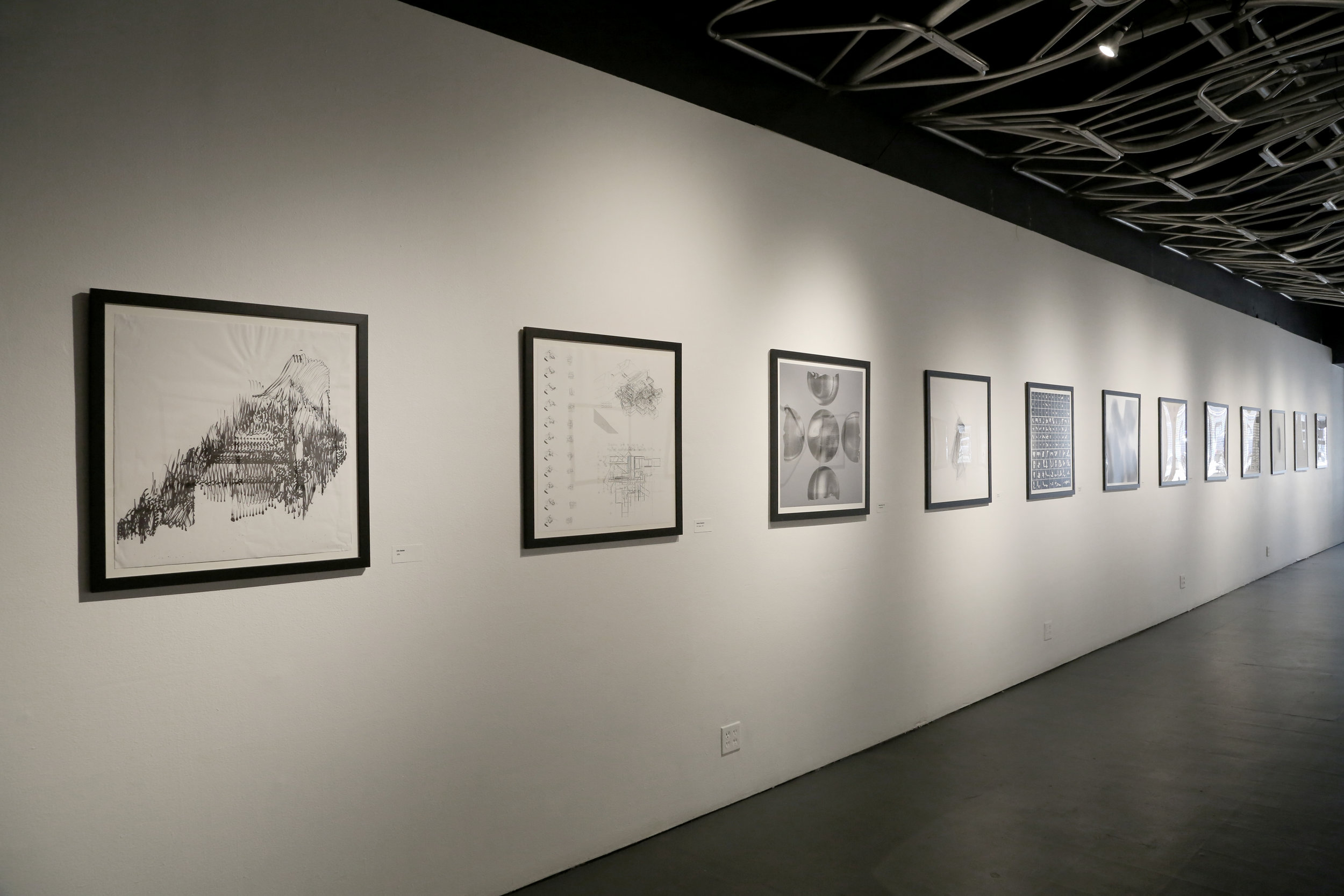
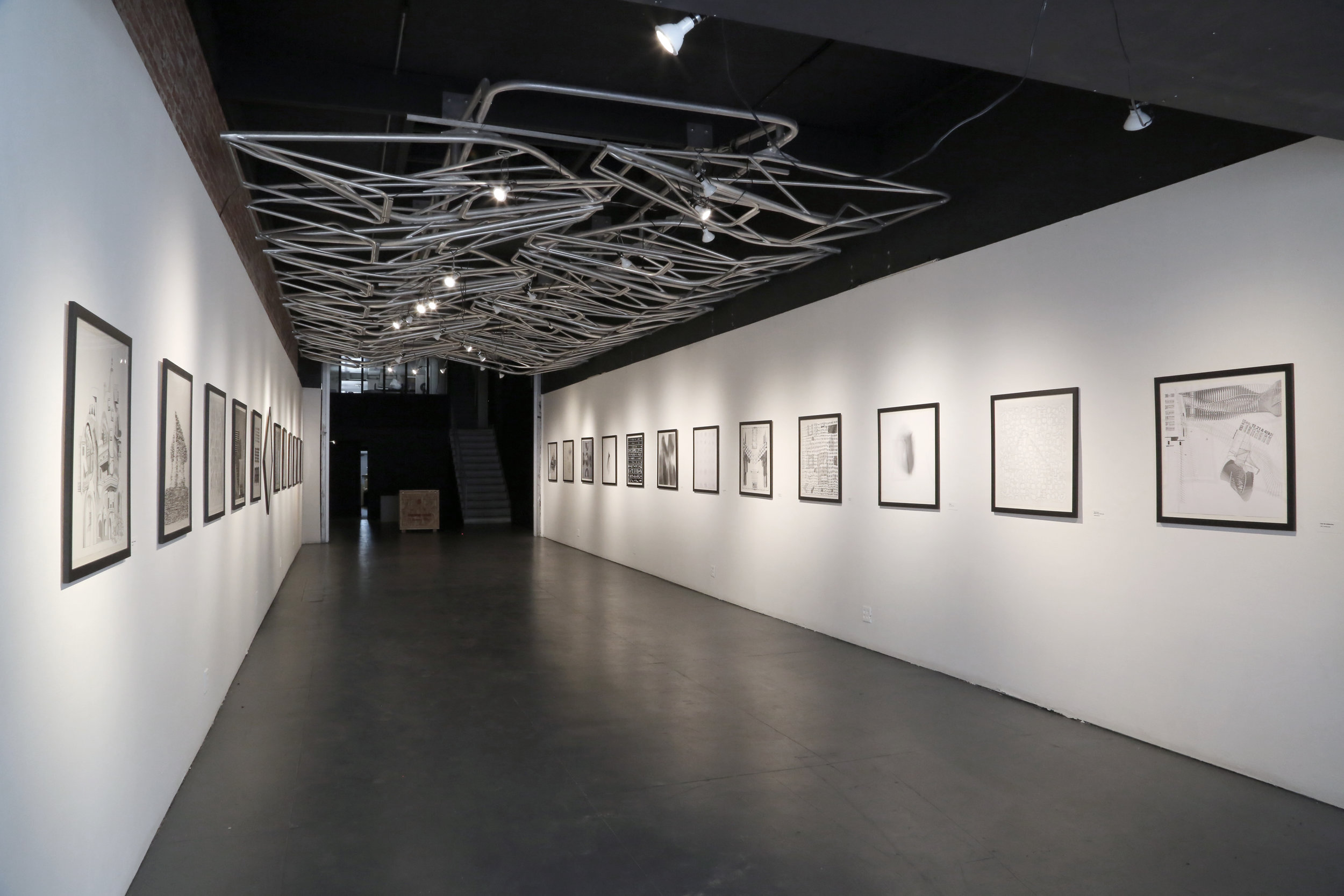

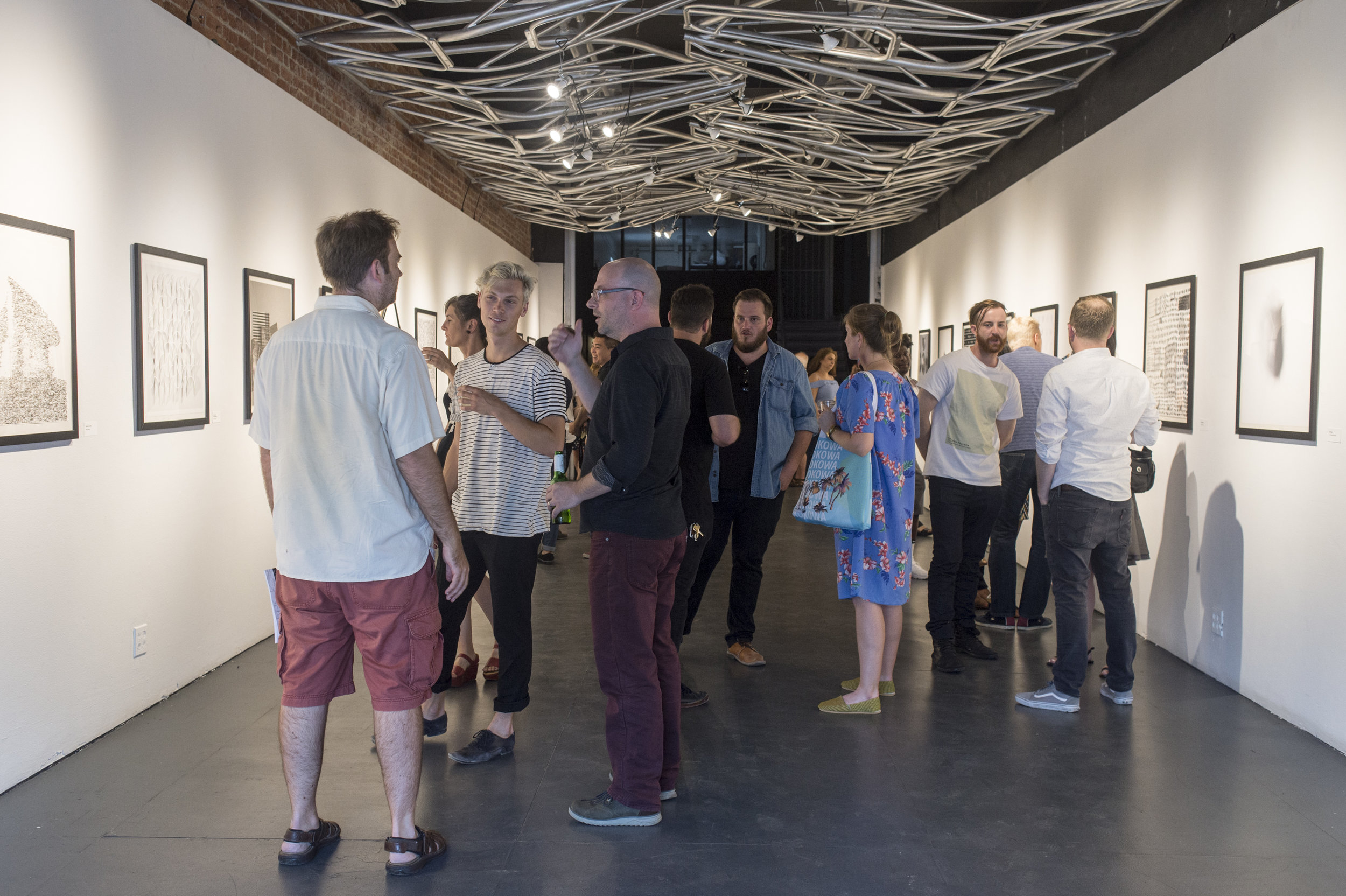
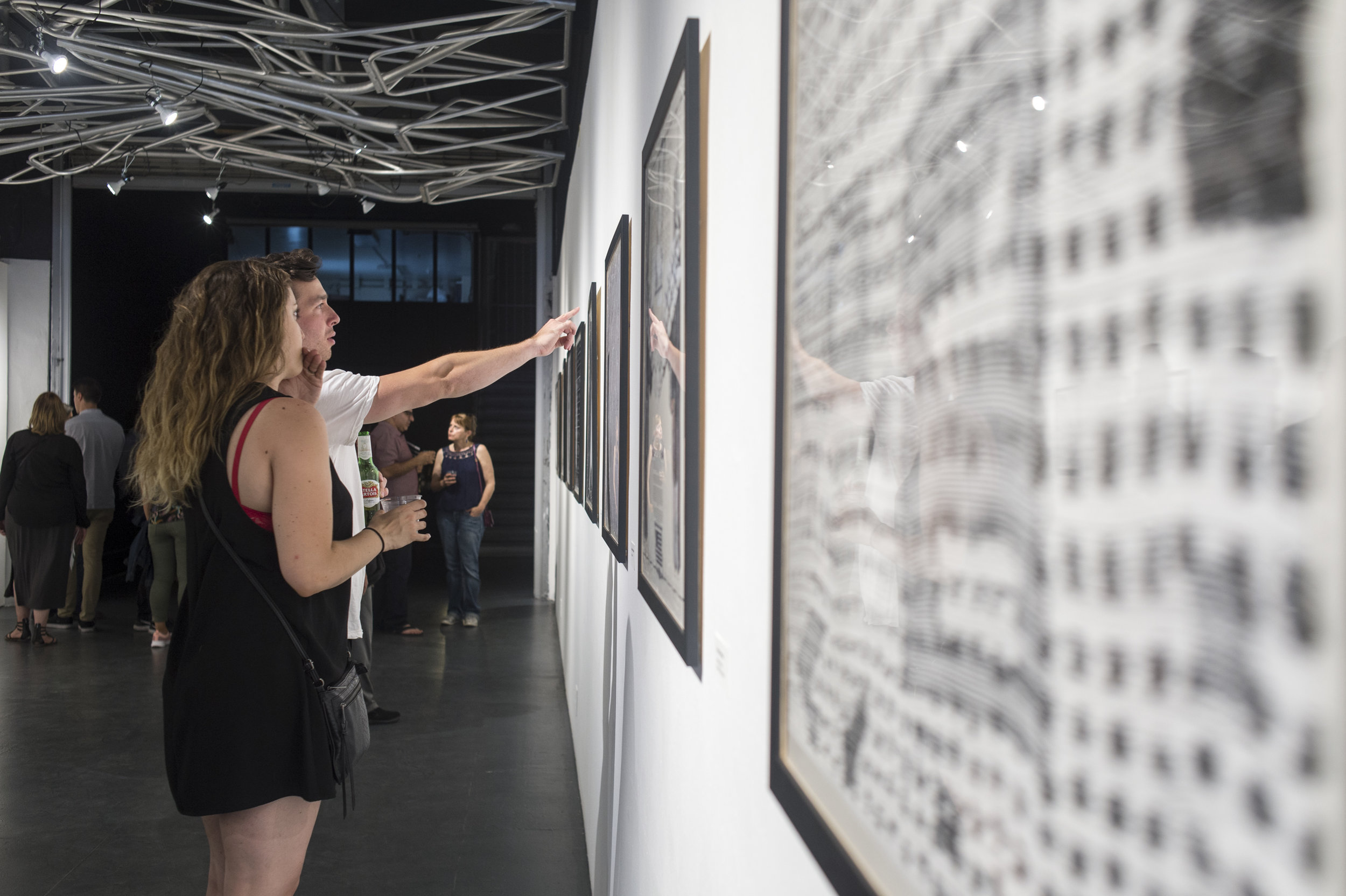
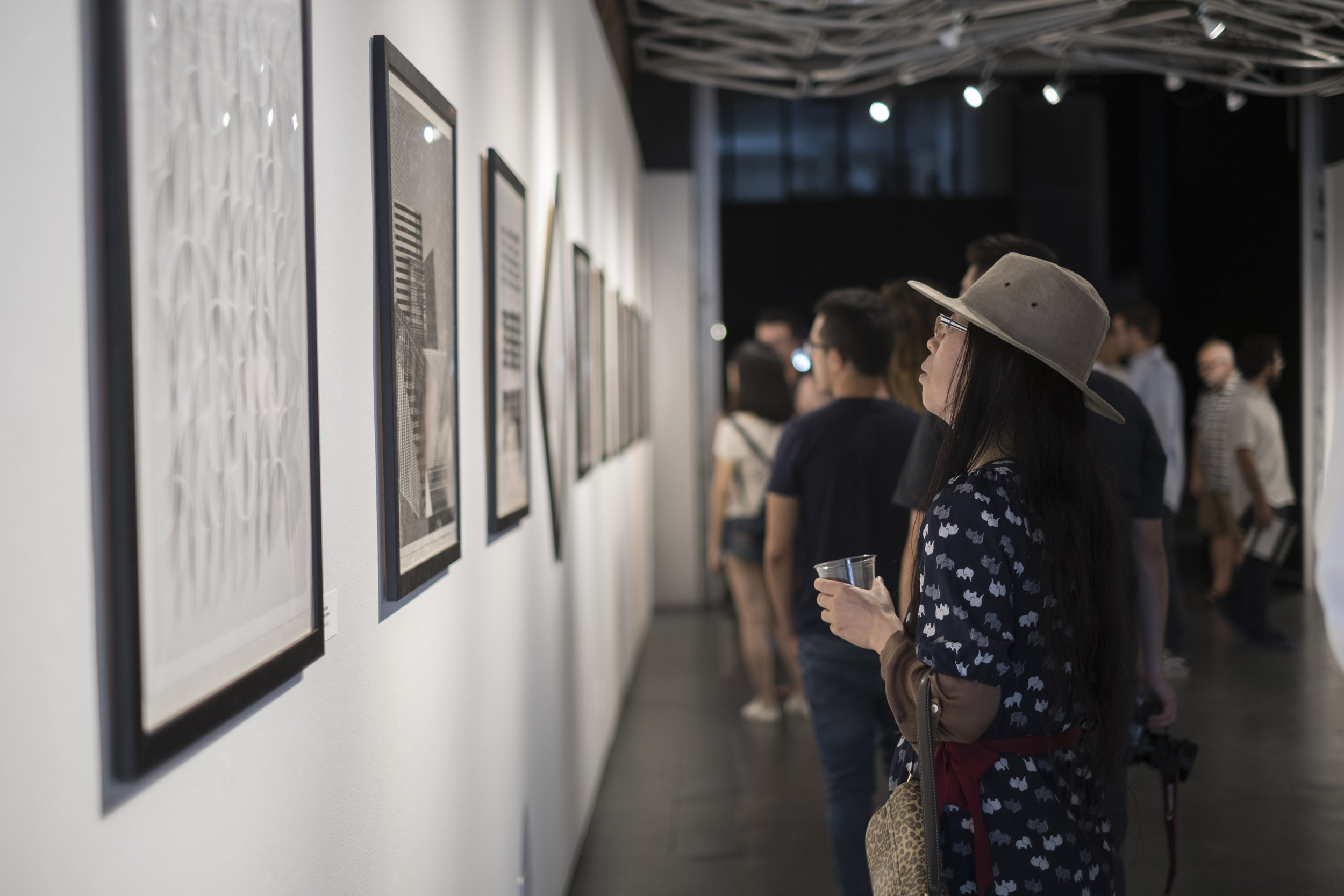

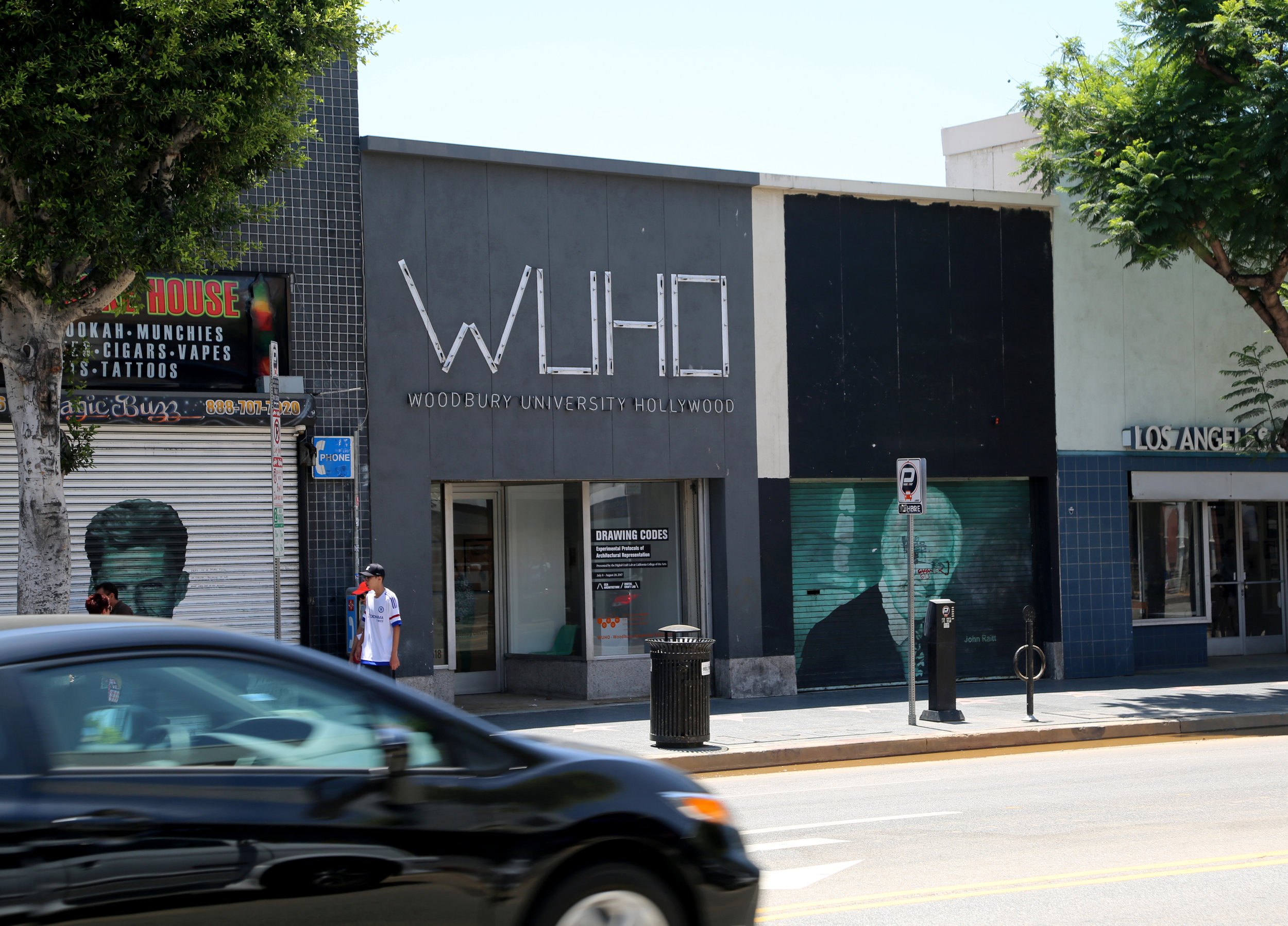
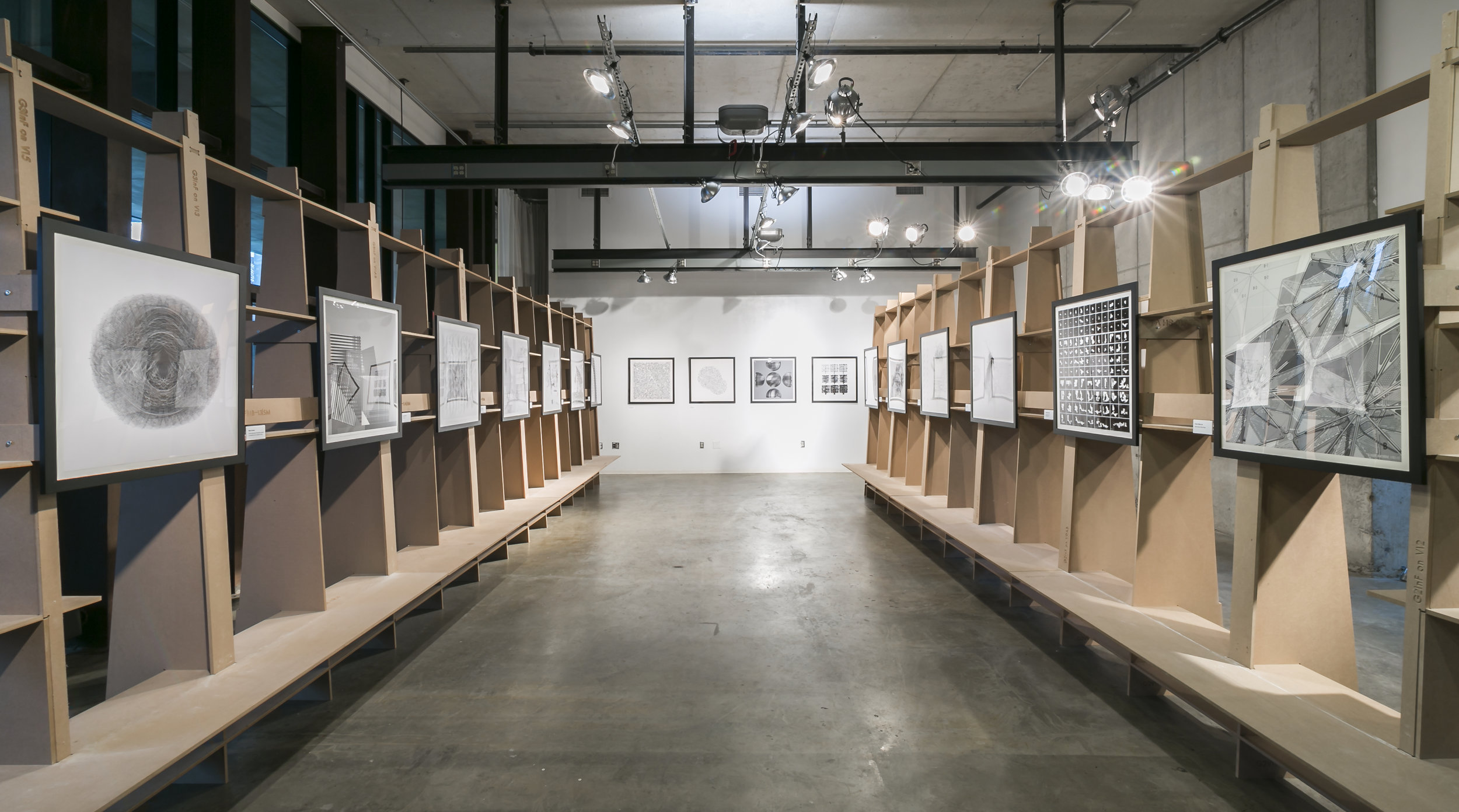
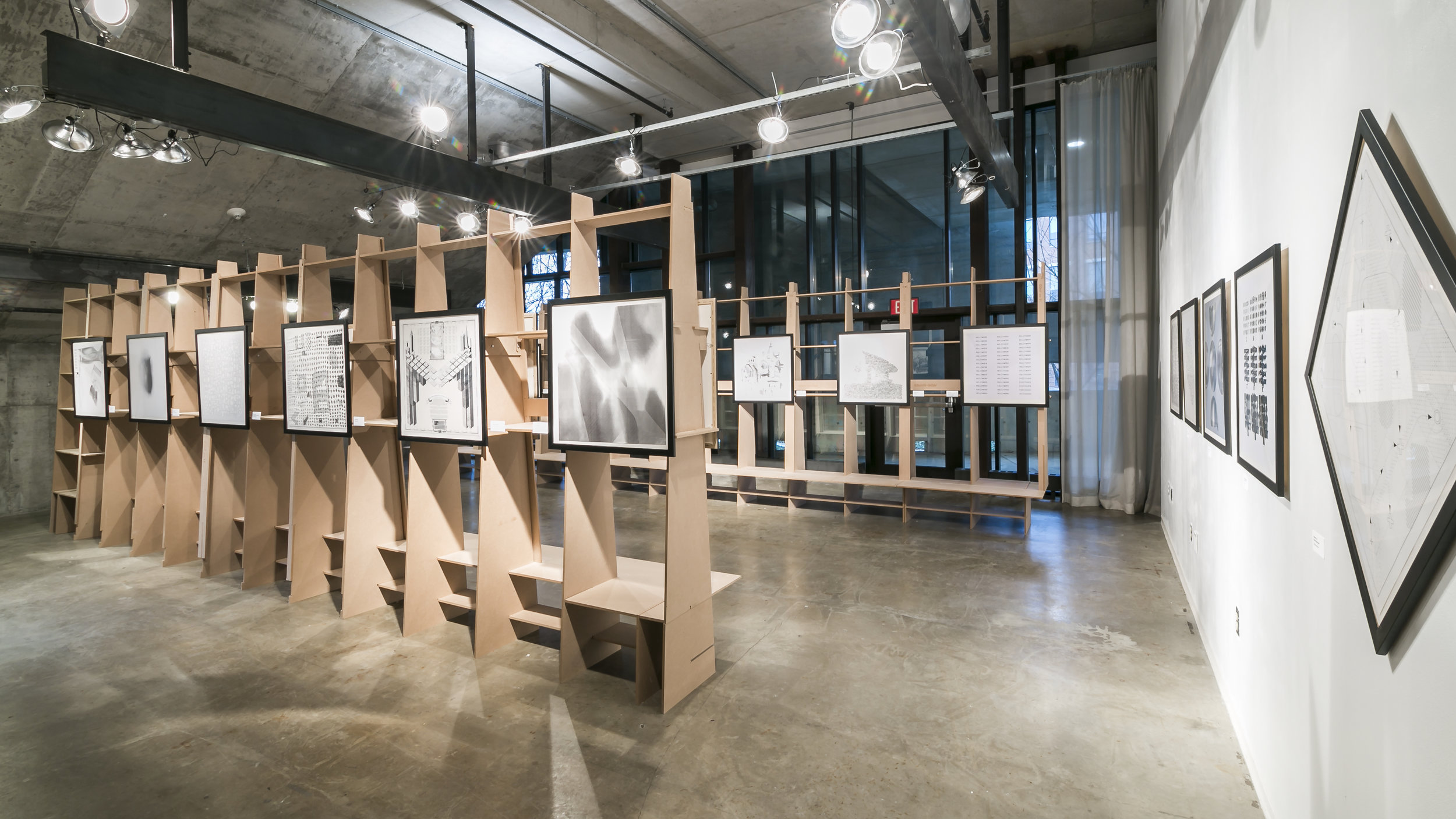
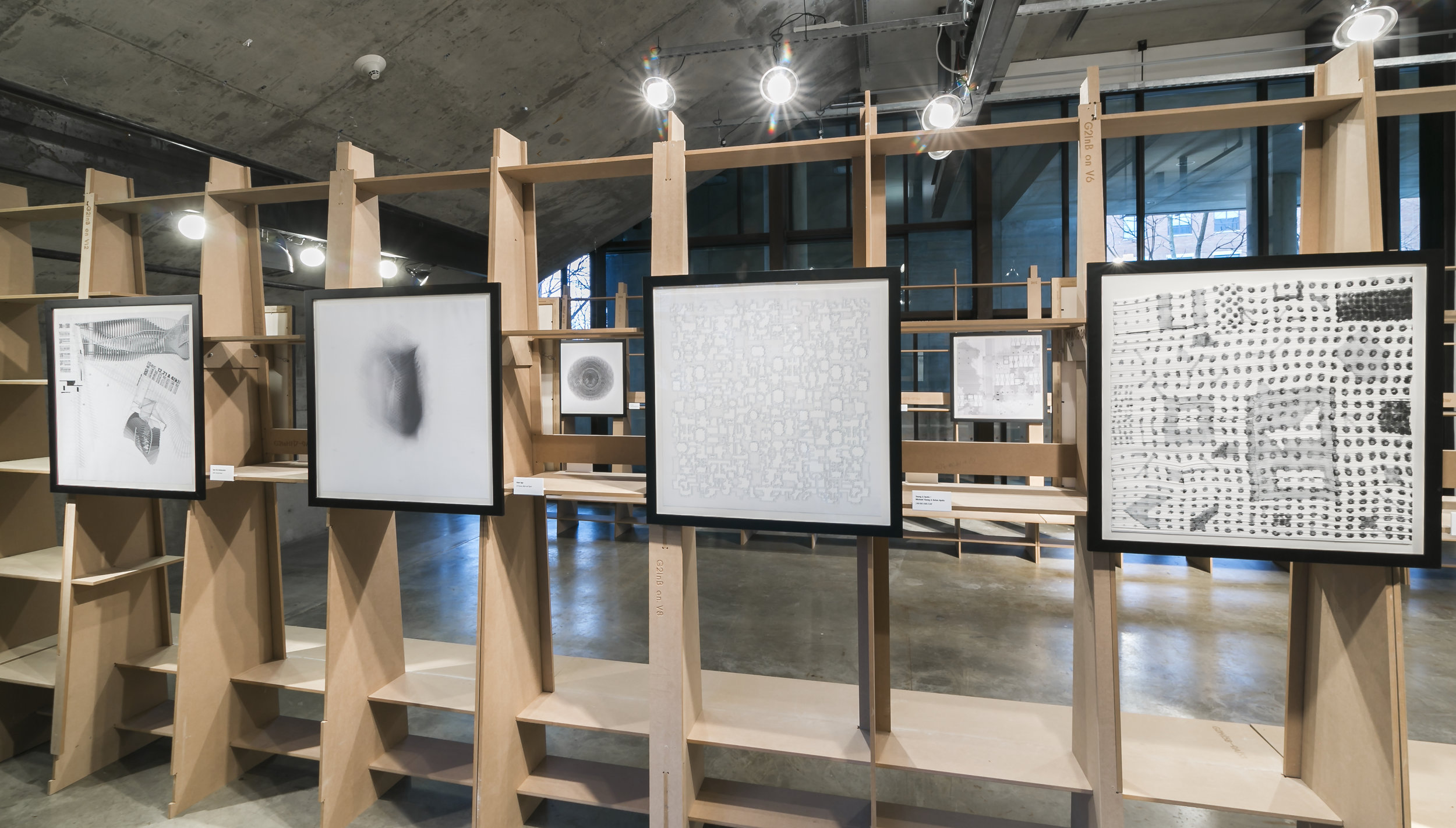
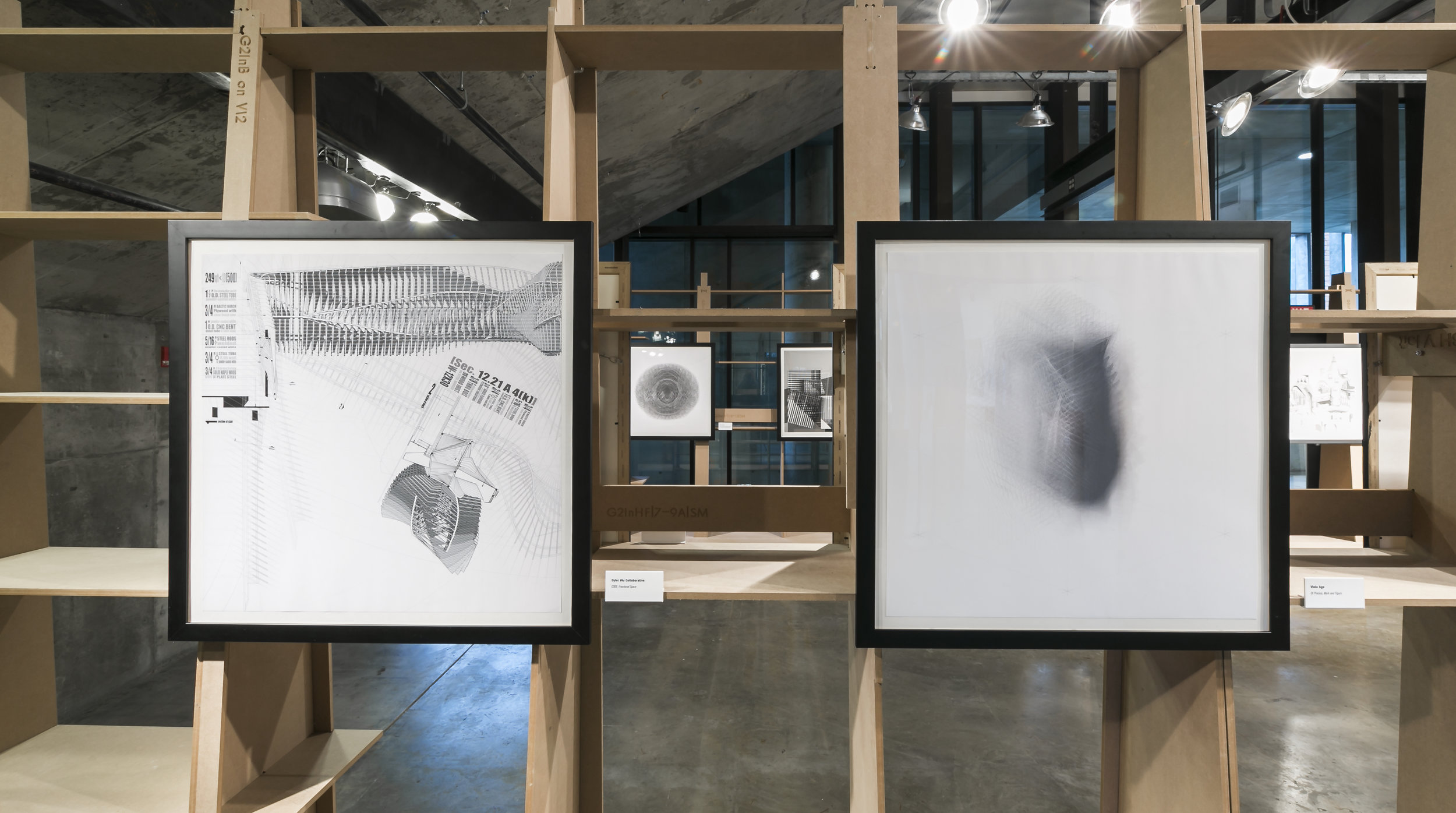
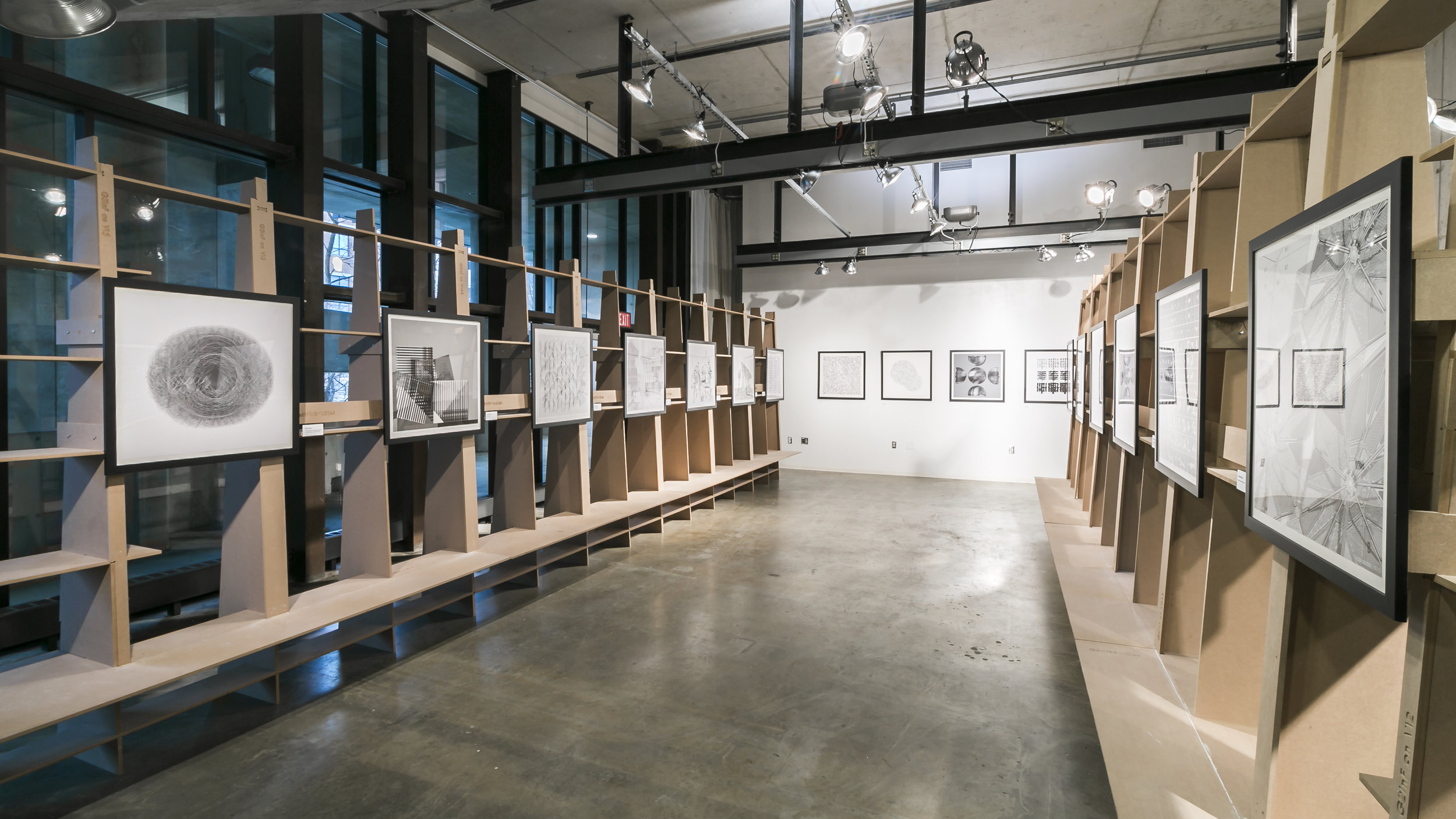
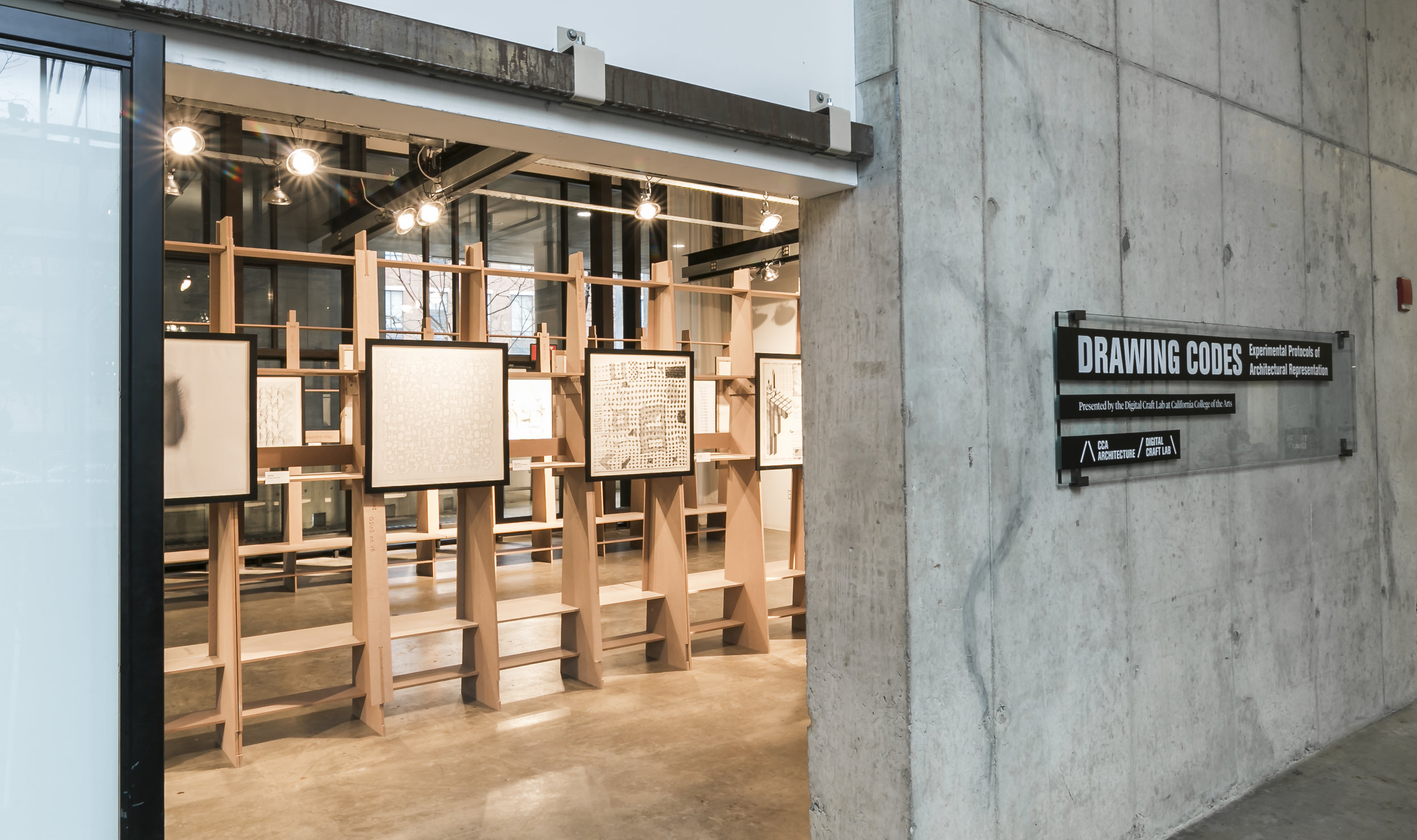
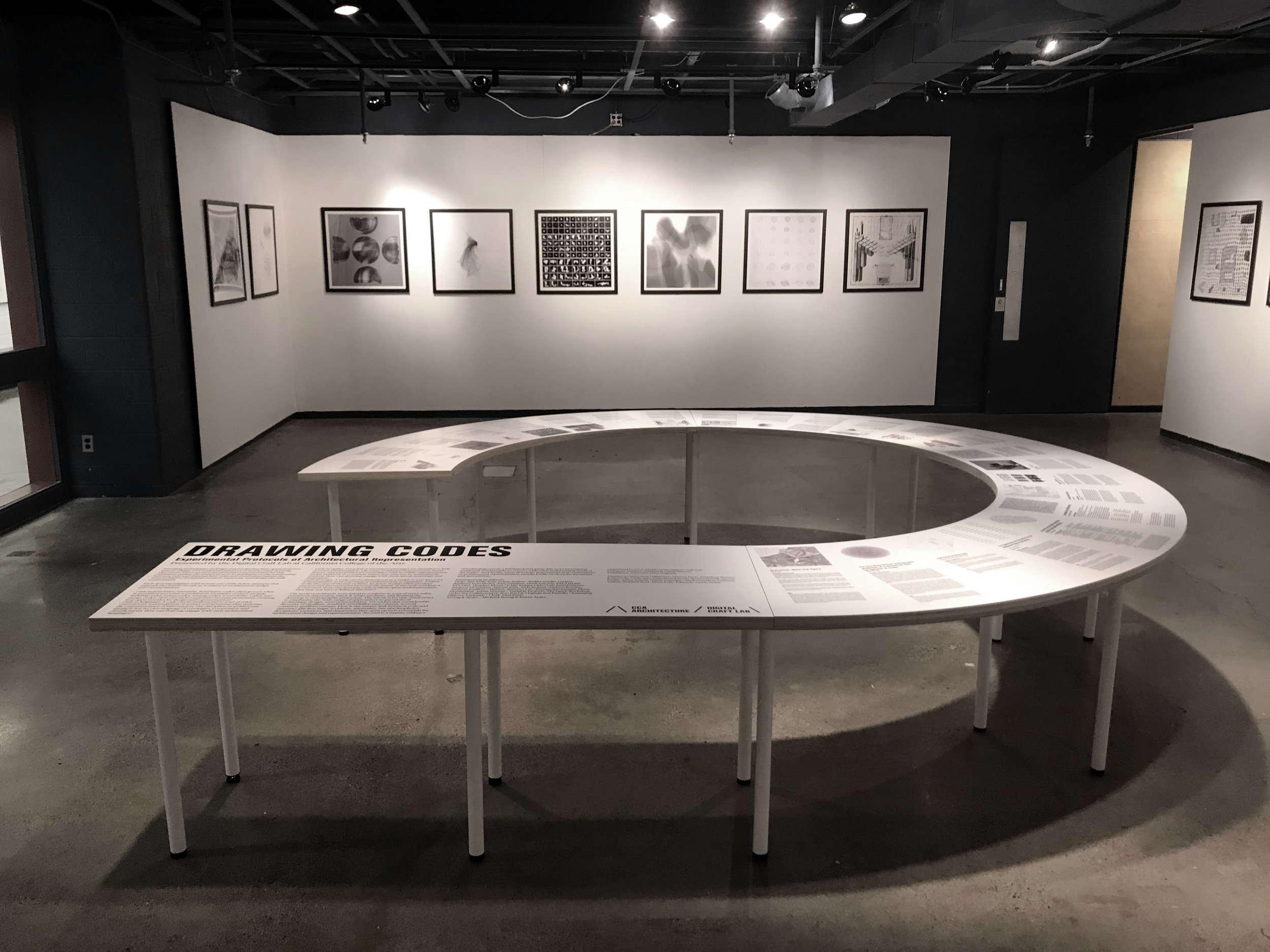
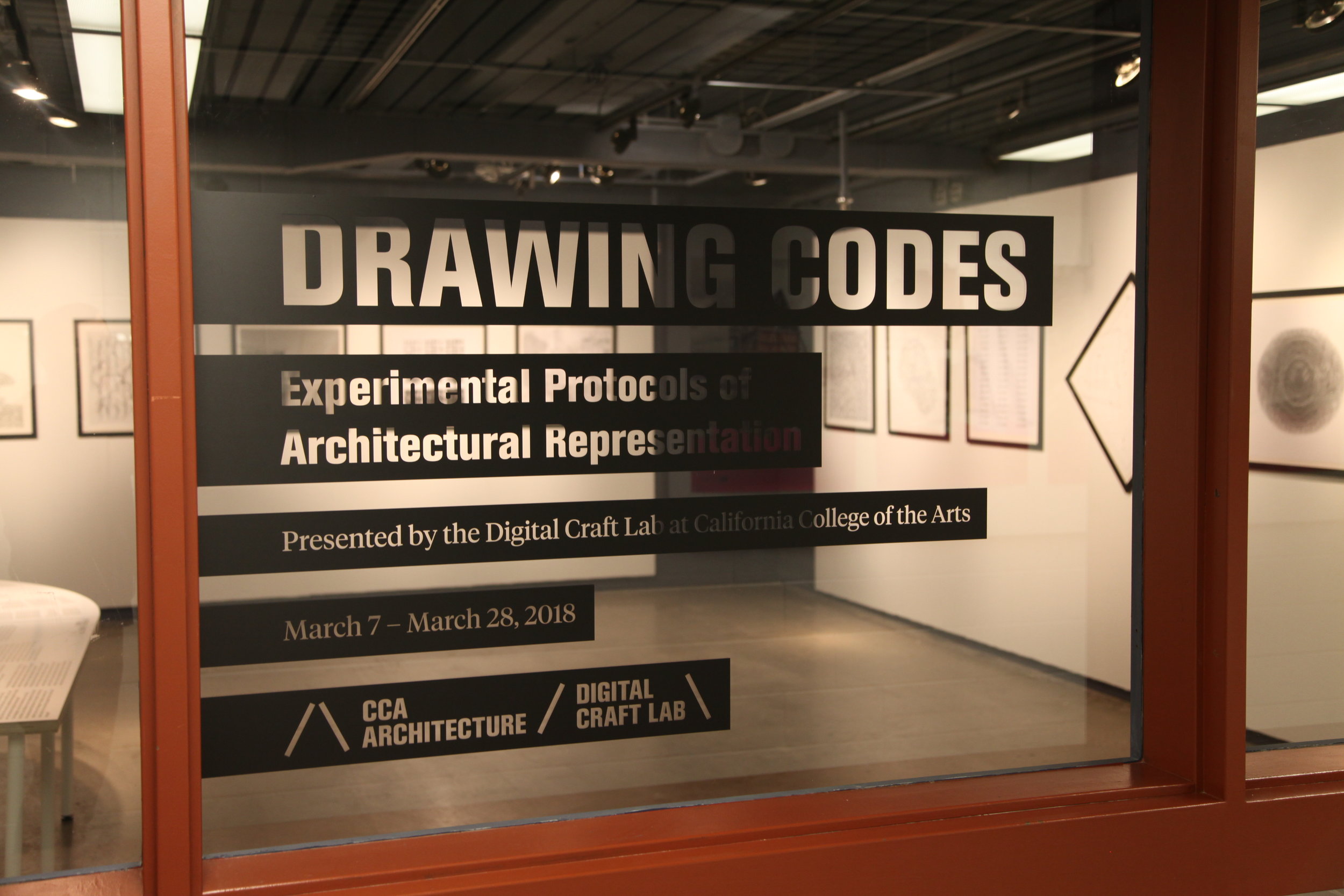
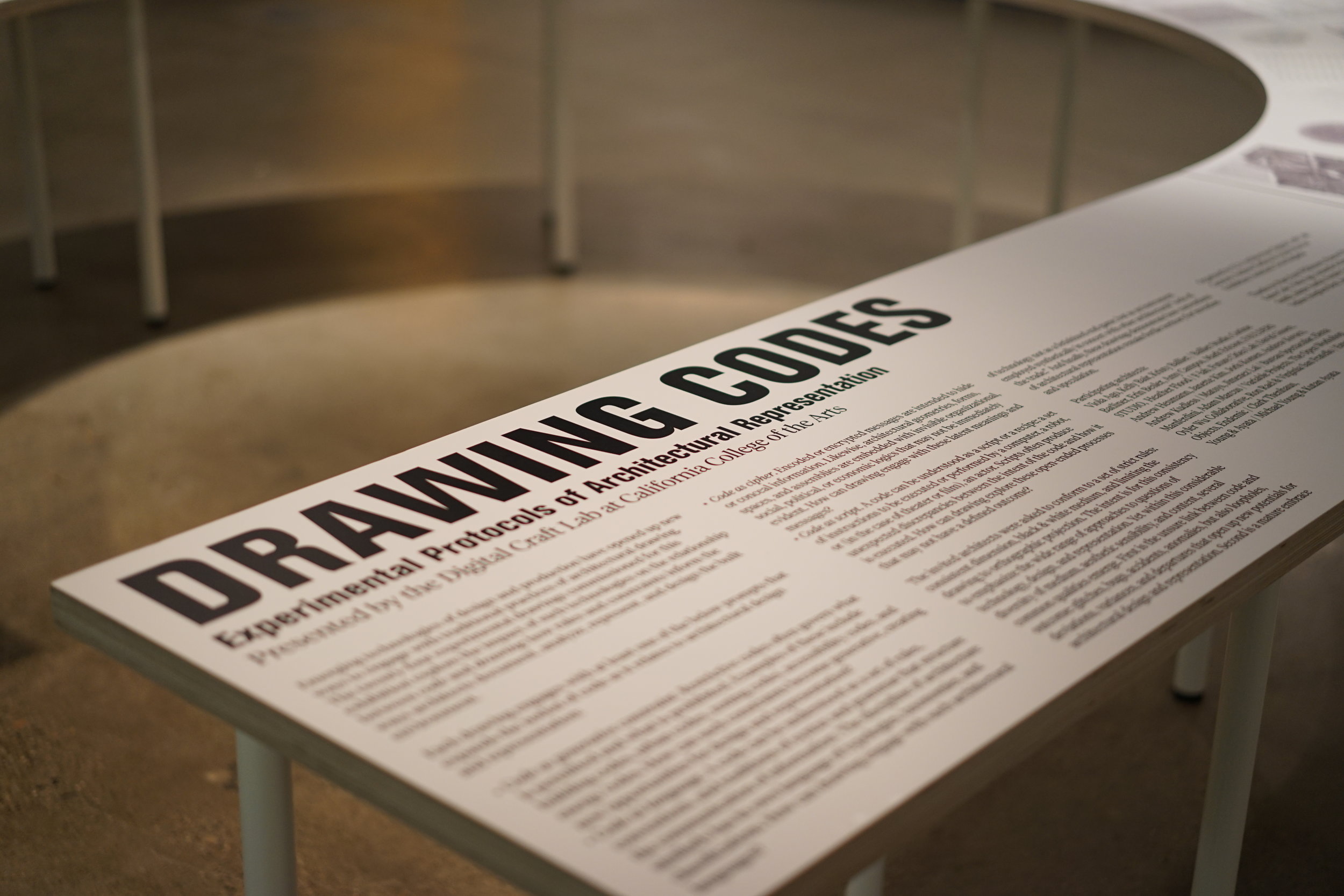

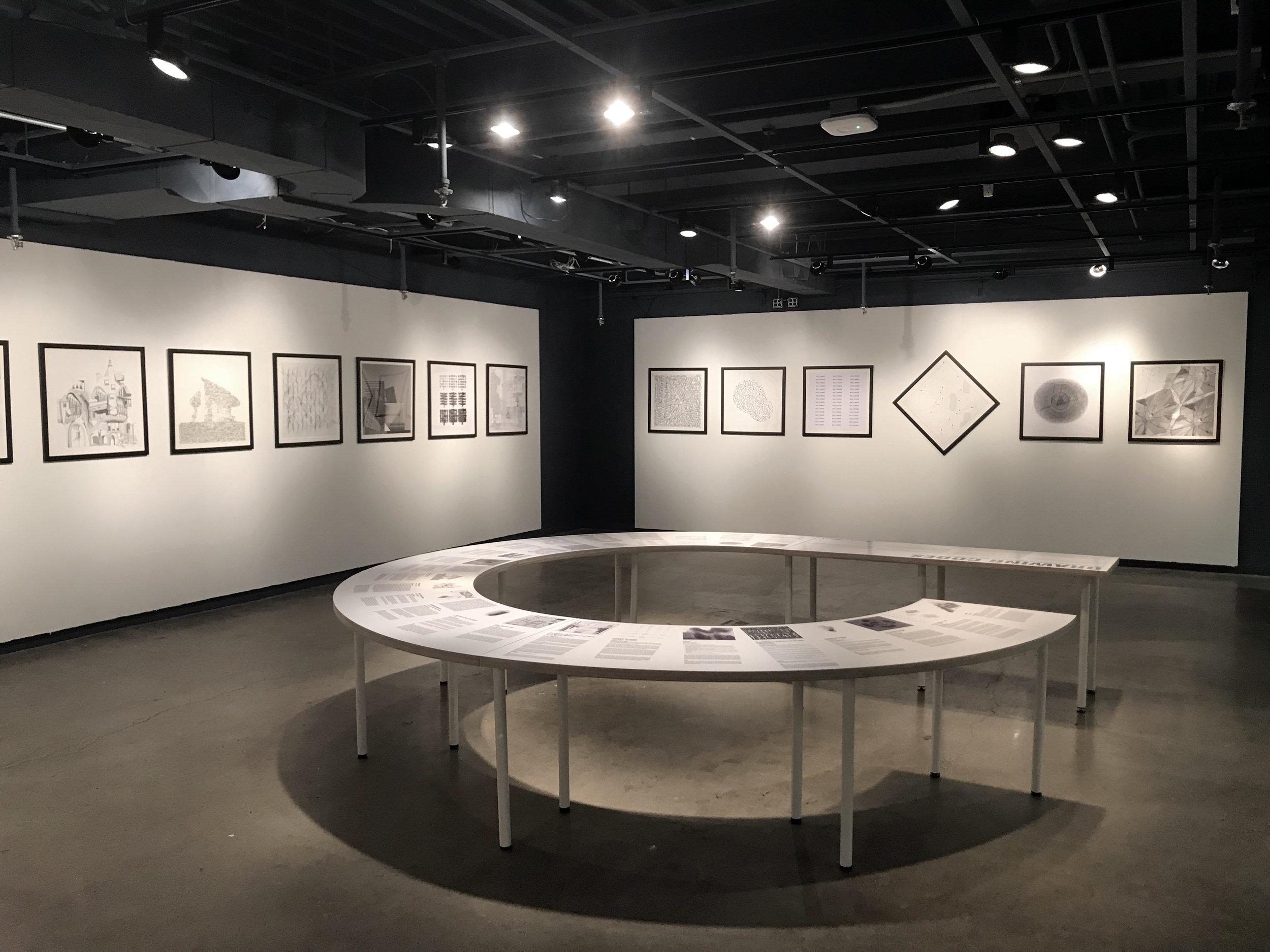
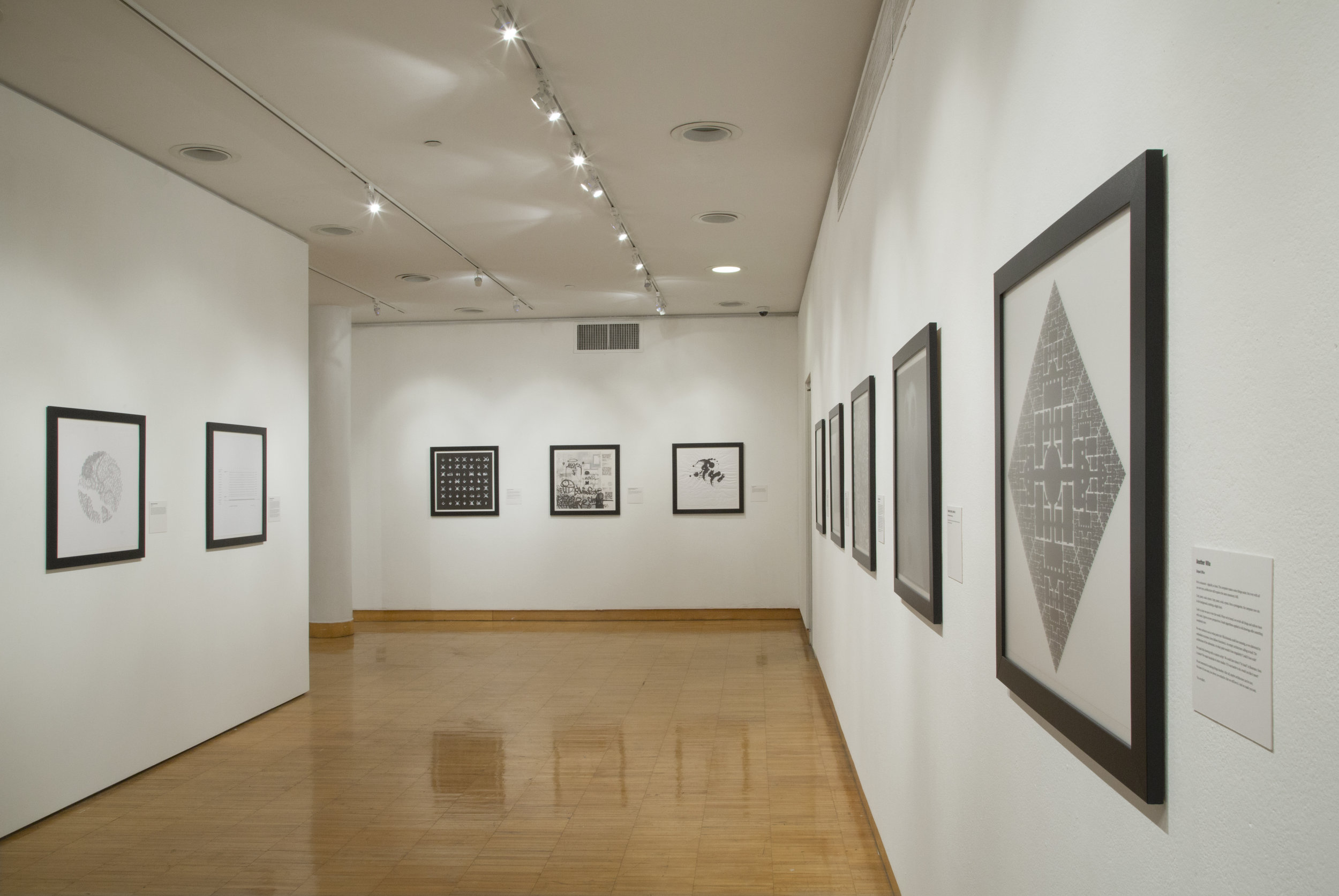
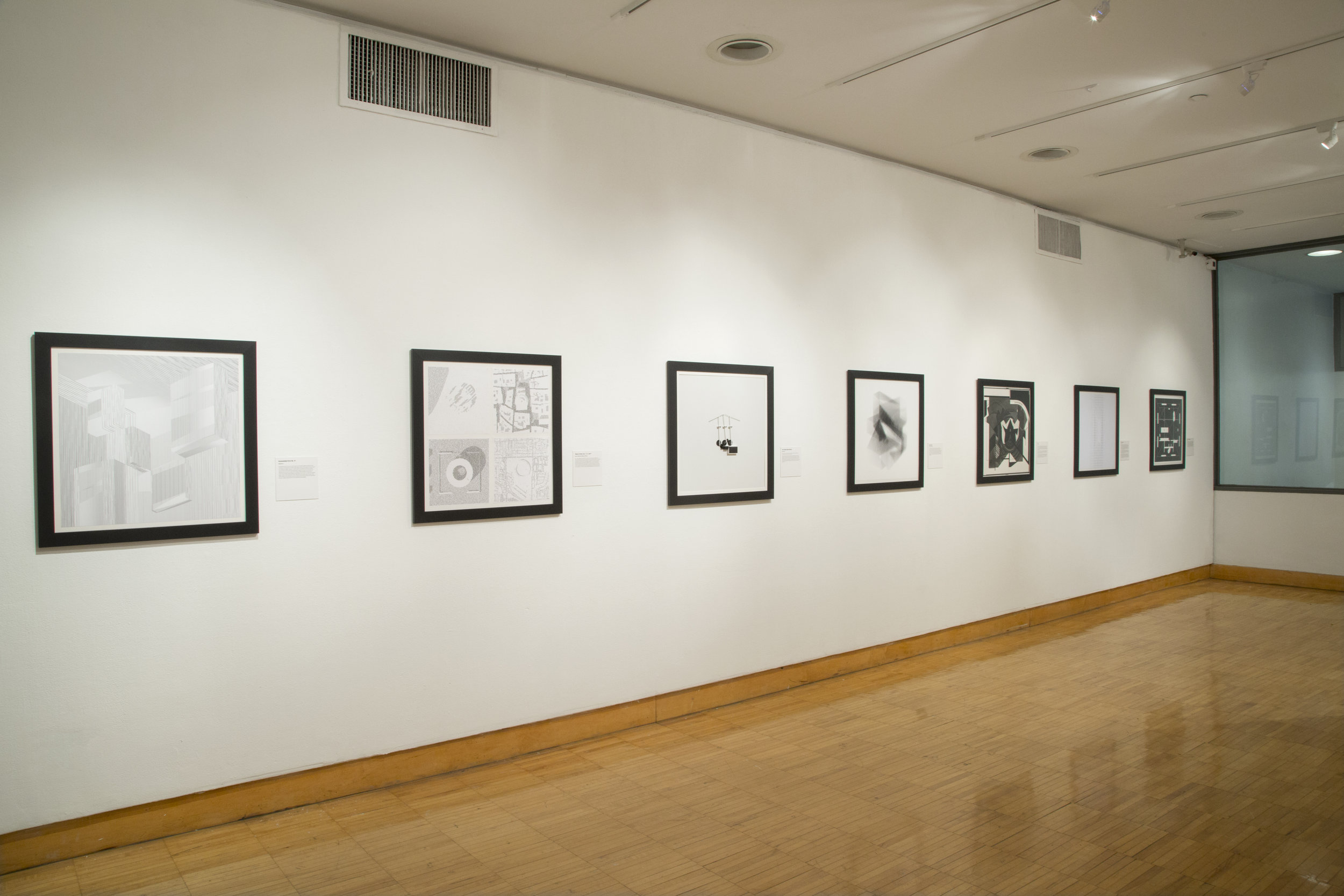
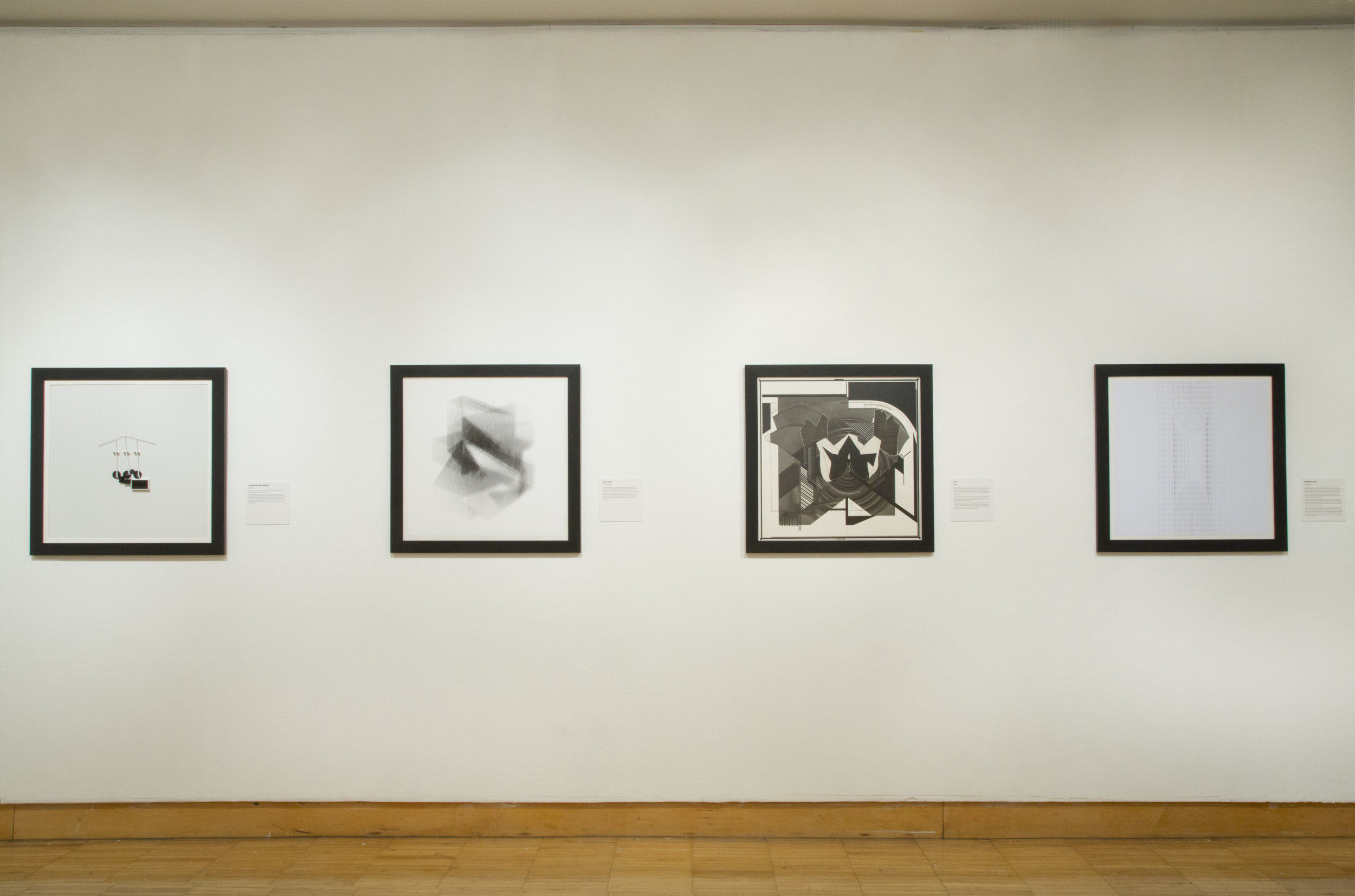
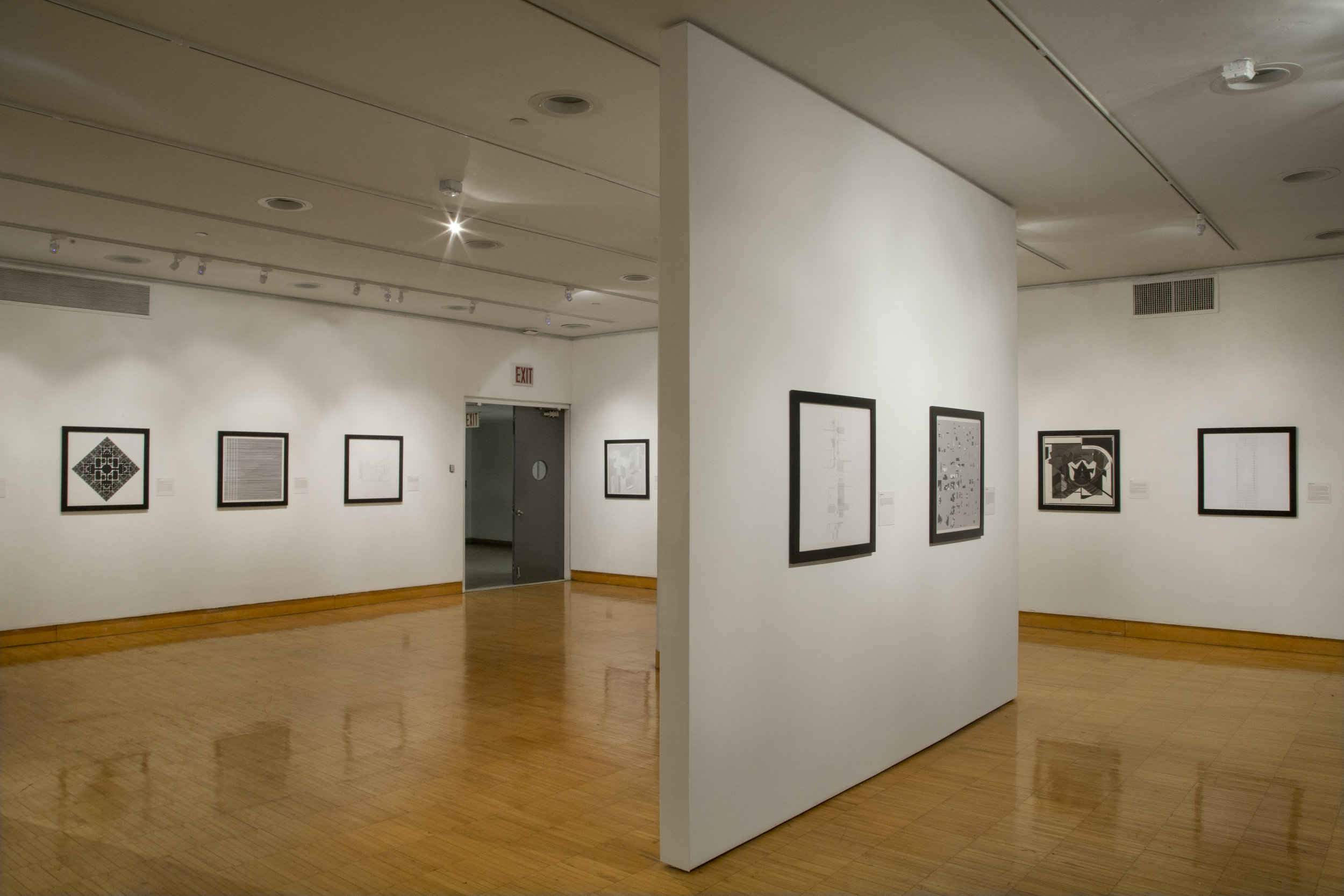
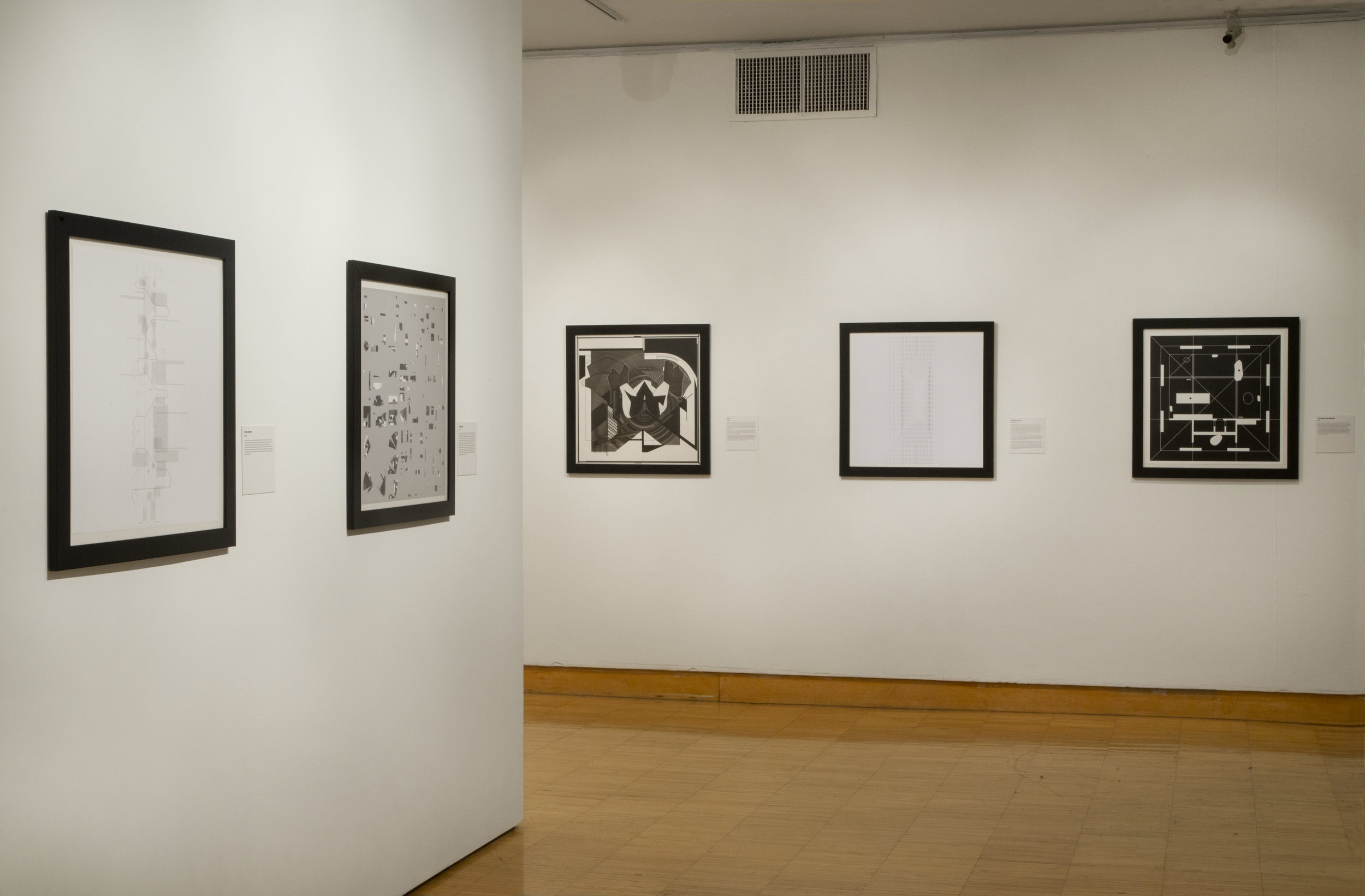

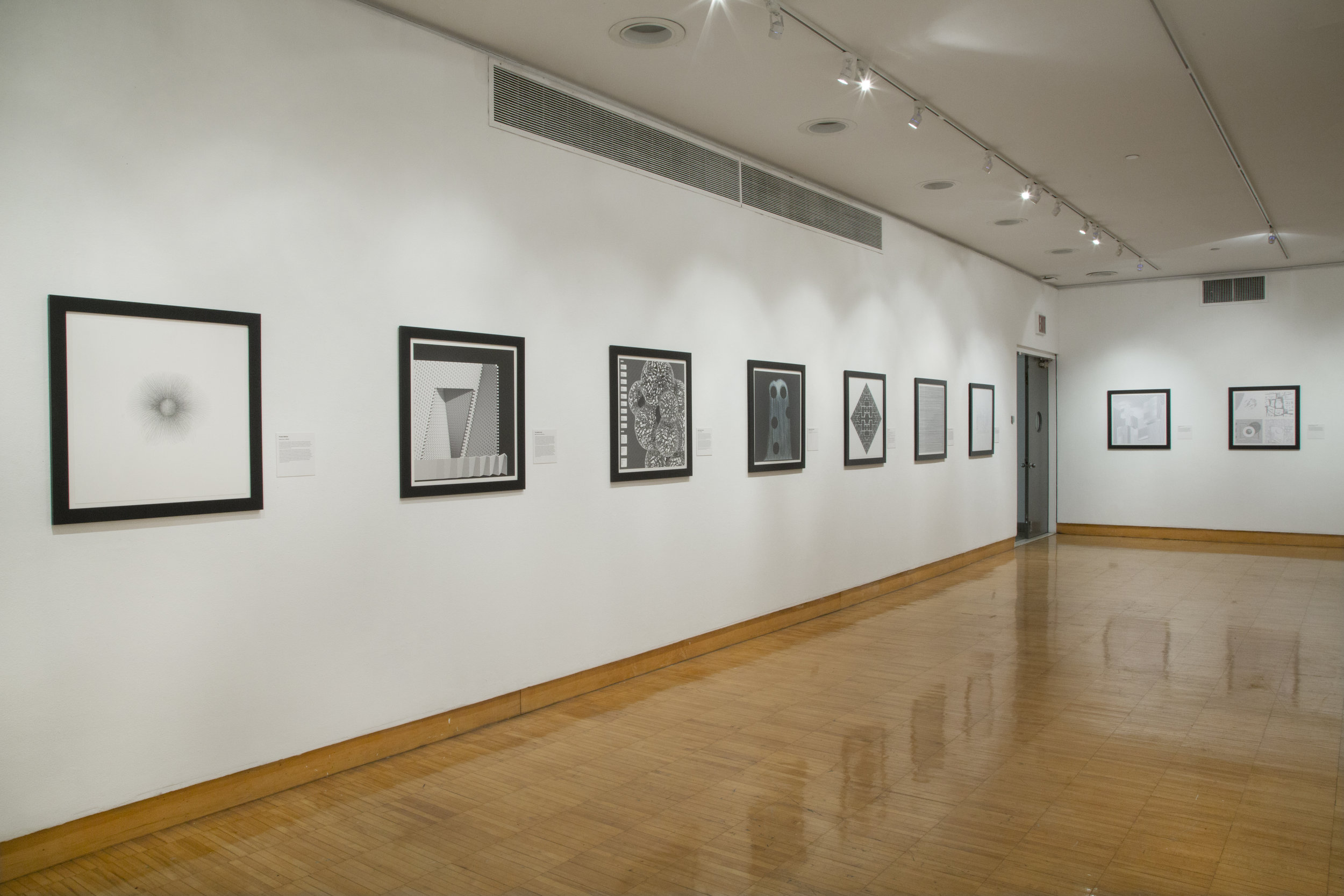
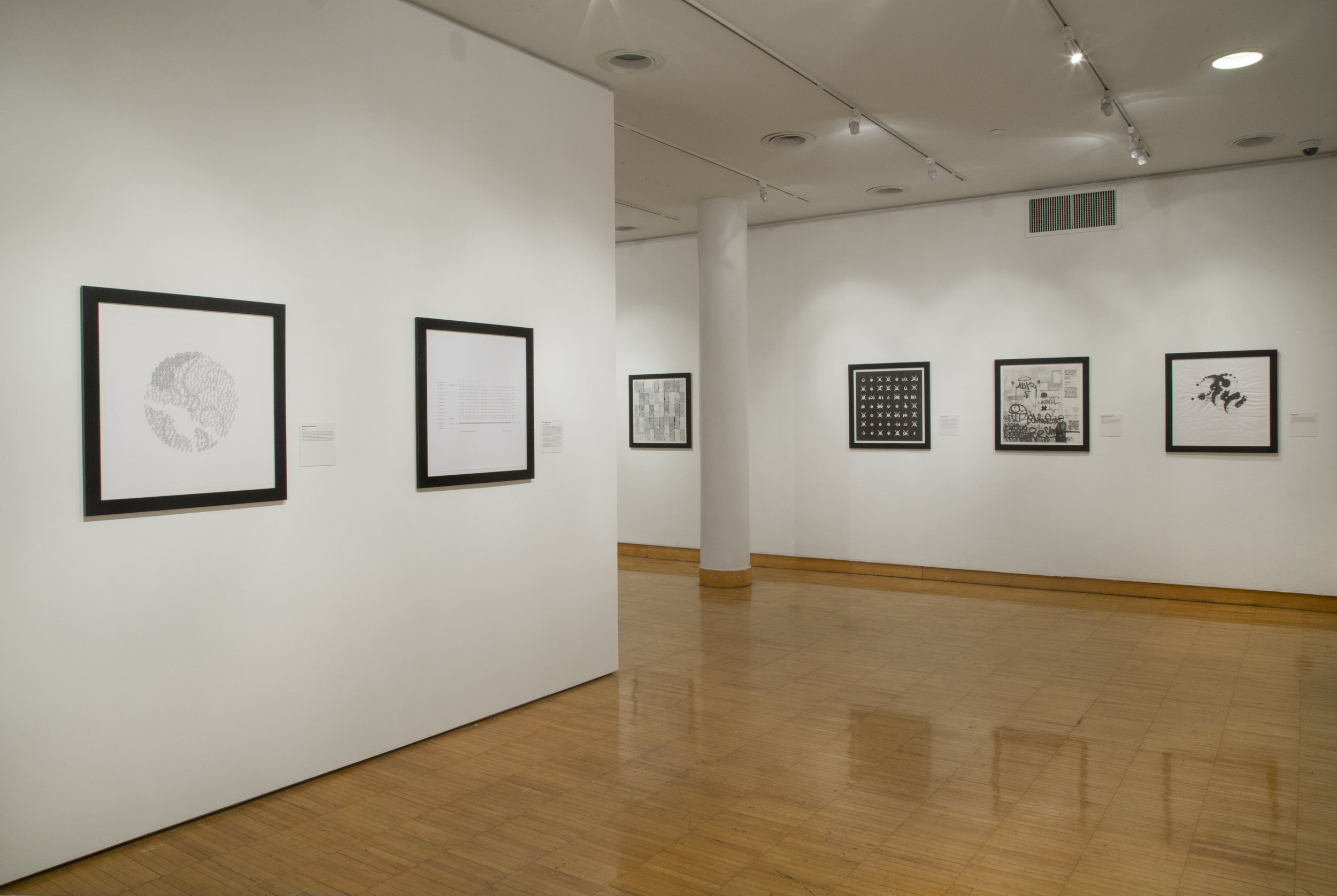
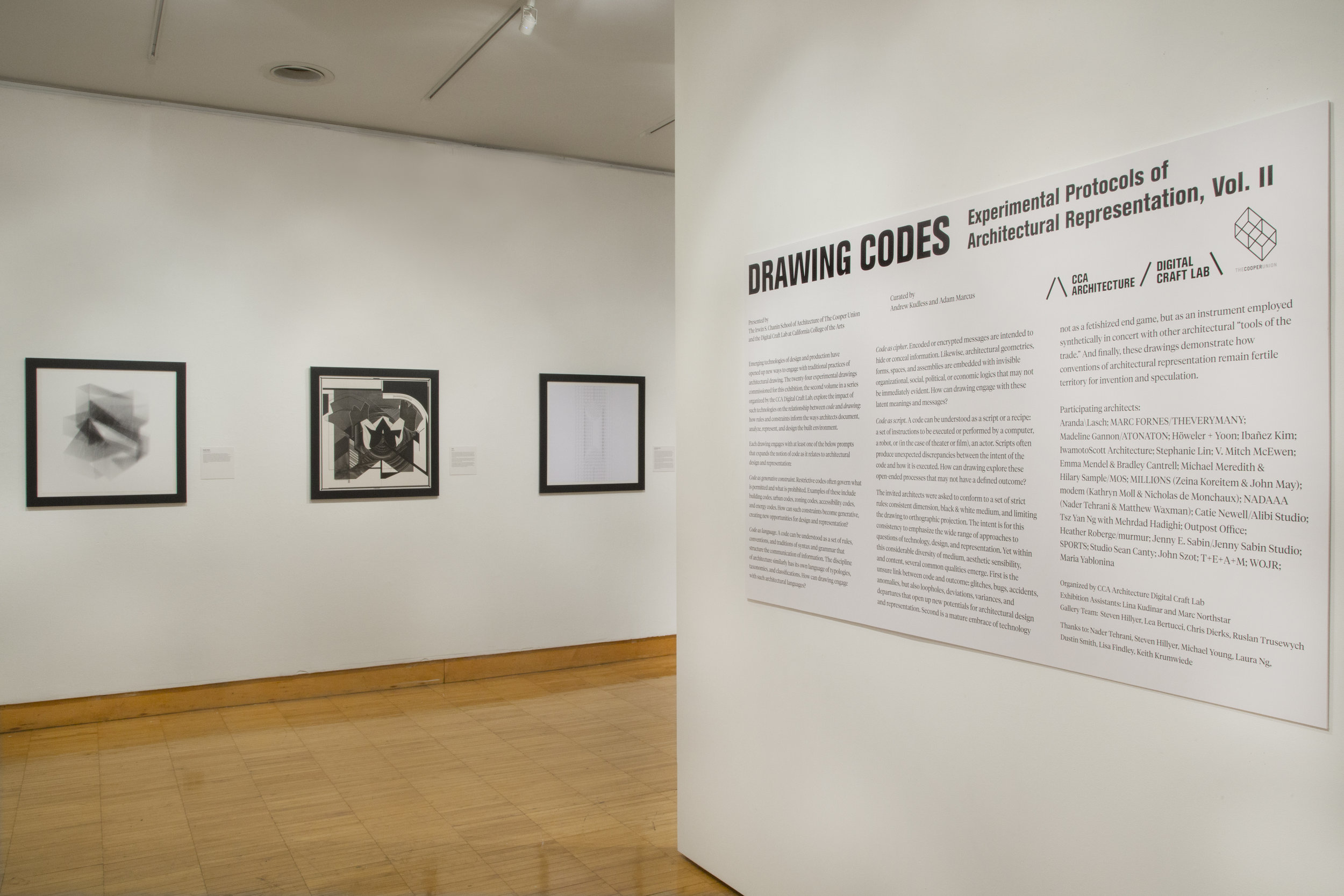

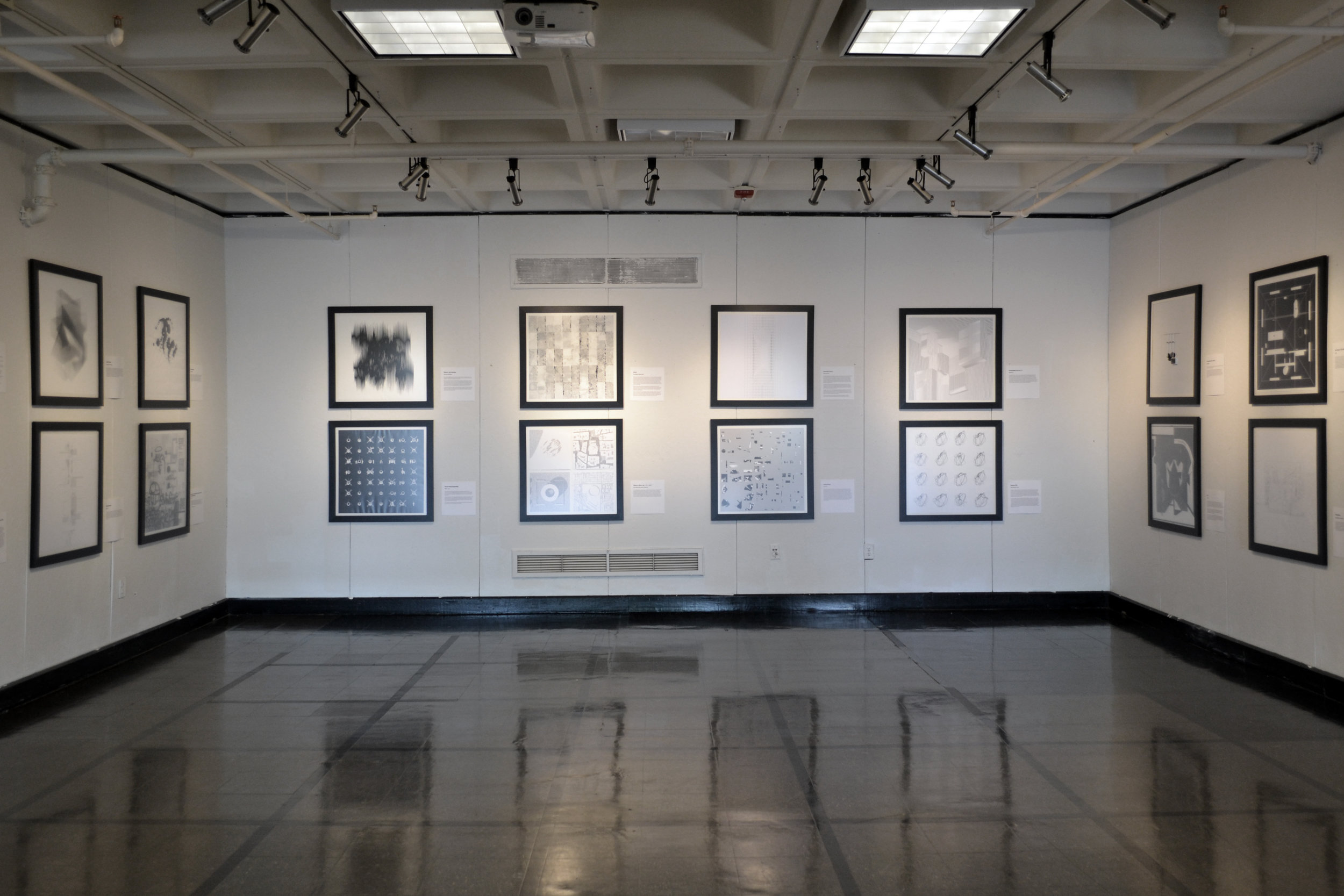
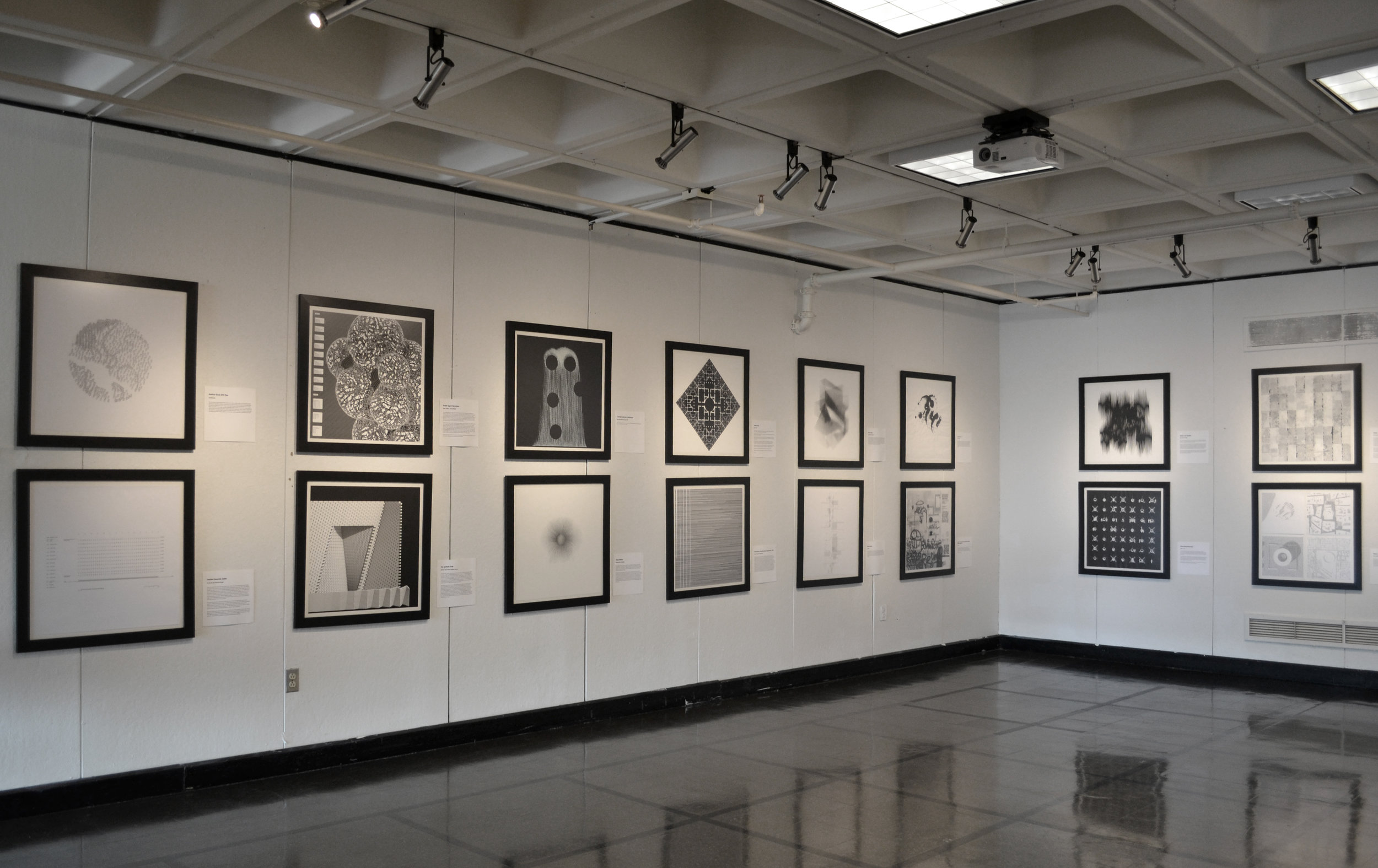
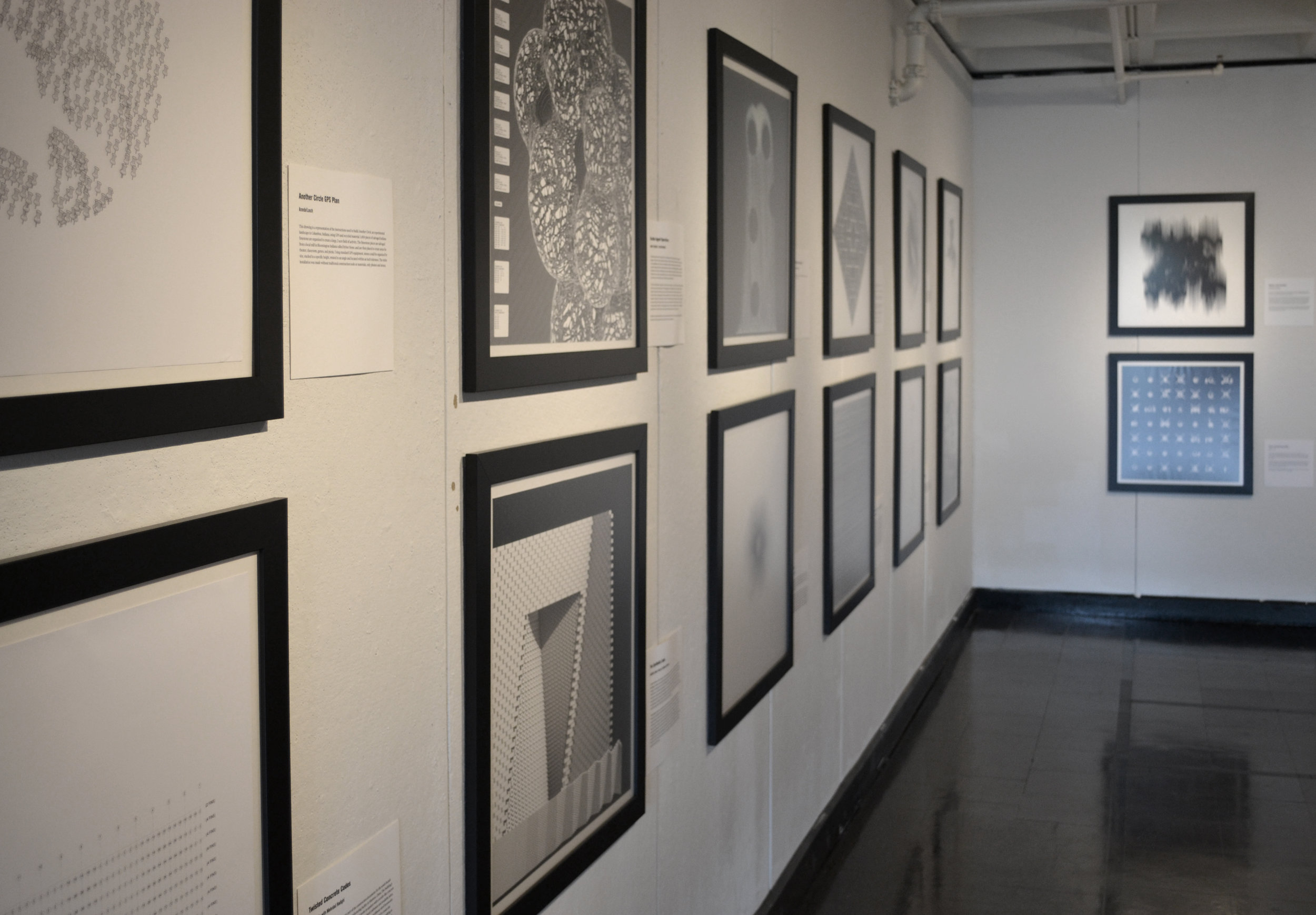
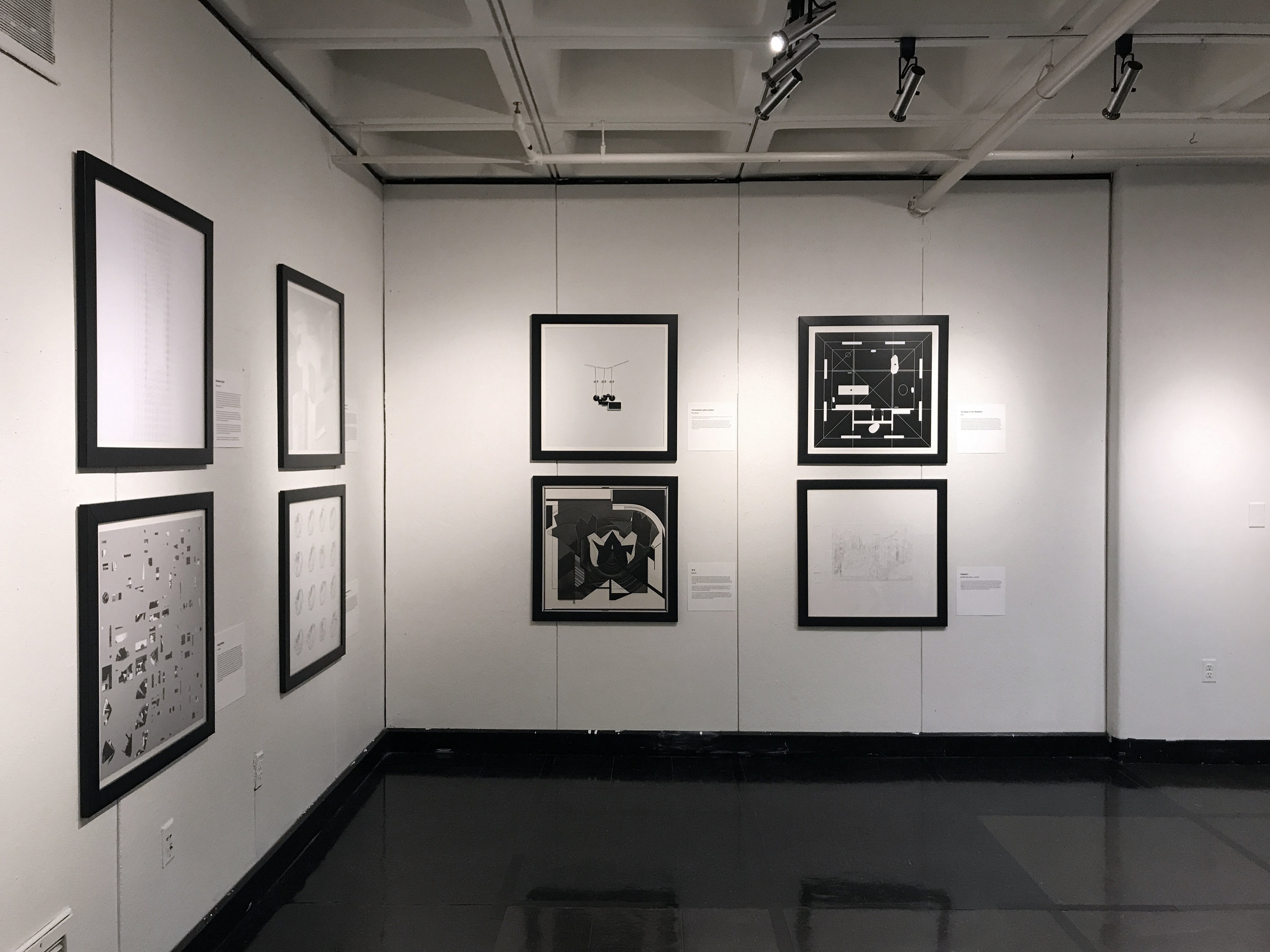
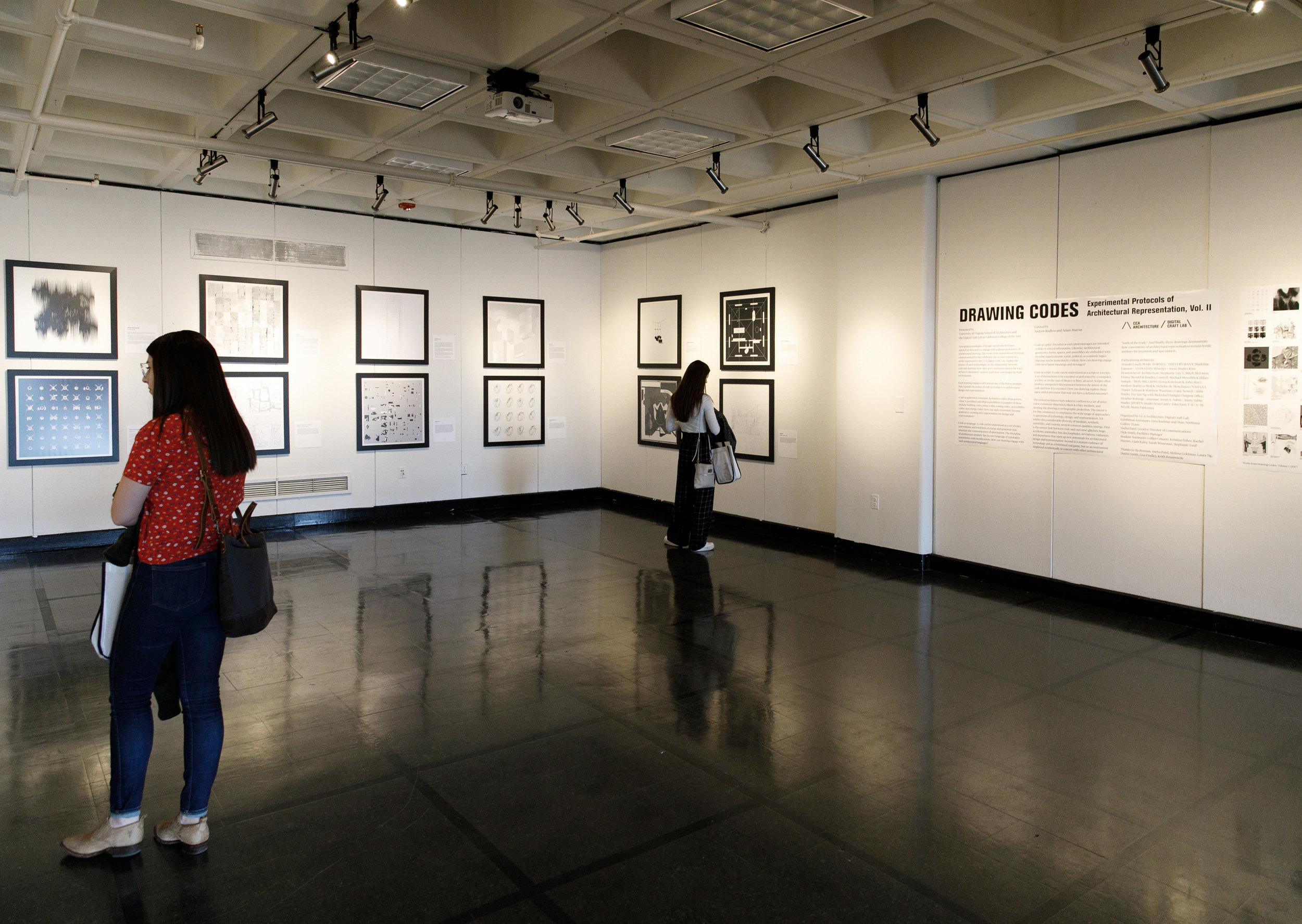
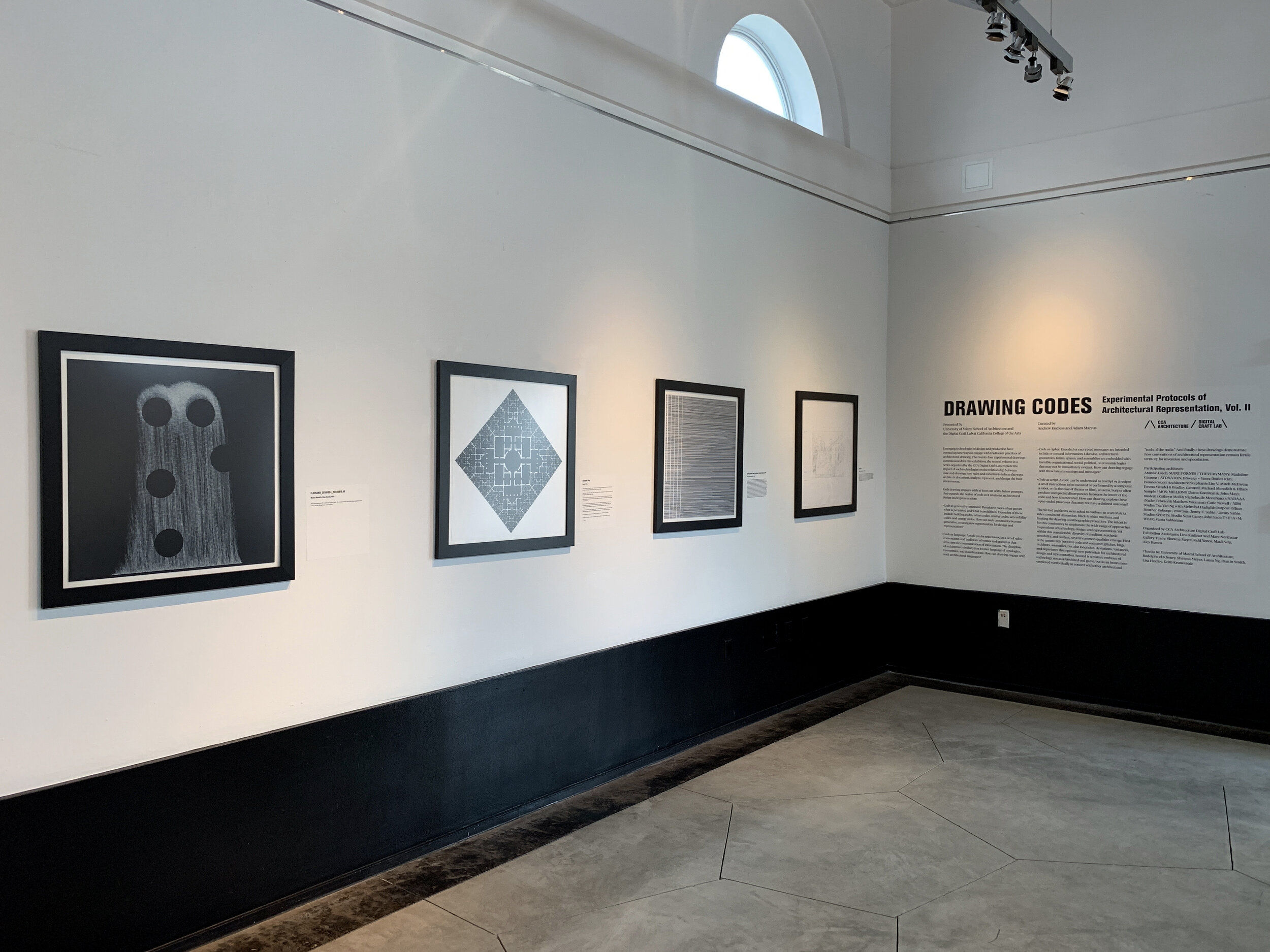
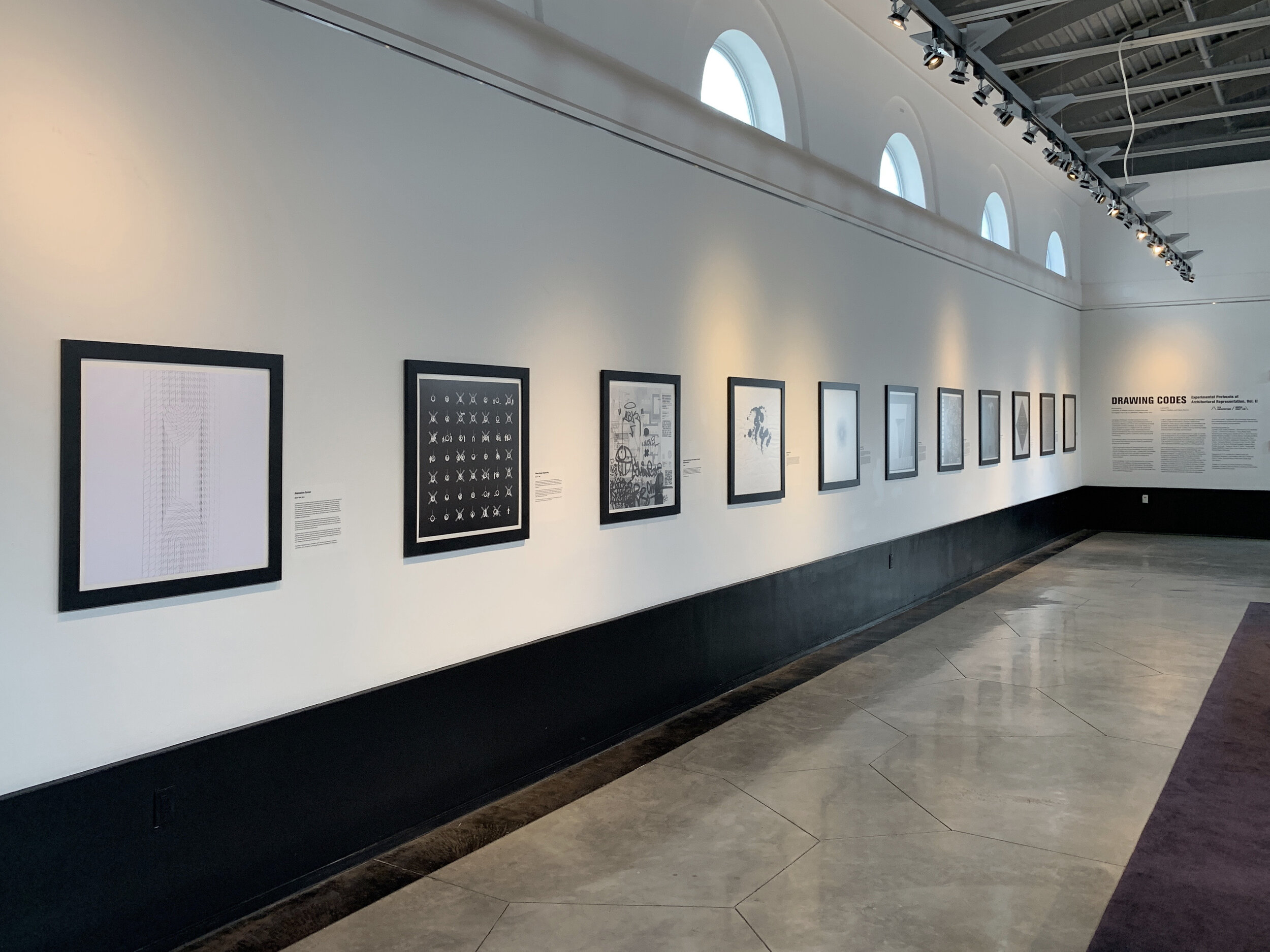


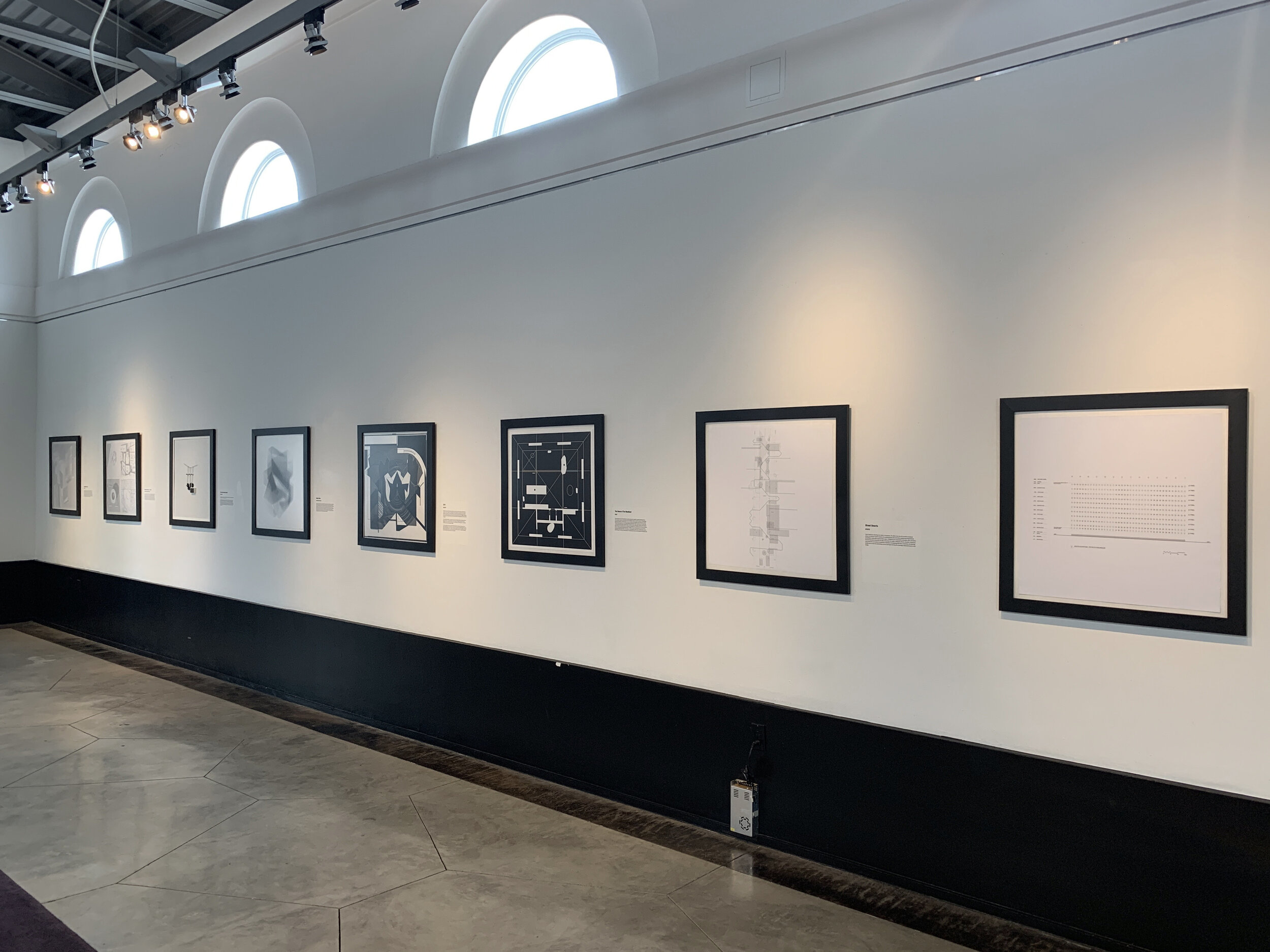
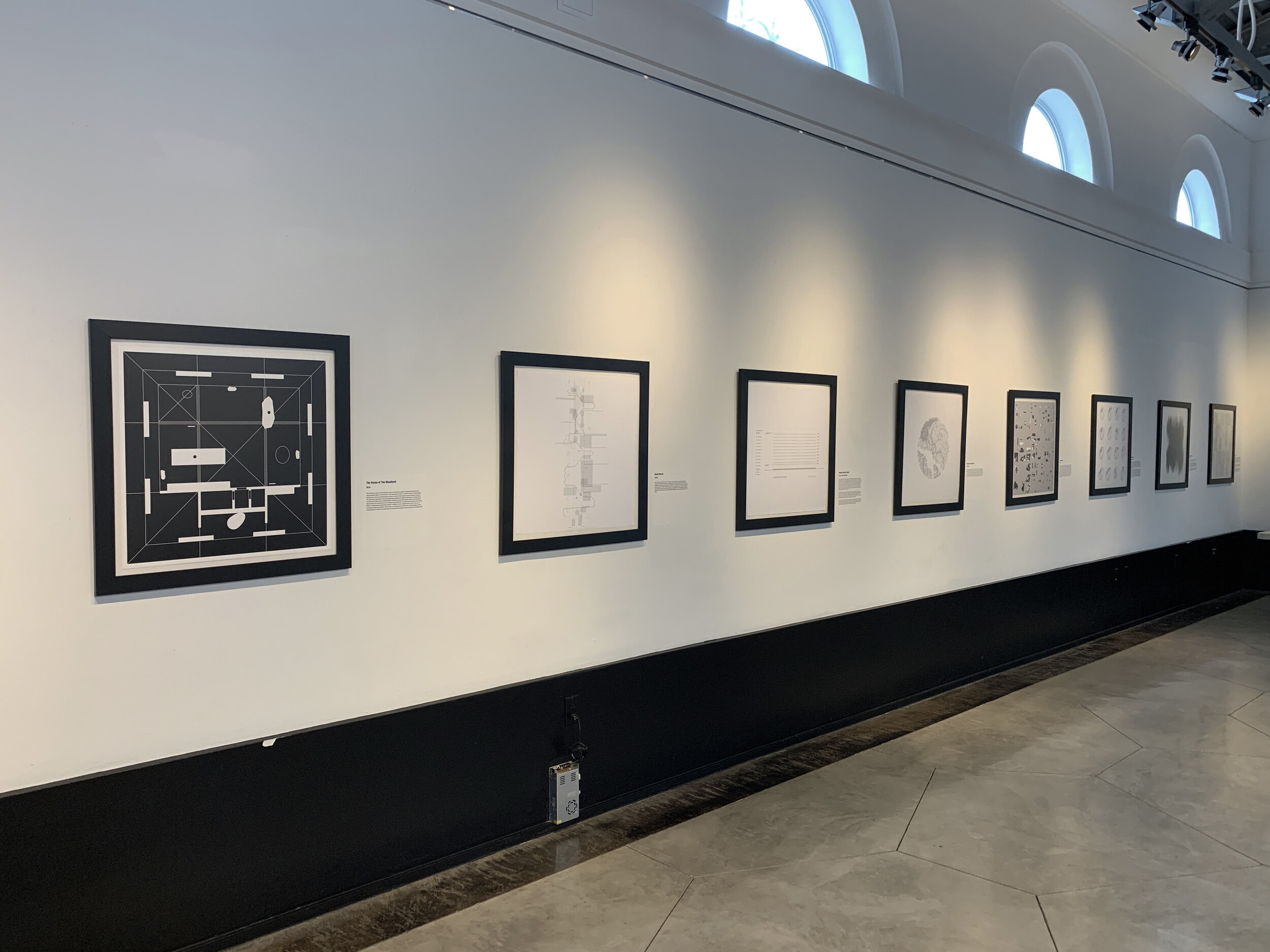
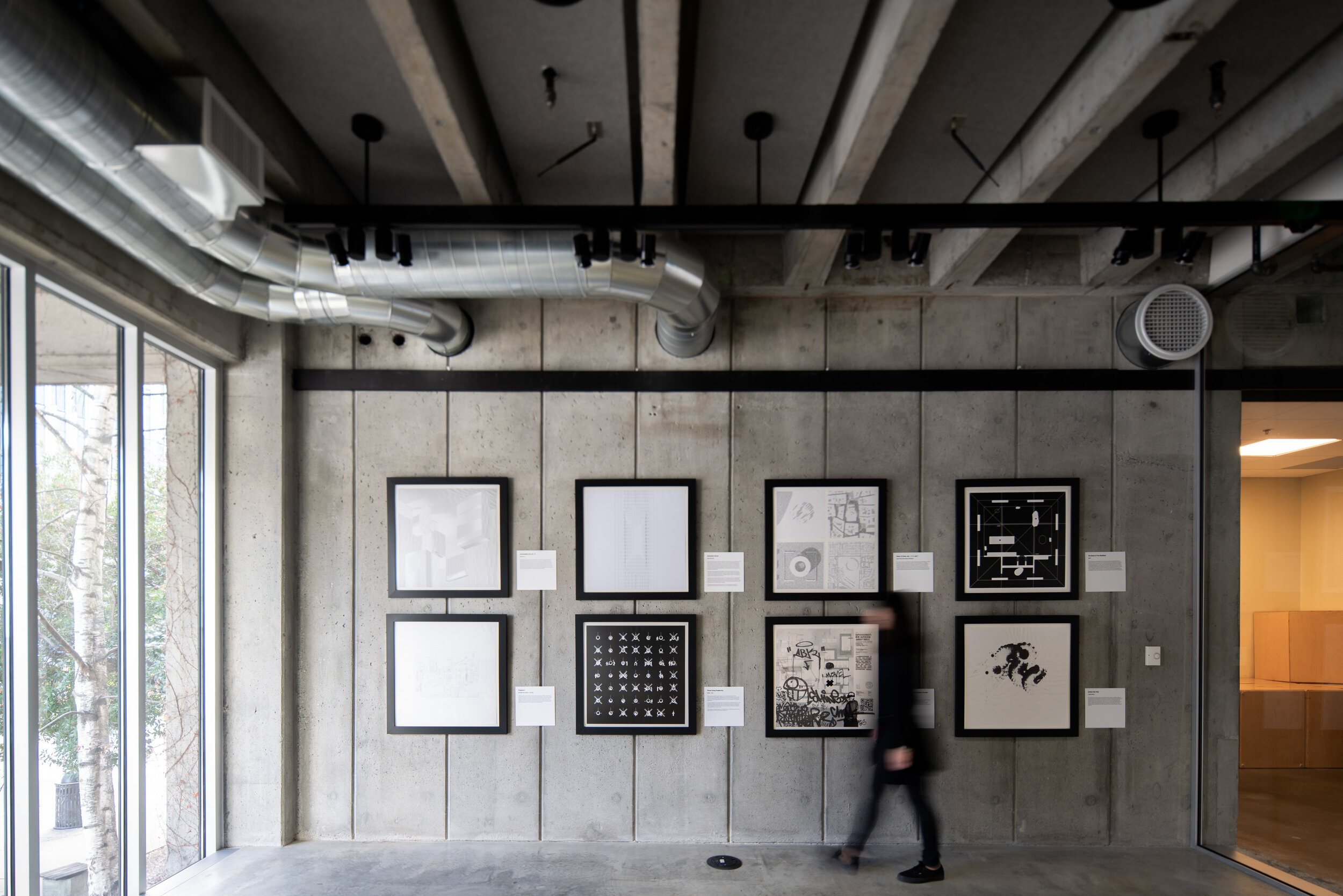
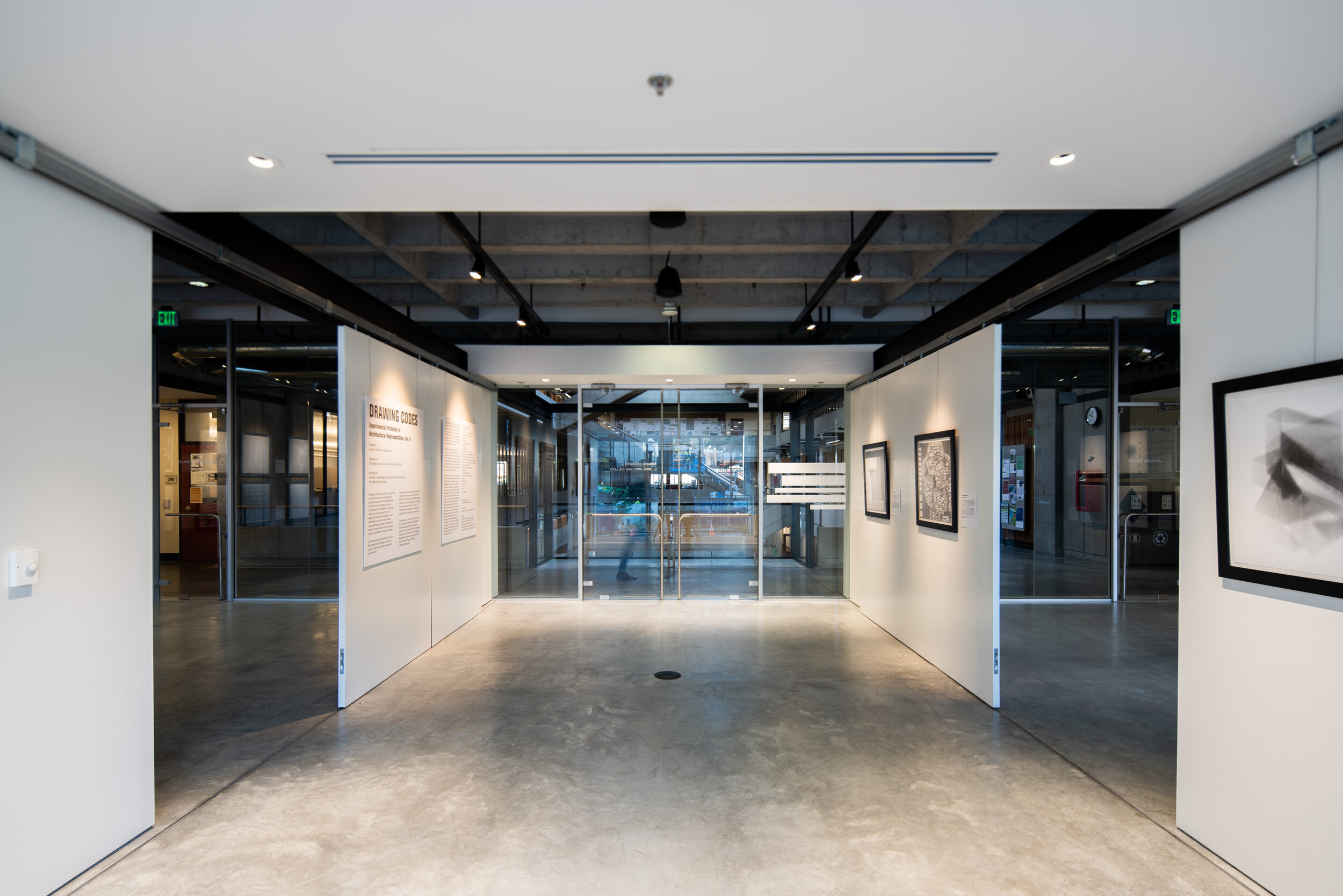
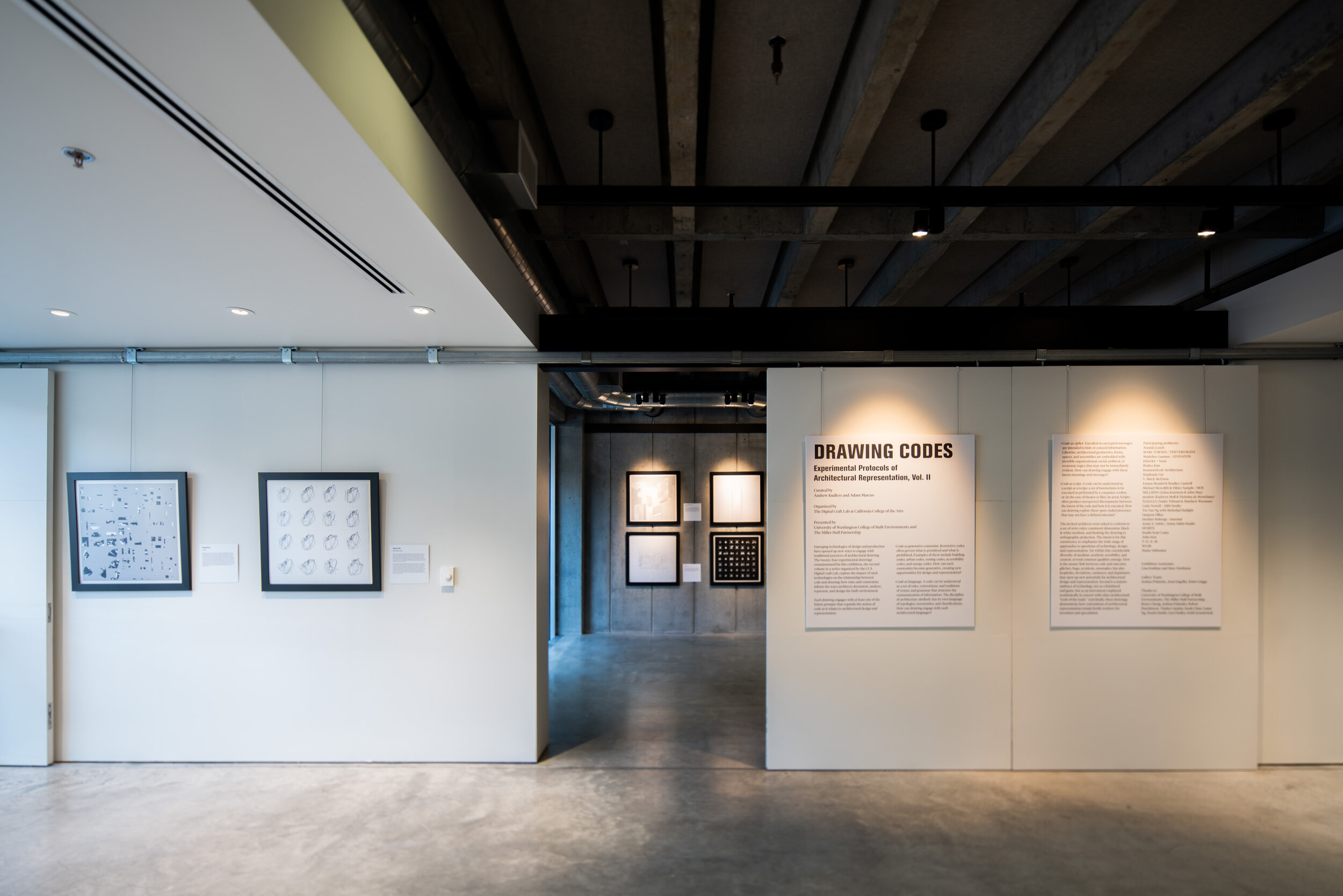
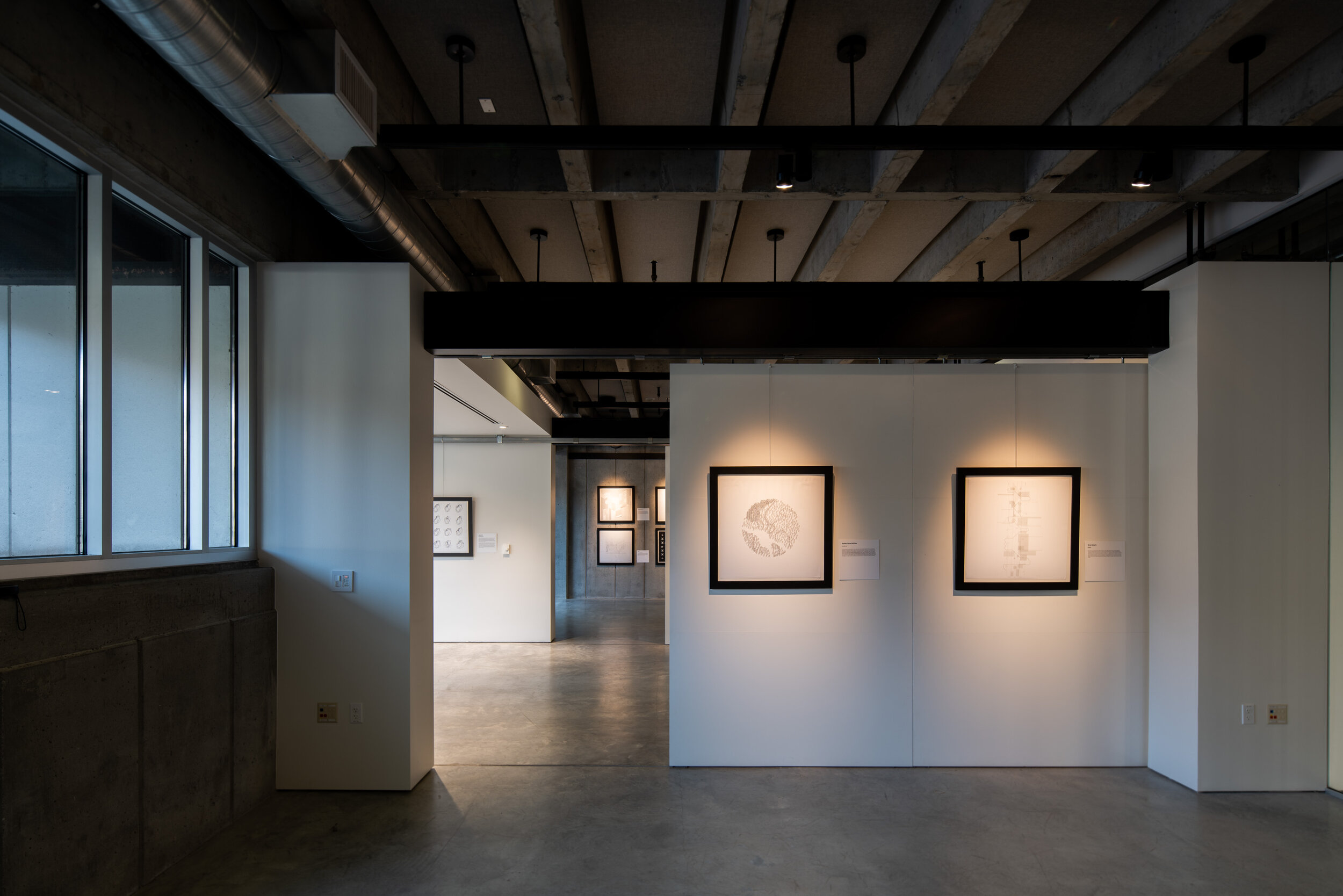
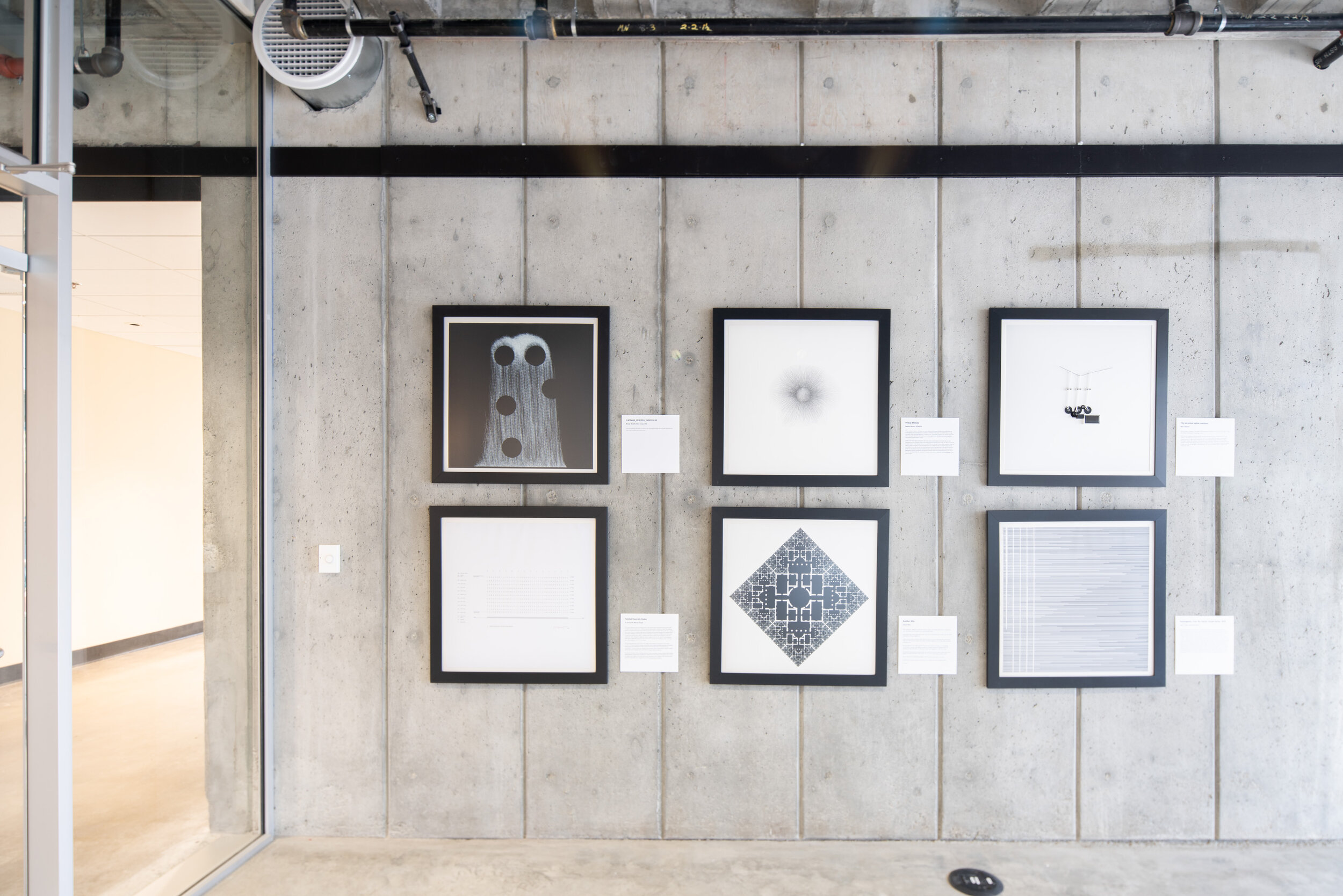
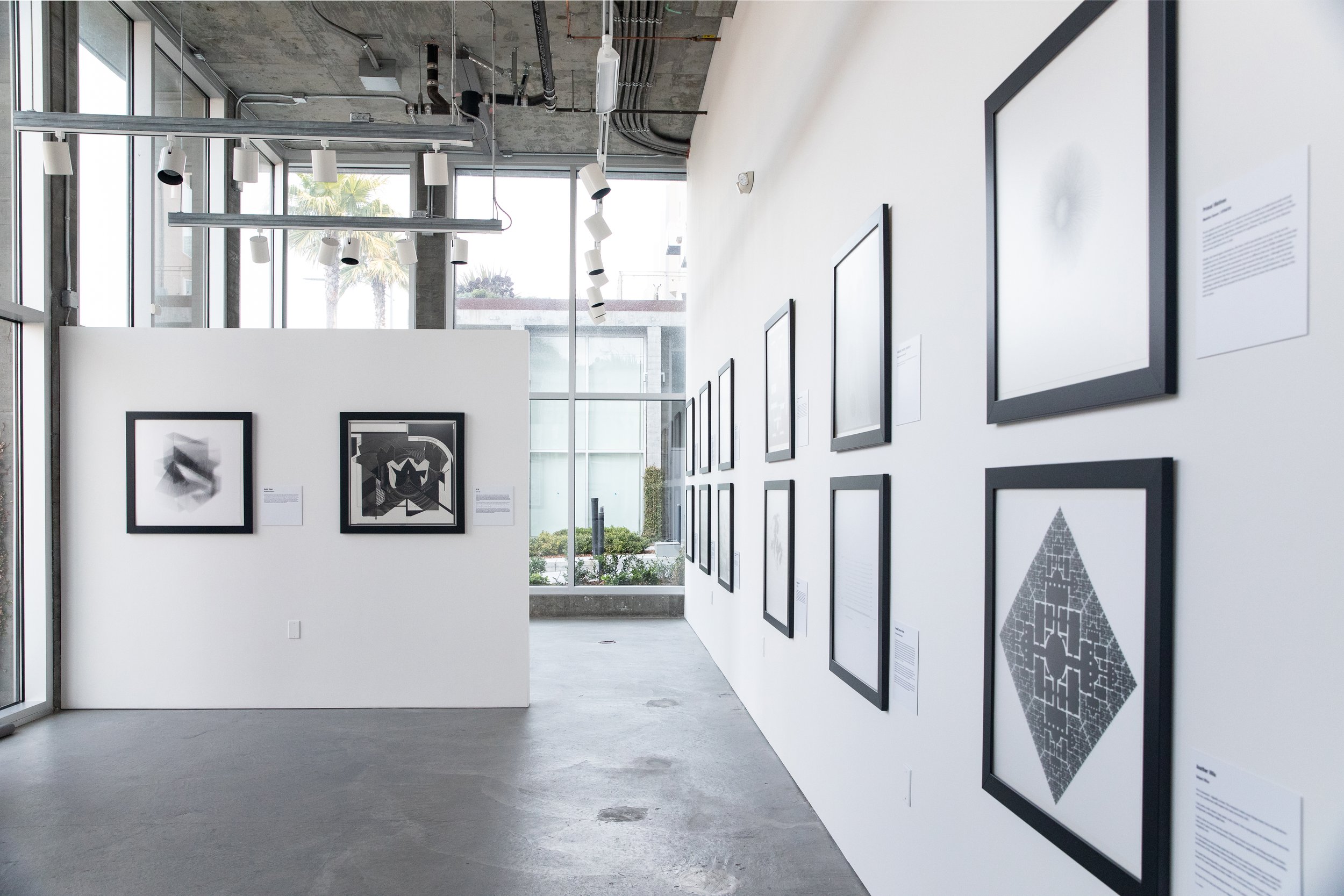
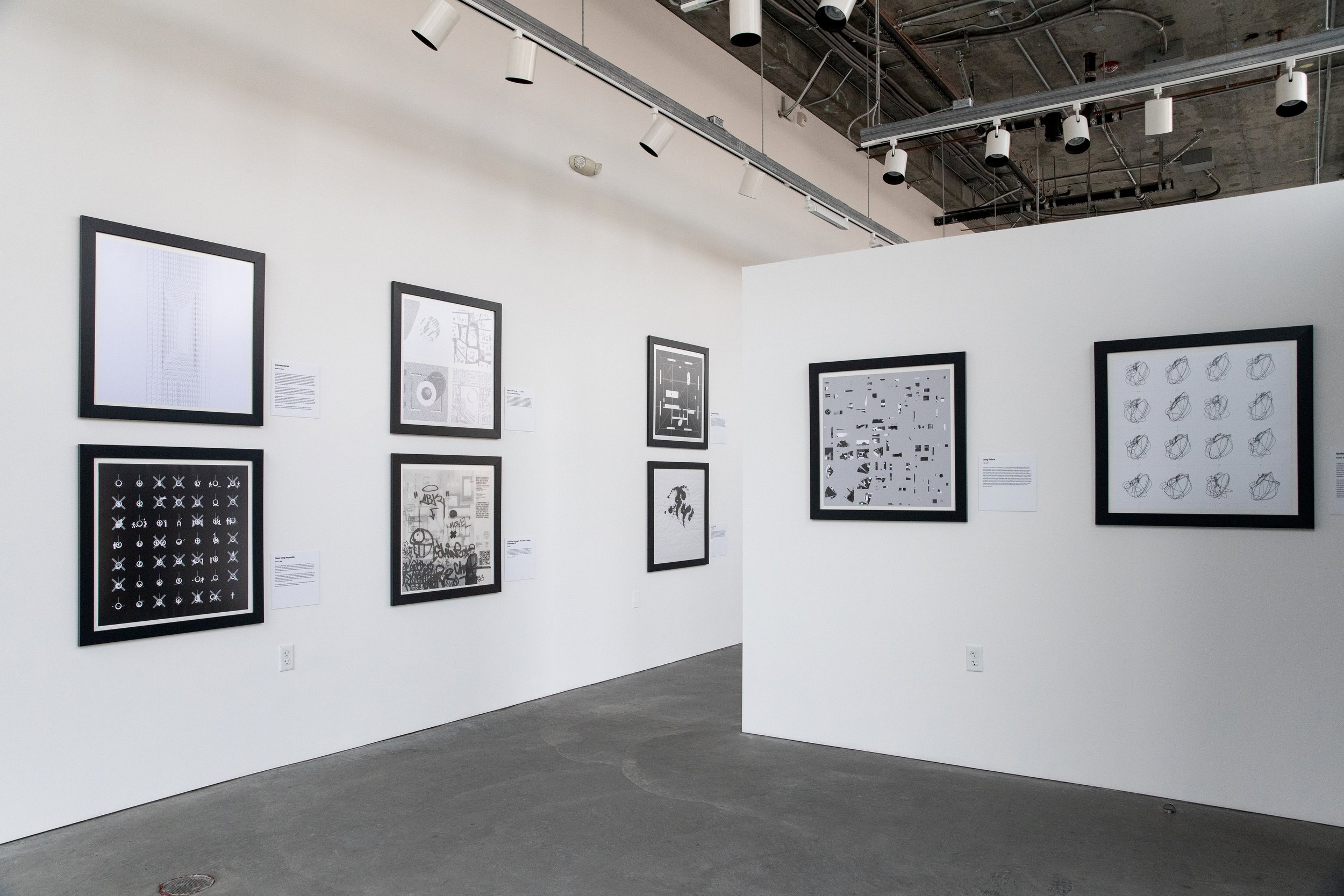
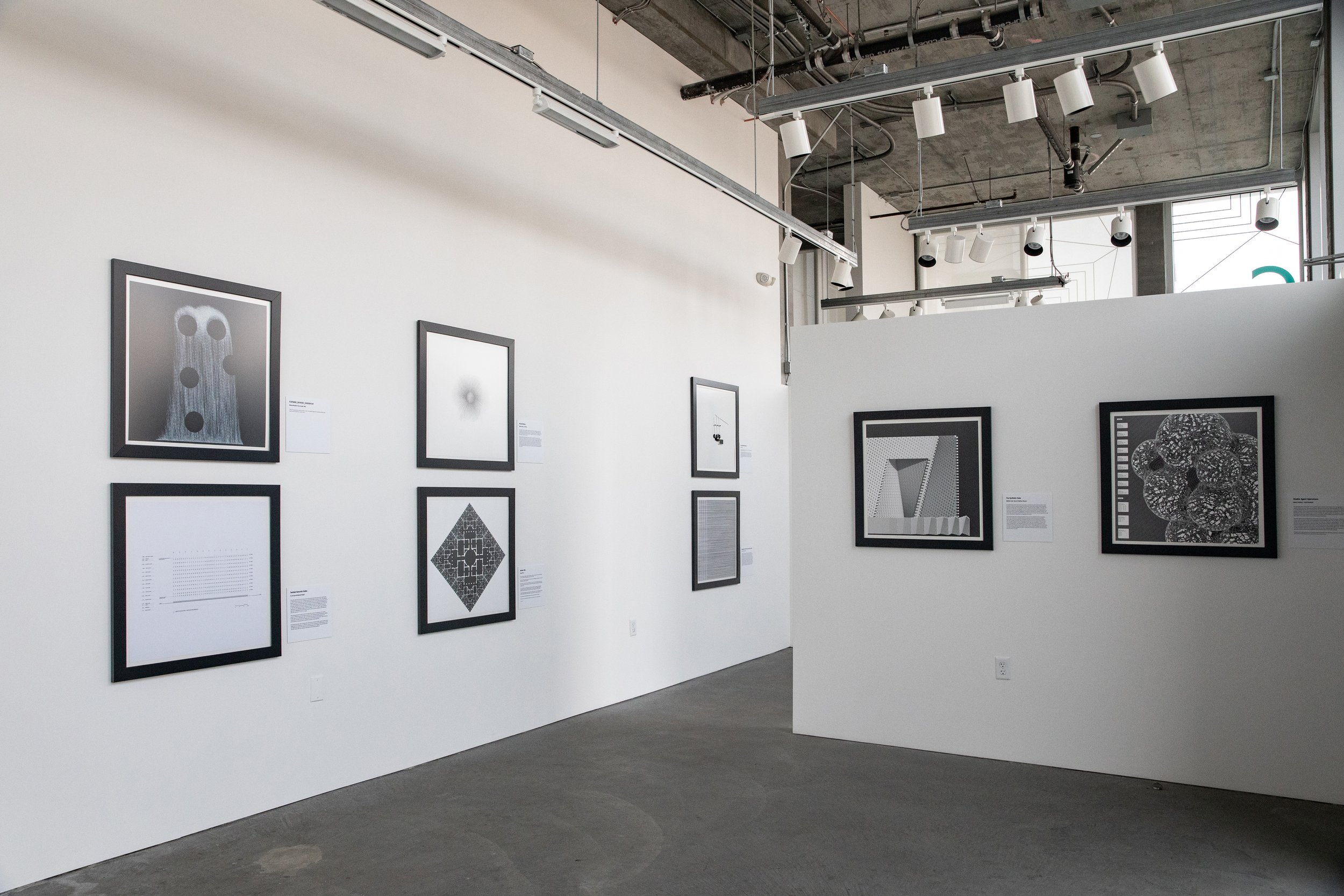
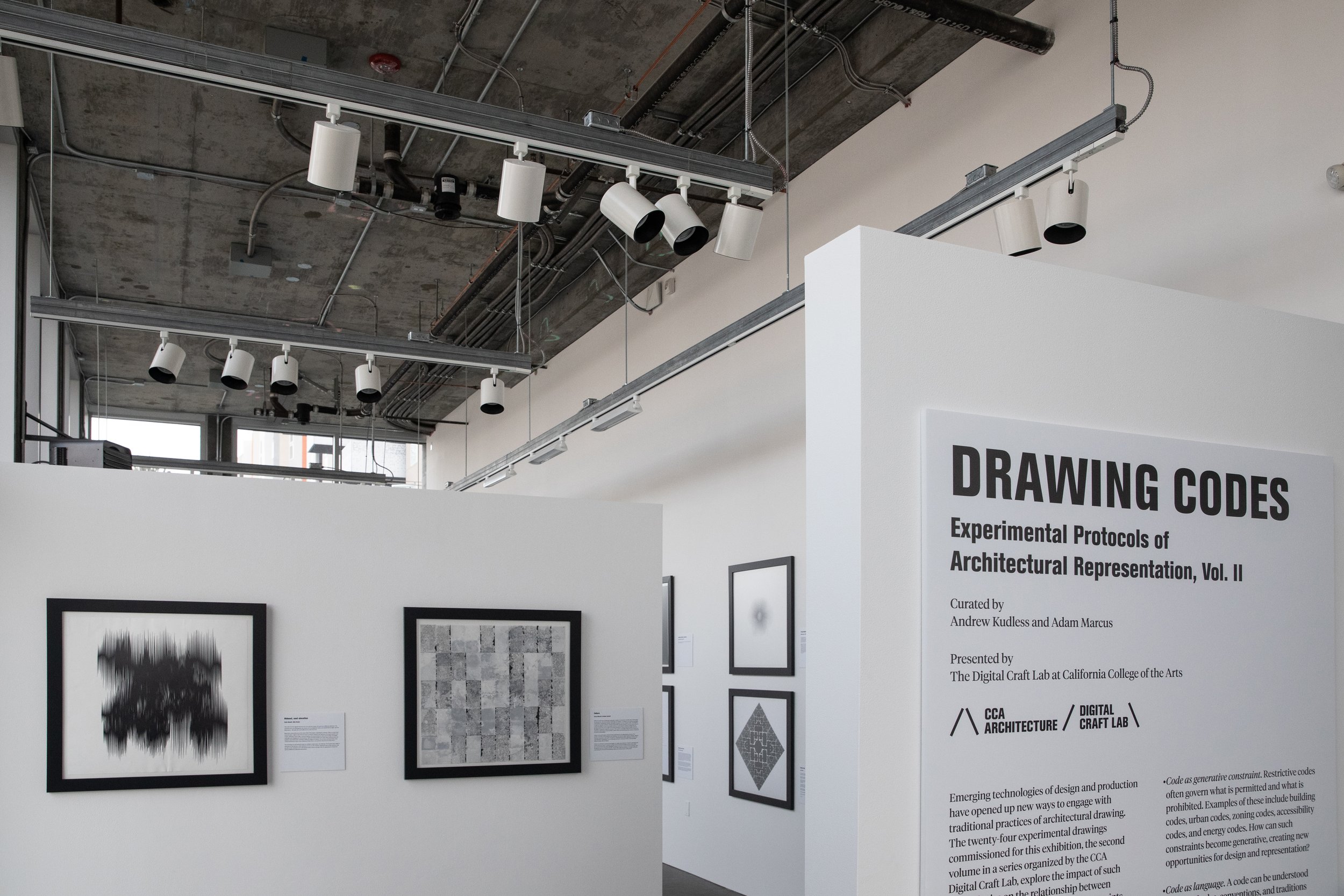
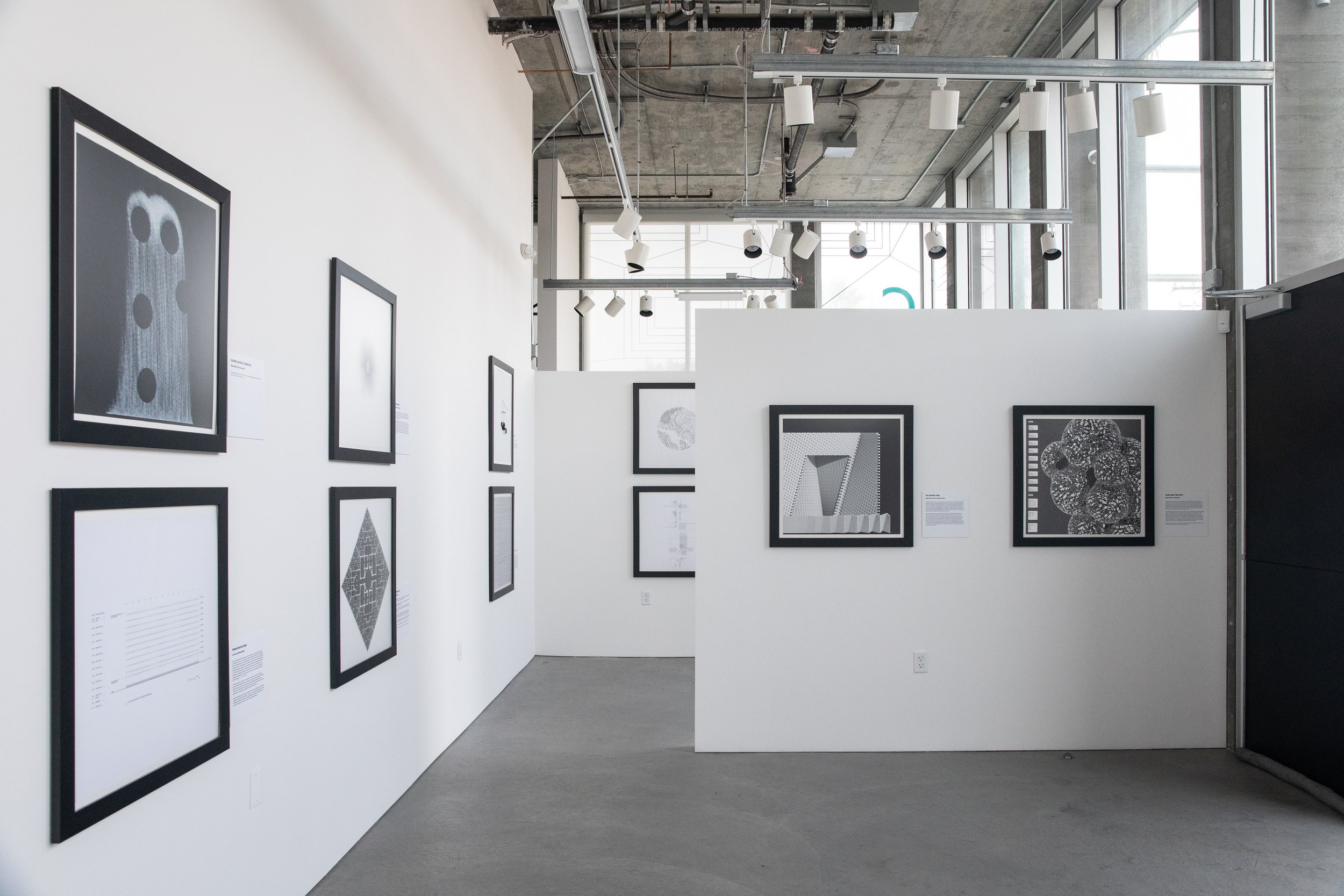















































by Mark Ericson
Project Statement
Tractate four of Guarino Guarini’s treatise, Architettura civile (1735), deals entirely with orthographic projection. In “Observation Nine” of chapter three in the fourth tractate, Guarini describes the process of obtaining the drawings for a vault that intersects a cylinder at an oblique angle. He begins by describing the oblique section of a cylinder as an ellipse, referencing Euclid. He goes on to explain that since we can measure the height and breadth of the ellipse in the orthographic drawings, we have the information to construct the ellipse that is the section through the cylinder at the plane of intersection with vault. He also provides a template for the ellipse and instructs the reader to make a drawing instrument out of “strong card” using the template as a guide. Guarini utilized an argument from Euclid to create an instrument that draws curves specific to the angle of incidence between a cylinder and an orthographic projection.
The drawing included in this exhibition, is part of series that translates the written and drawn instructions from the fourth tractate of Architettura civile, into a set of repeatable procedures that vary over time. This particular drawing uses the techniques of “Observation Nine” to orthographically project a semicircle onto cones moving about the minor and major orbits of an epicycle of ellipses. The cones vary in height, orientation, and radius over time, producing differing conic sections. Whereas Guarini produced a single static template, this drawing utilizes the same techniques to produce a set variable conic sections. Importantly, like Guarini’s work this drawing is confined to the use of points and lines on a two-dimensional plane. All of the apparent circles and curves are composed of points and line segments. There are no three-dimensional objects, surfaces, or curves of any kind. The drawing is an orthographic projection.
Bio
Mark Ericson holds a Master’s of Architecture from SCI_Arc and Bachelor of Arts from Rutgers College. His drawings have been published in LOG, 306090, and the catalog for the Museum of Modern Art exhibition Uneven Growth. His research and teaching focus on the relationship between historical practices of drawing and contemporary developments in the discipline. He is currently an Associate Professor in the School of Architecture at Woodbury University in Los Angeles.